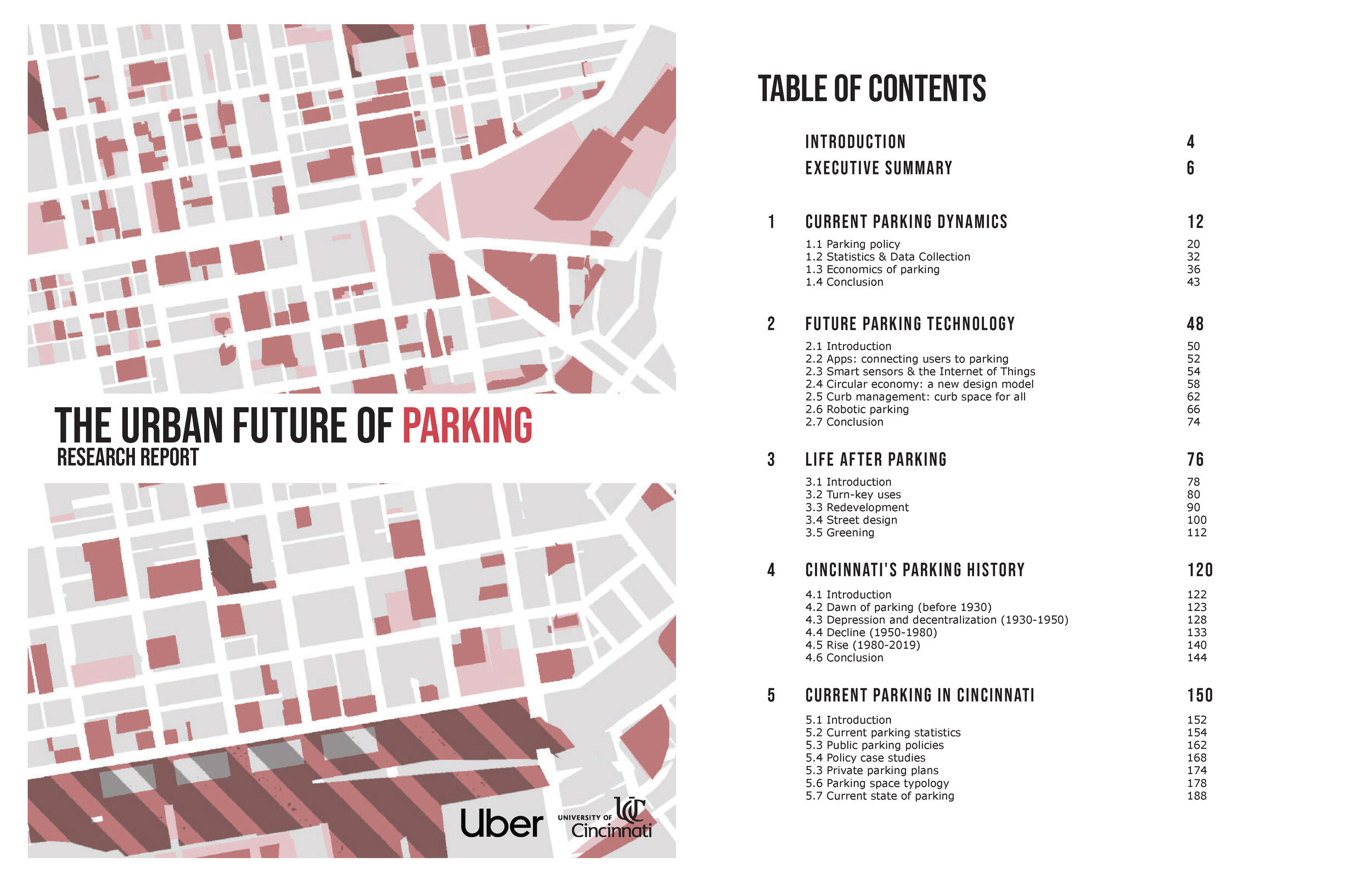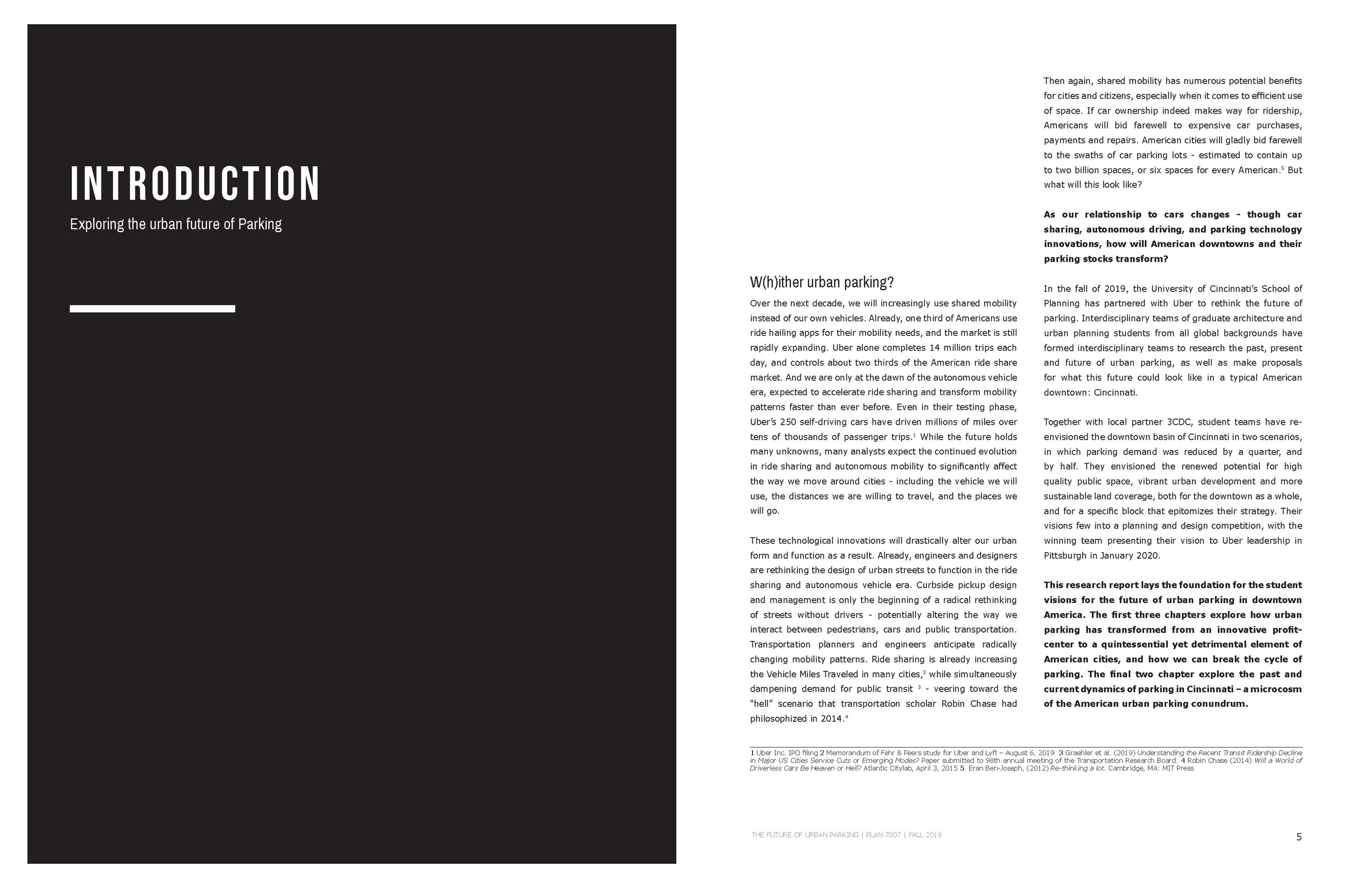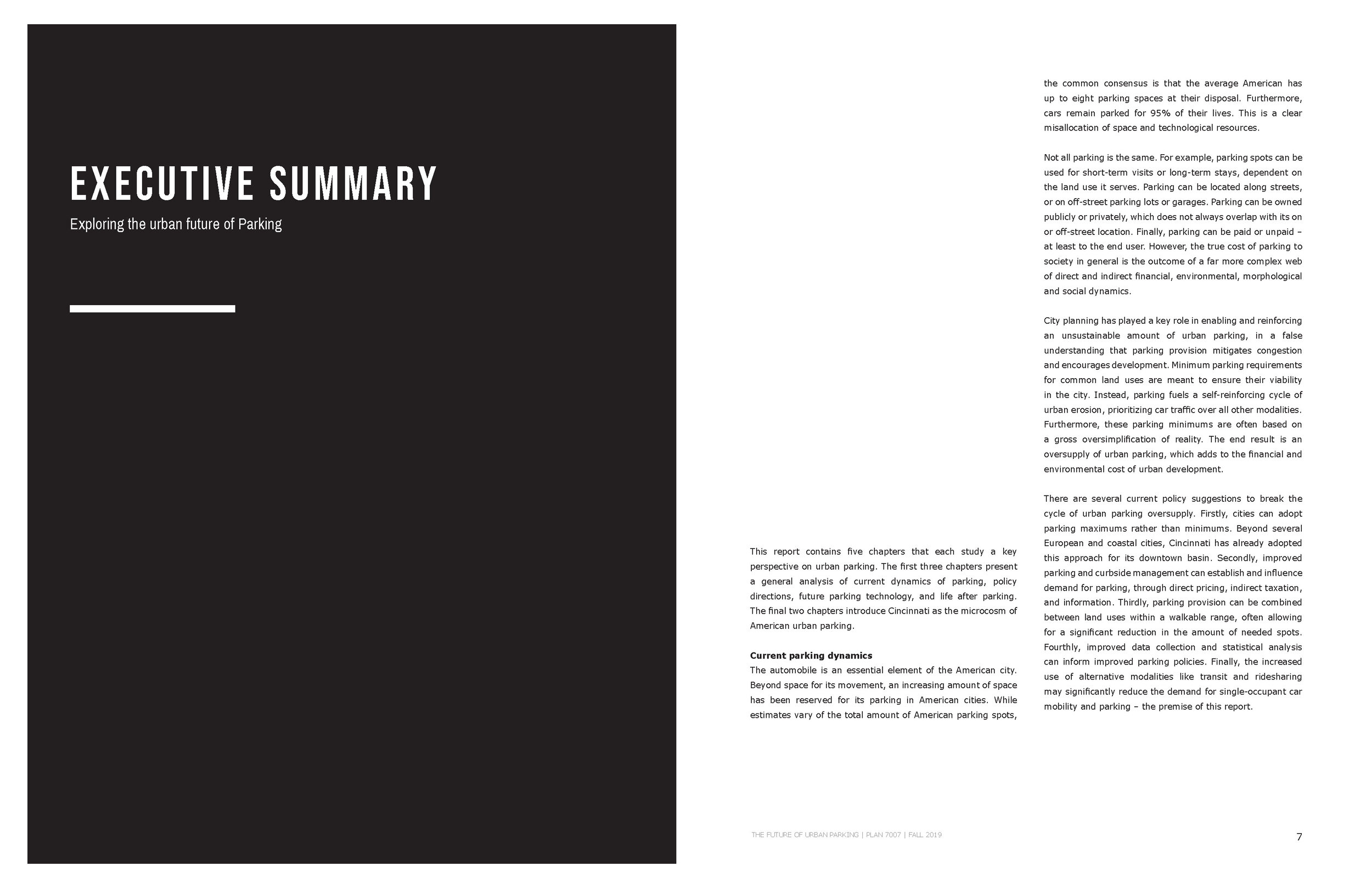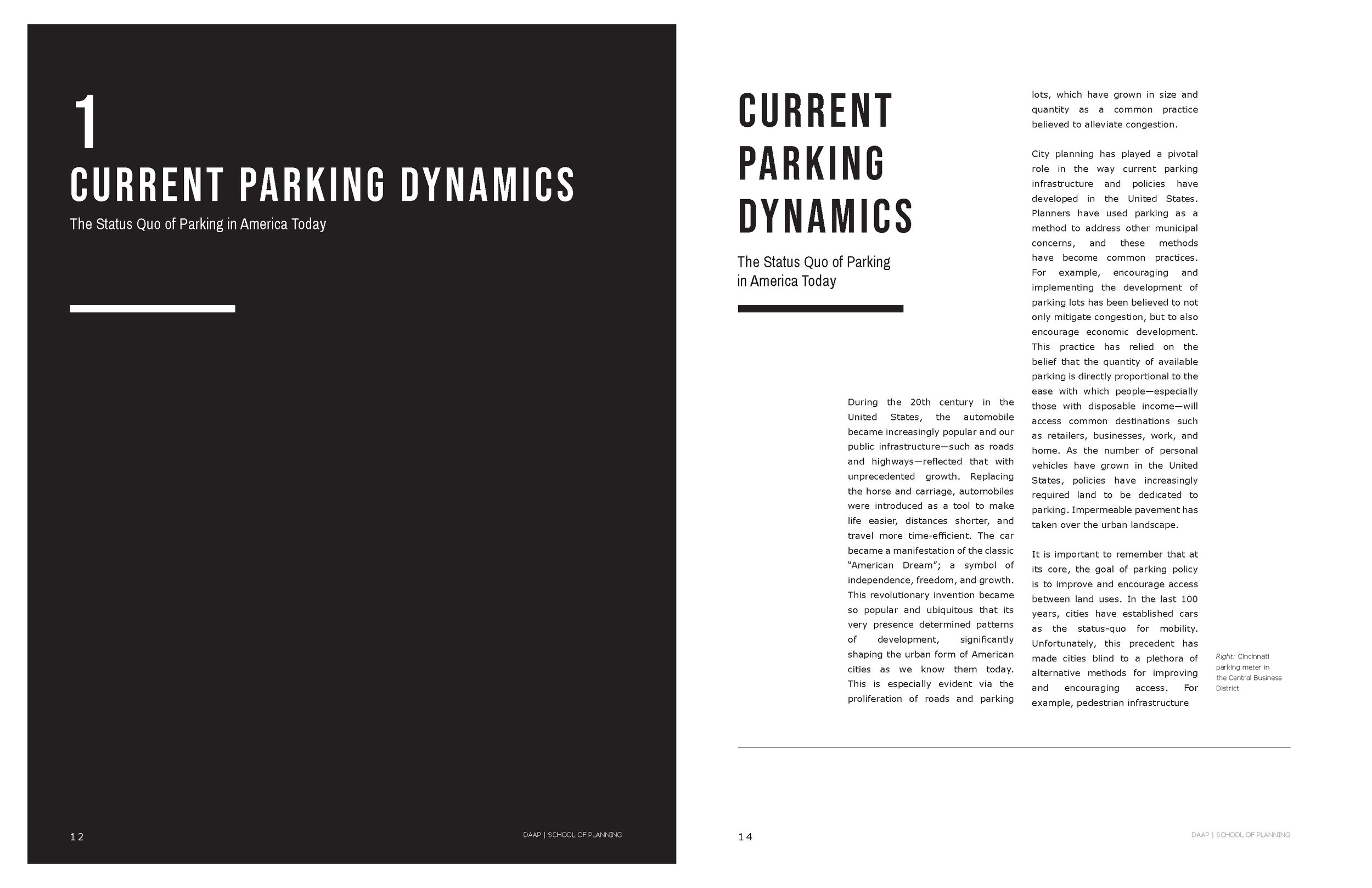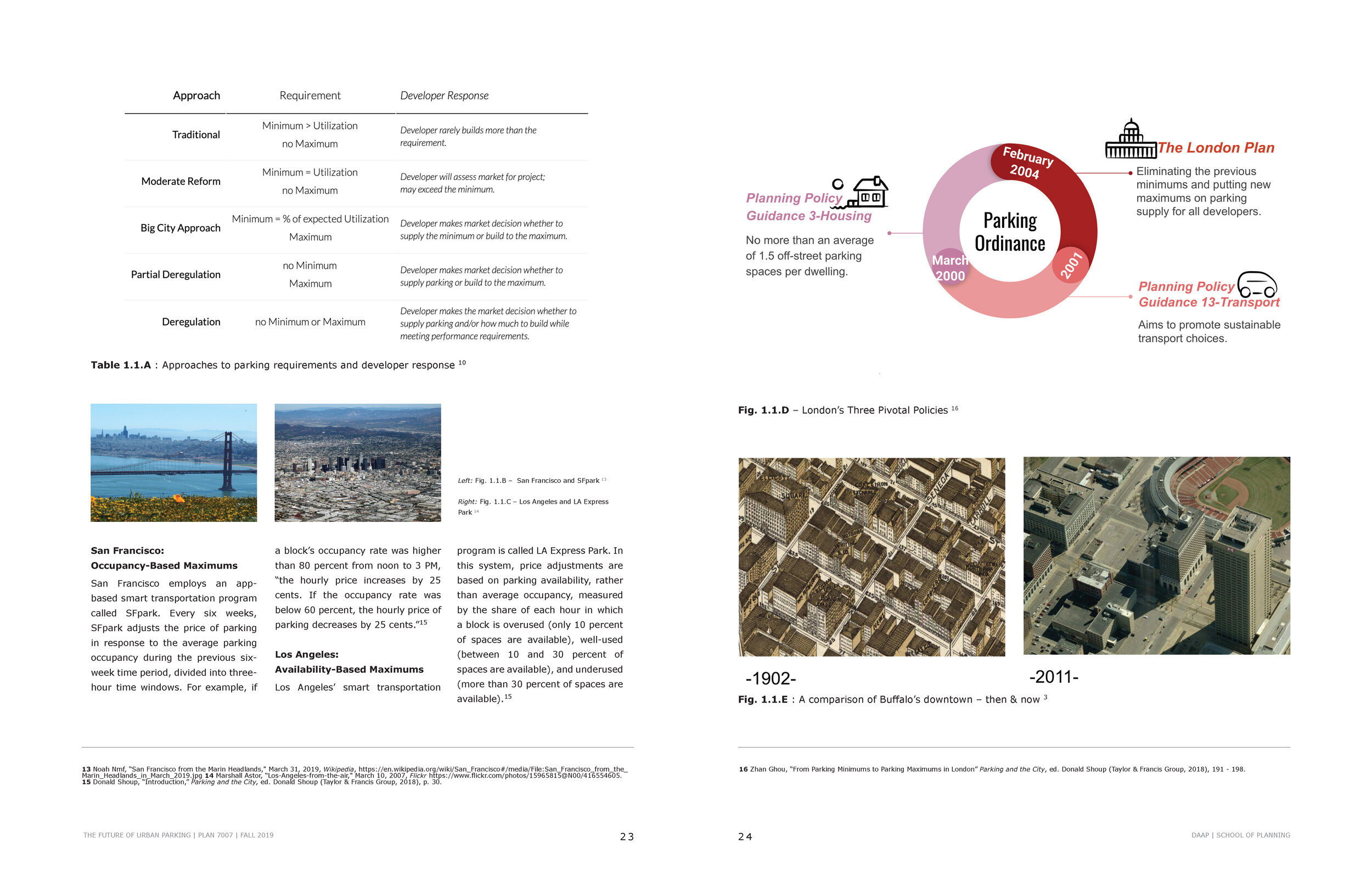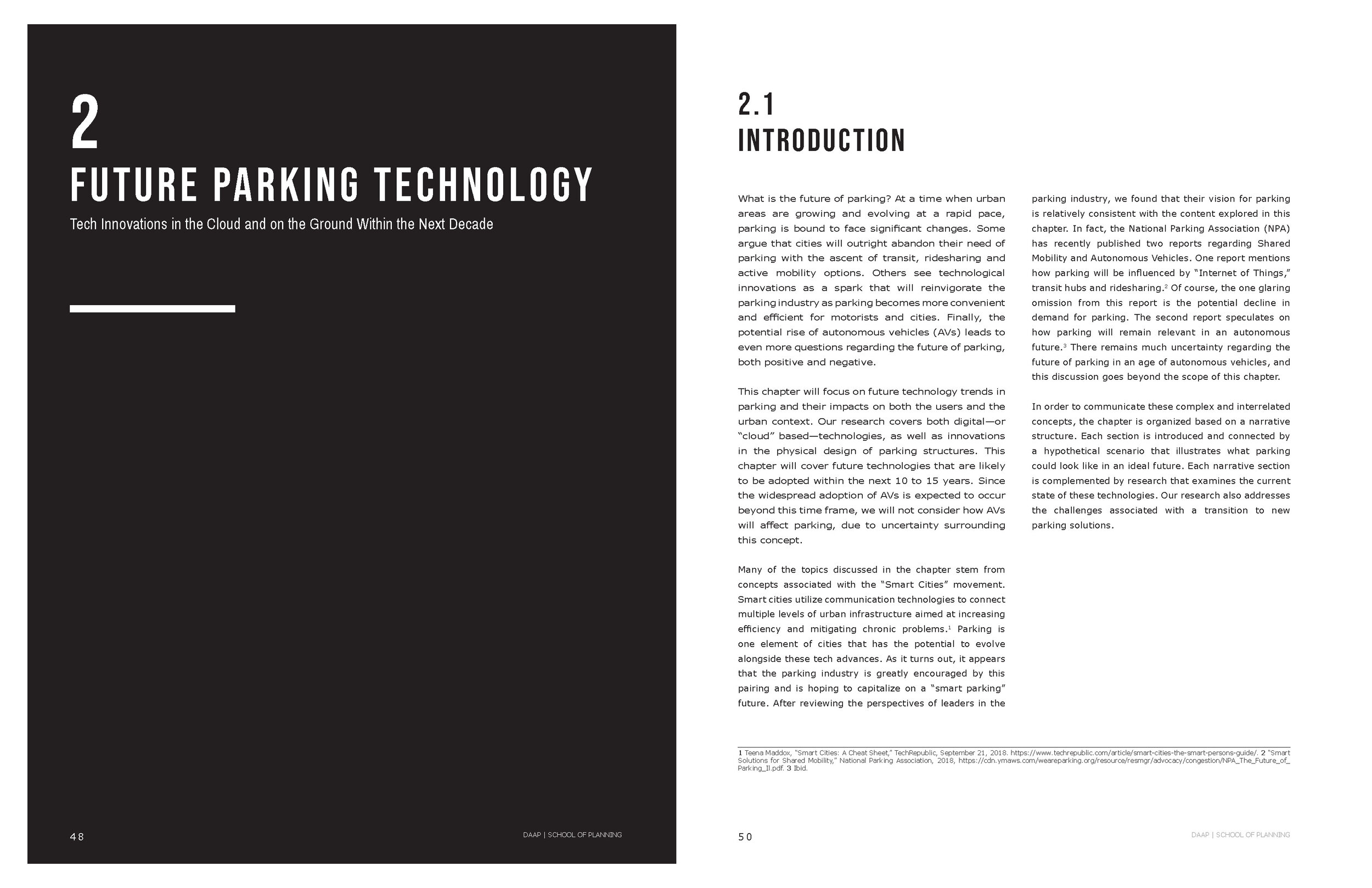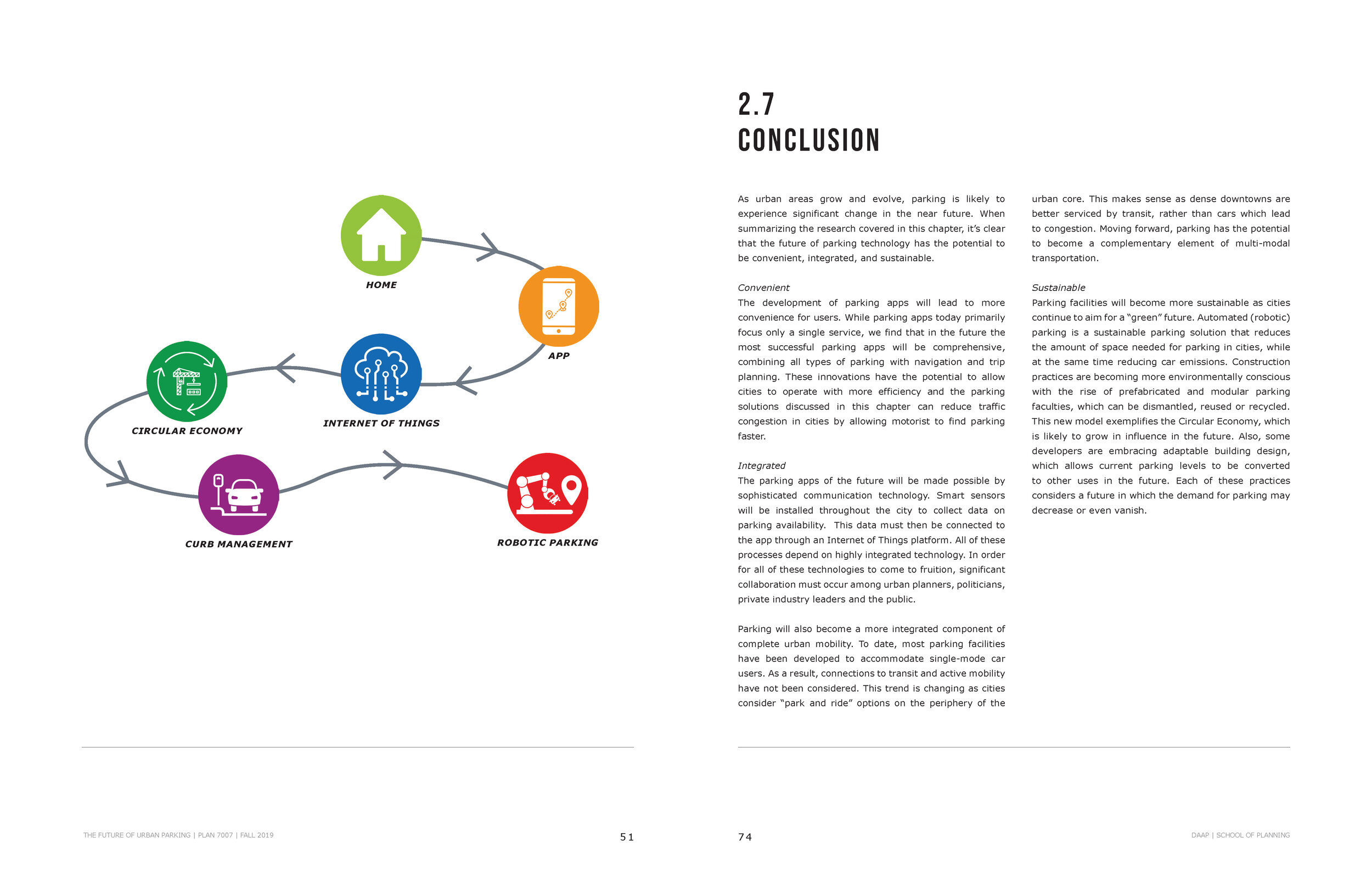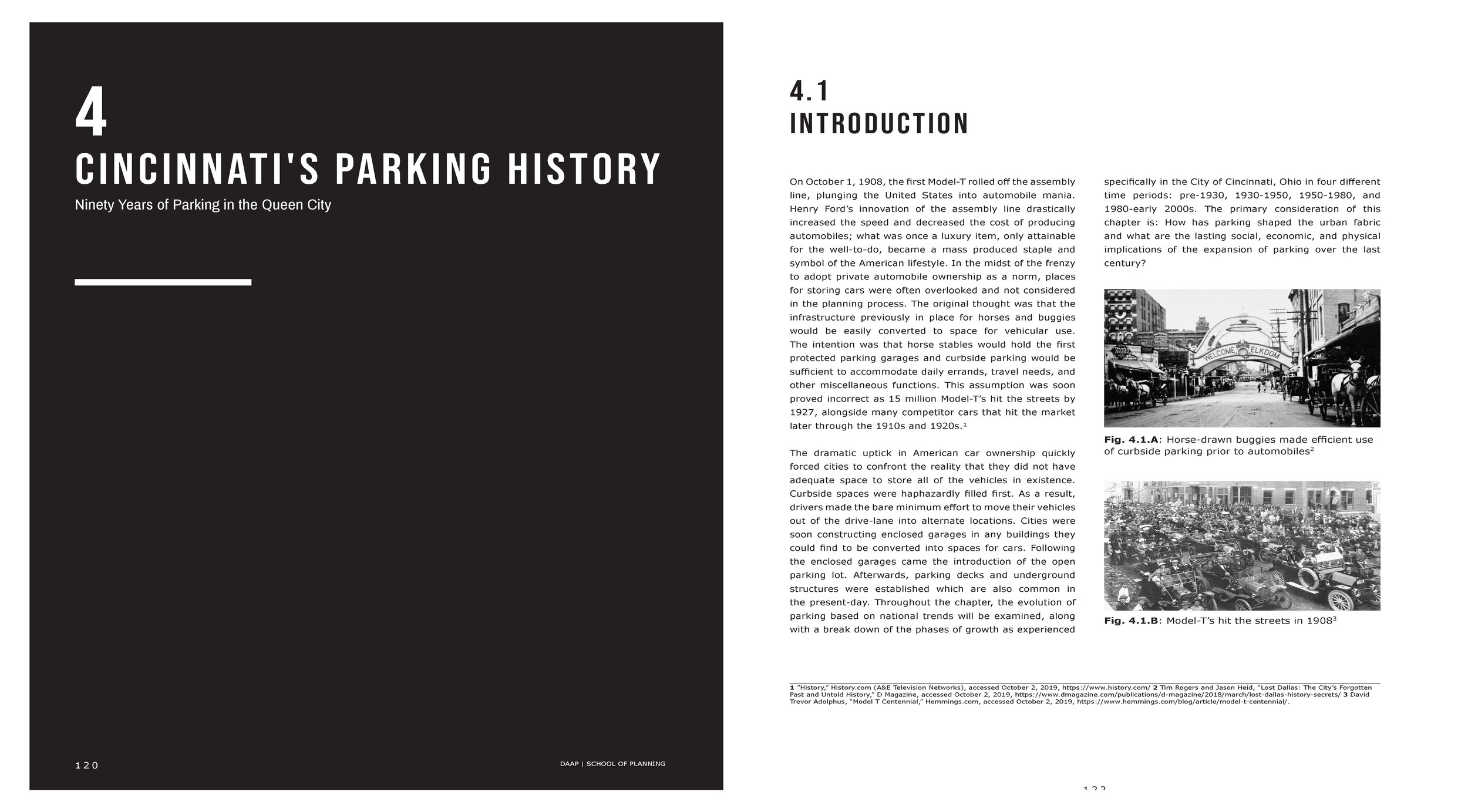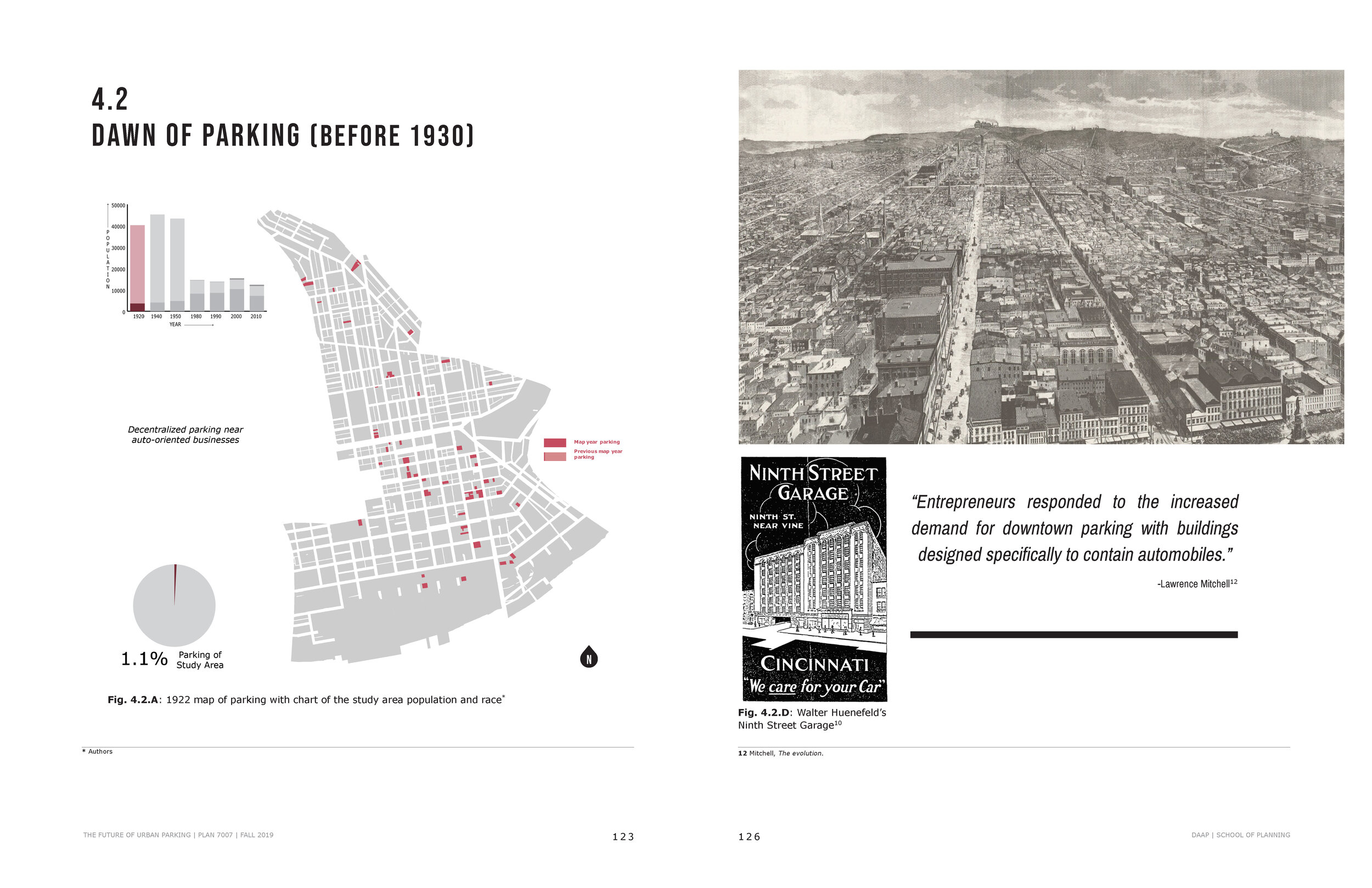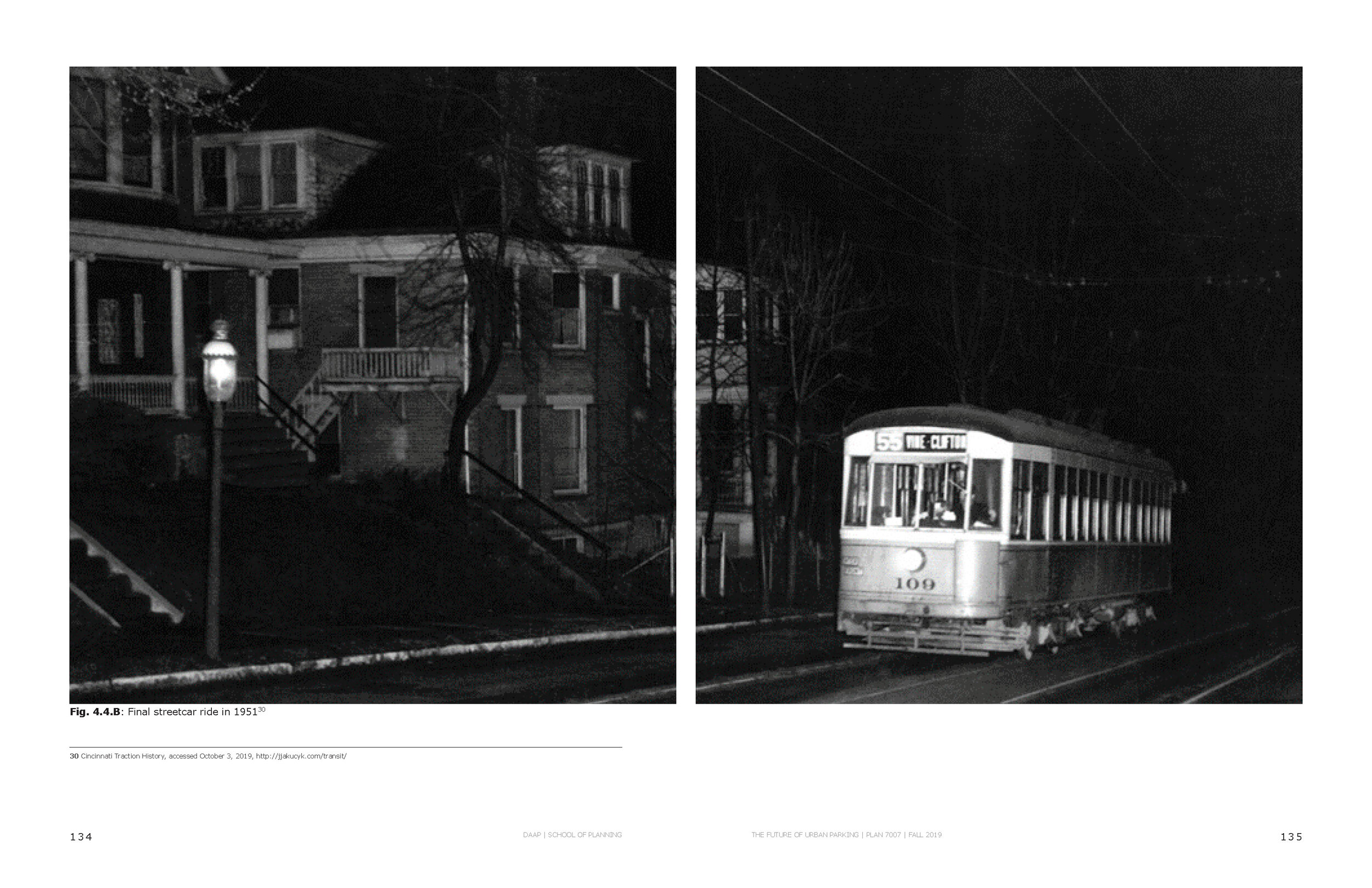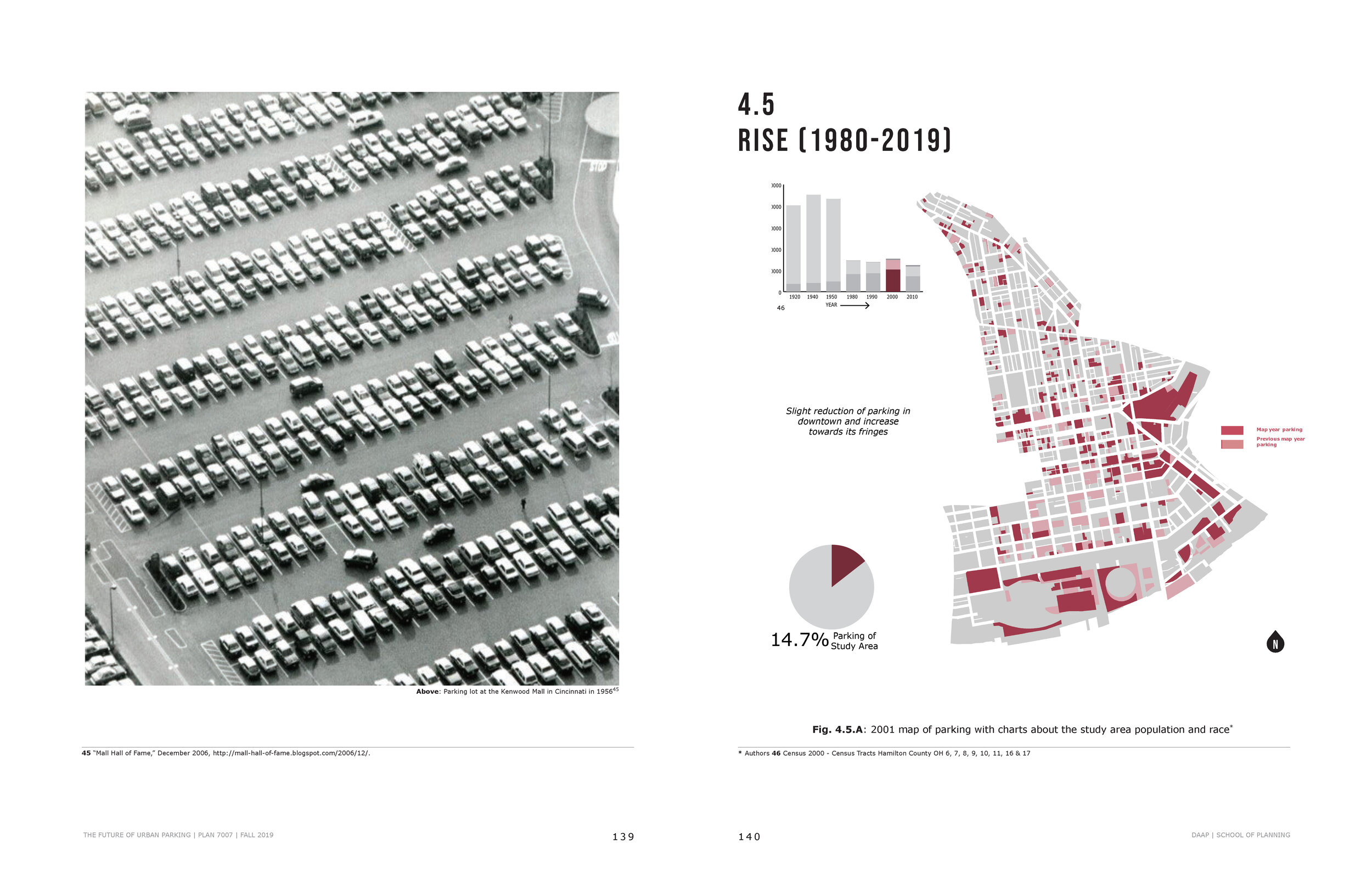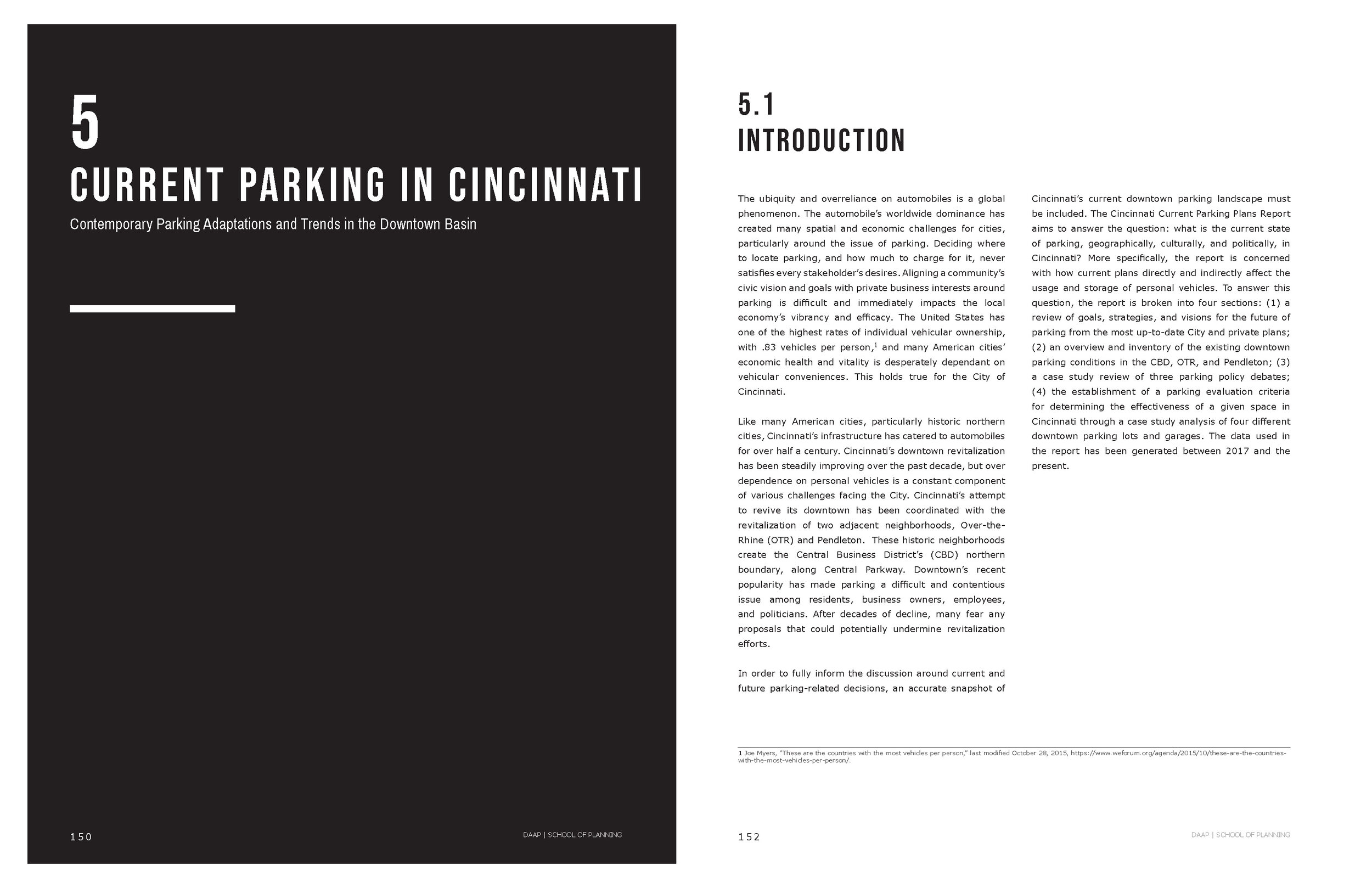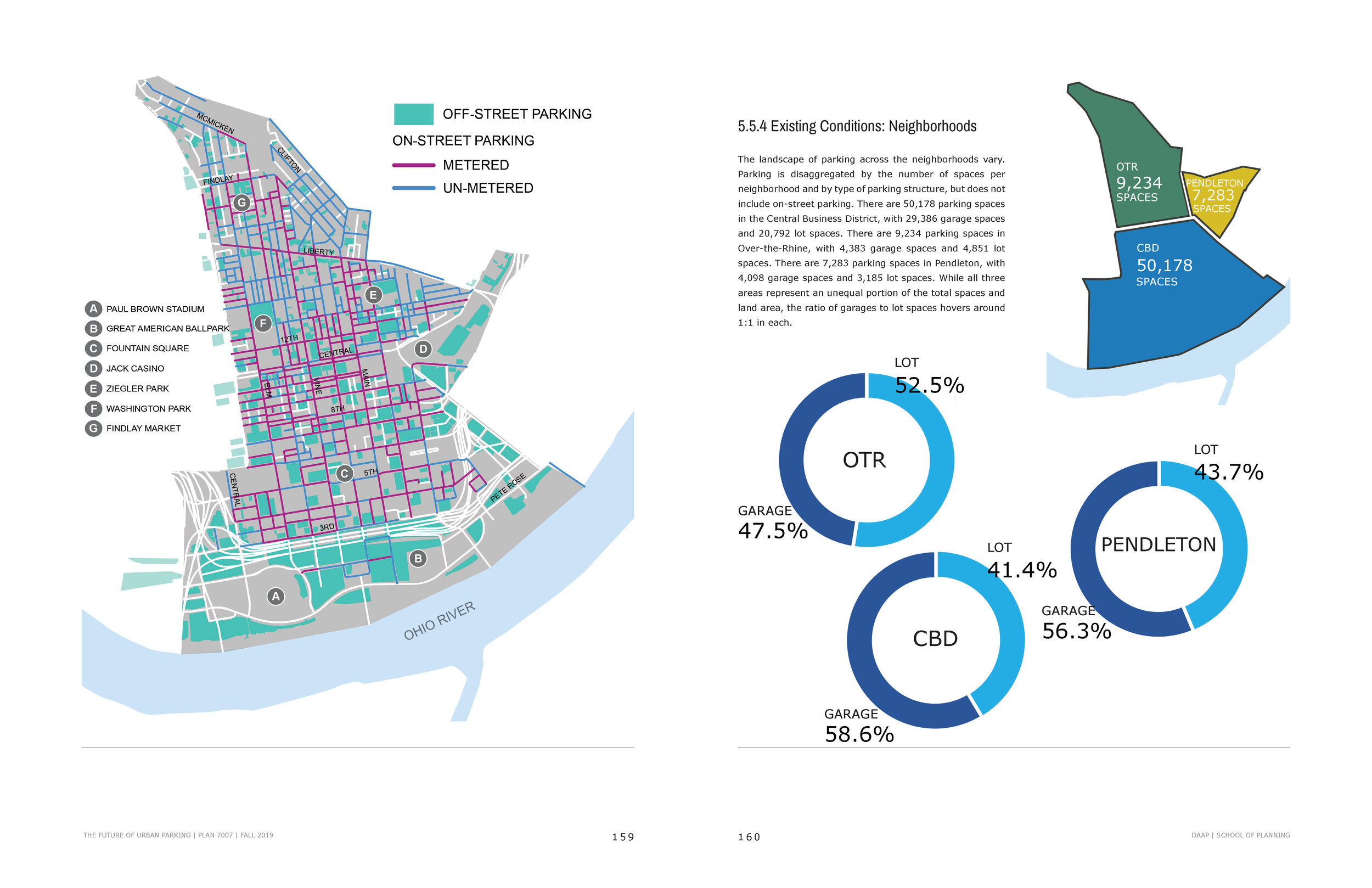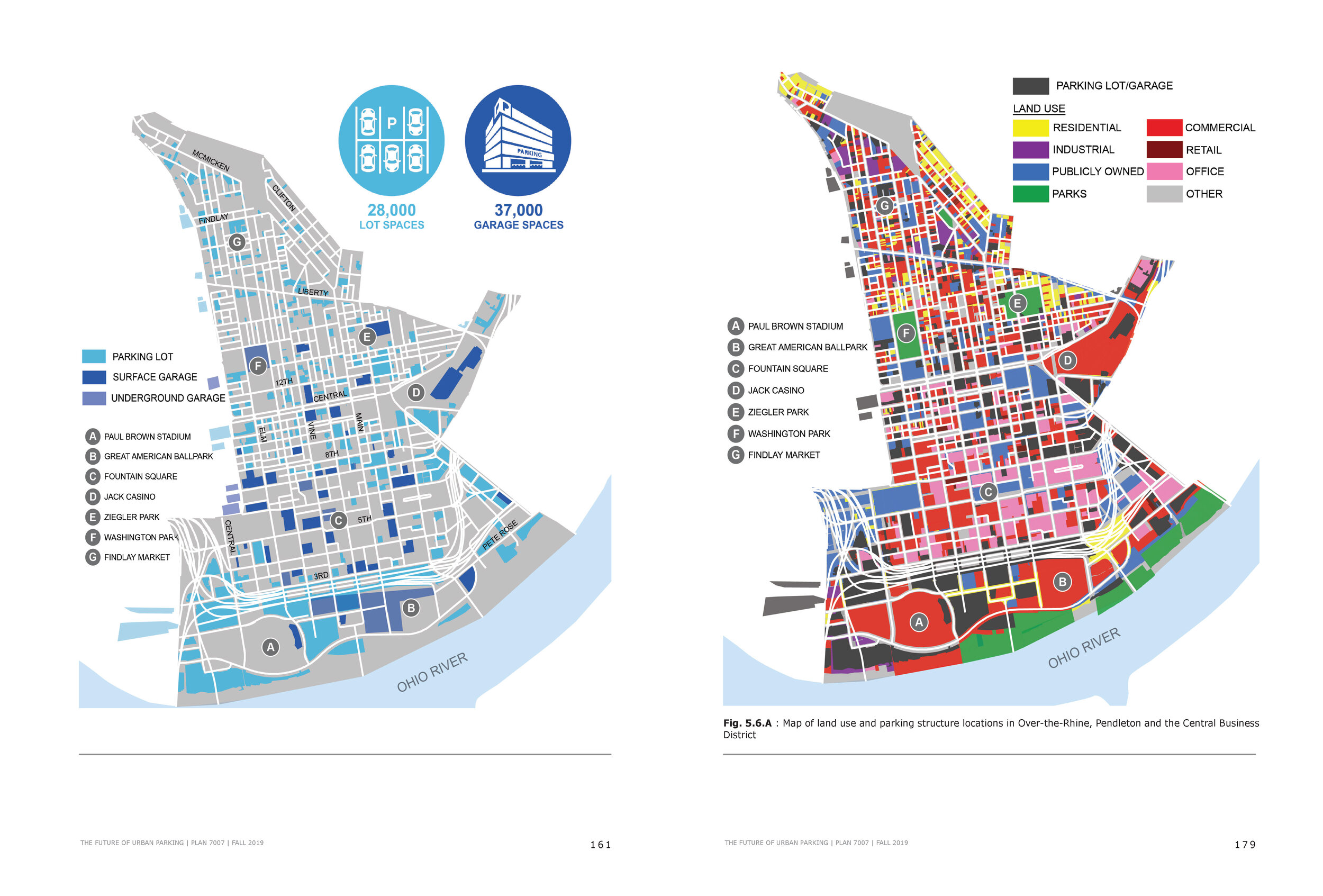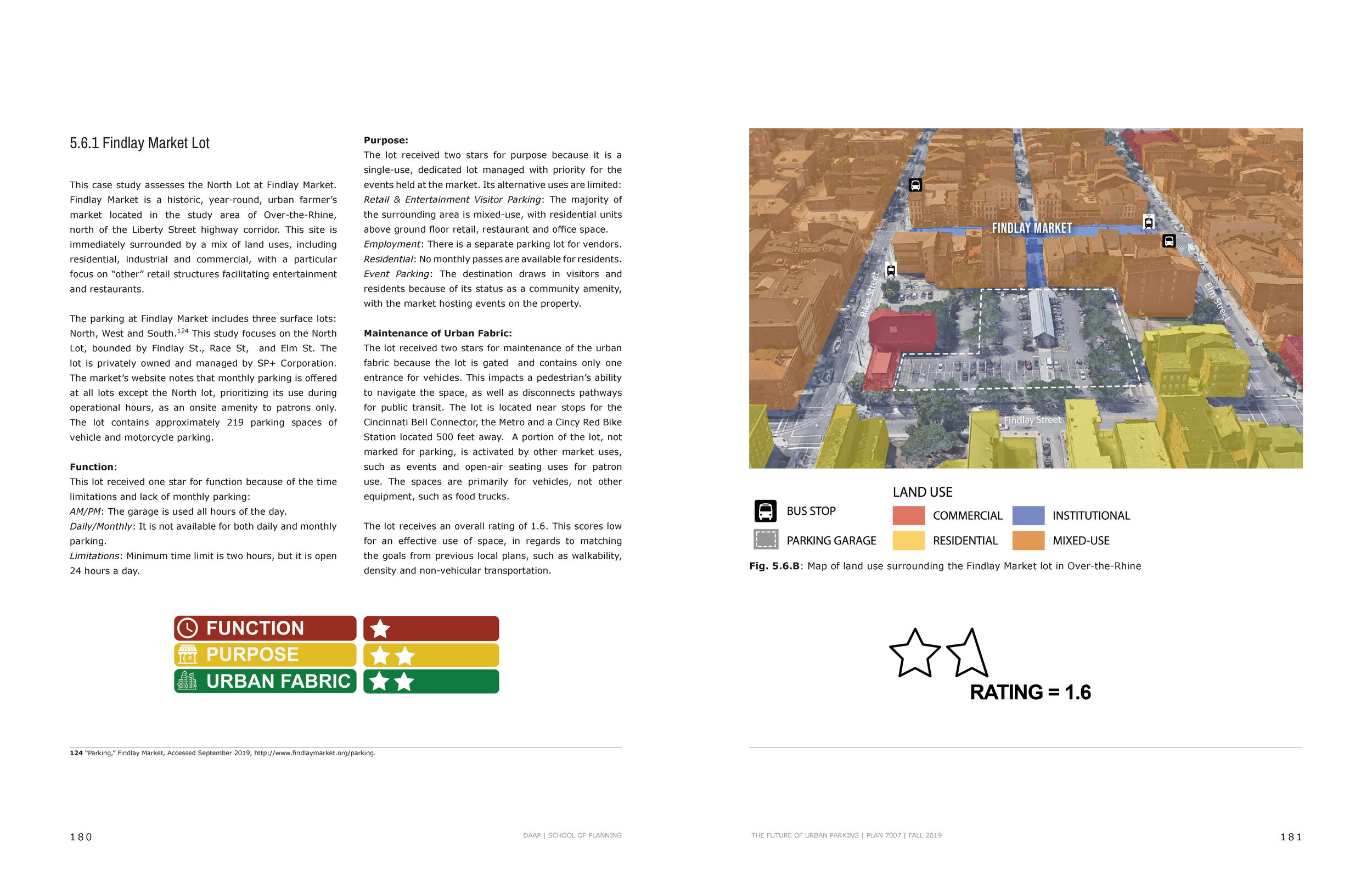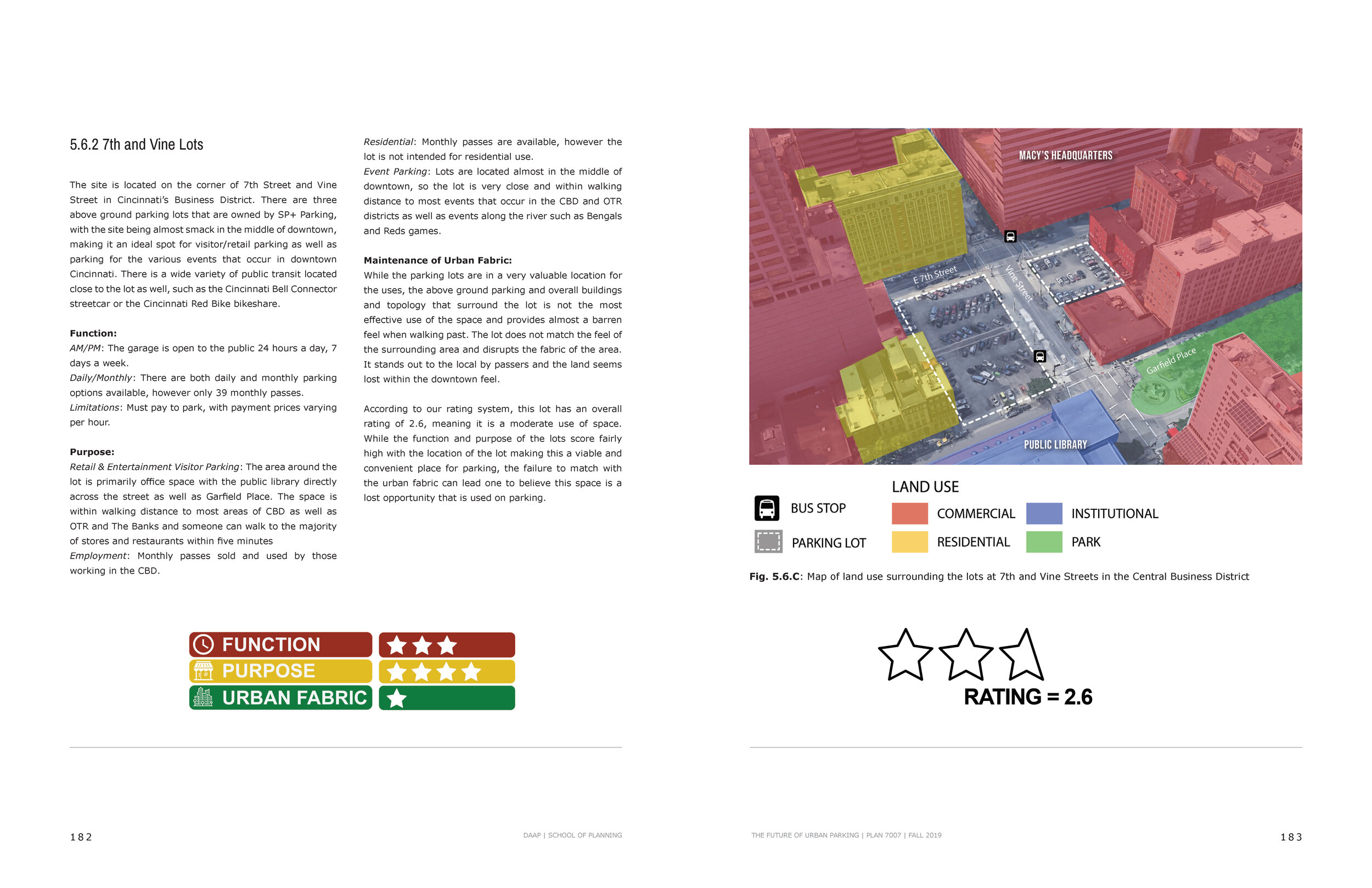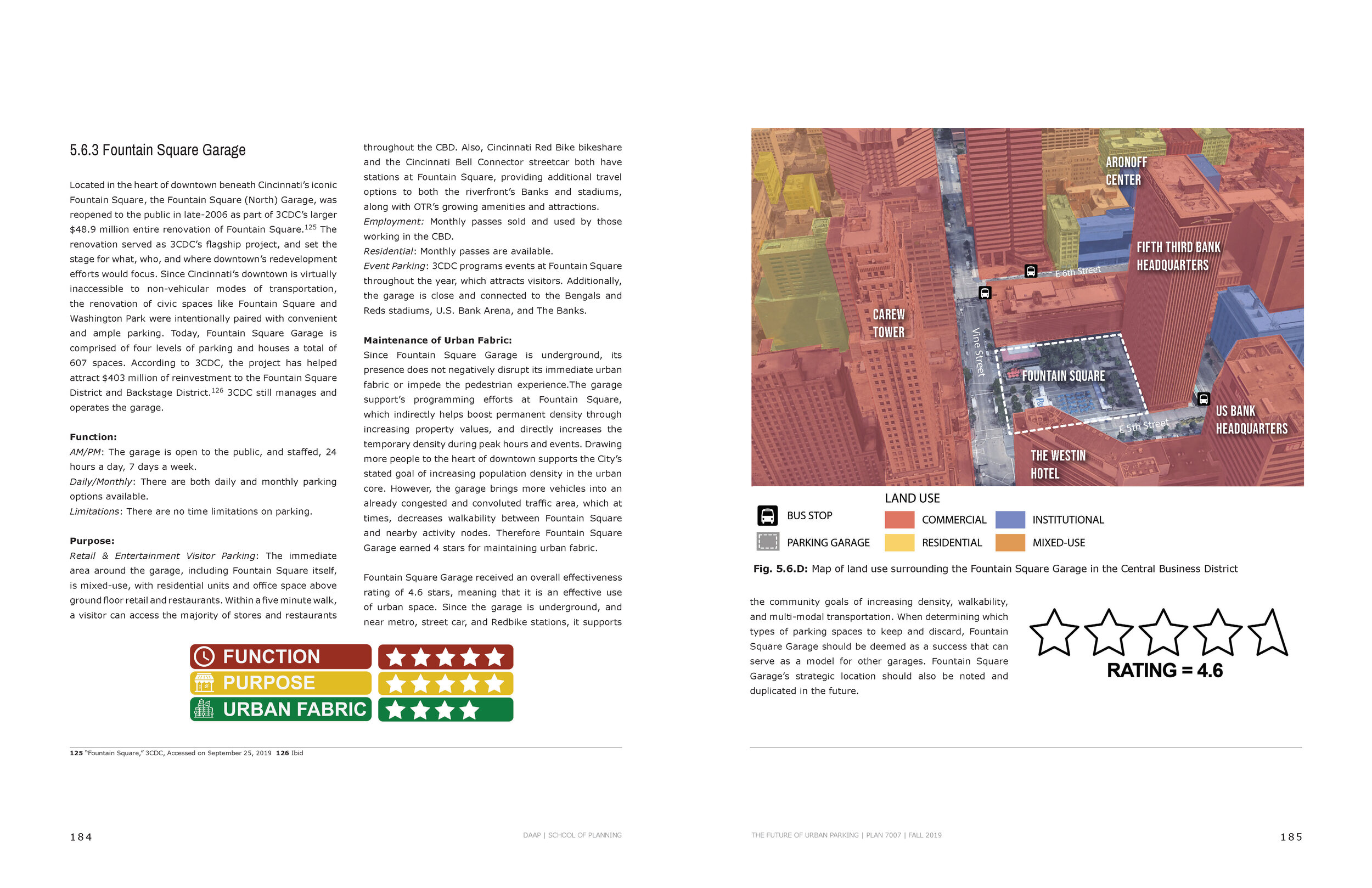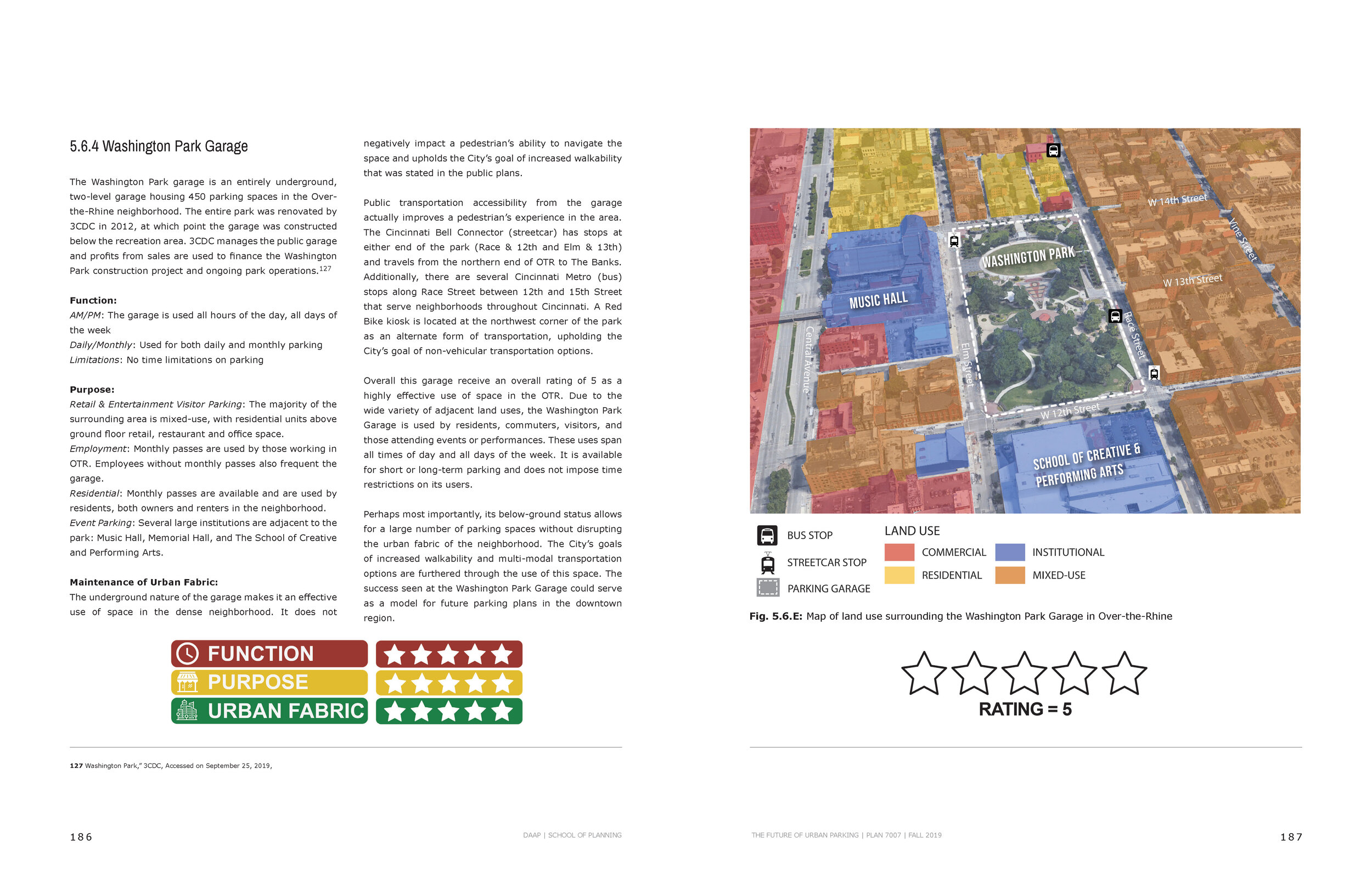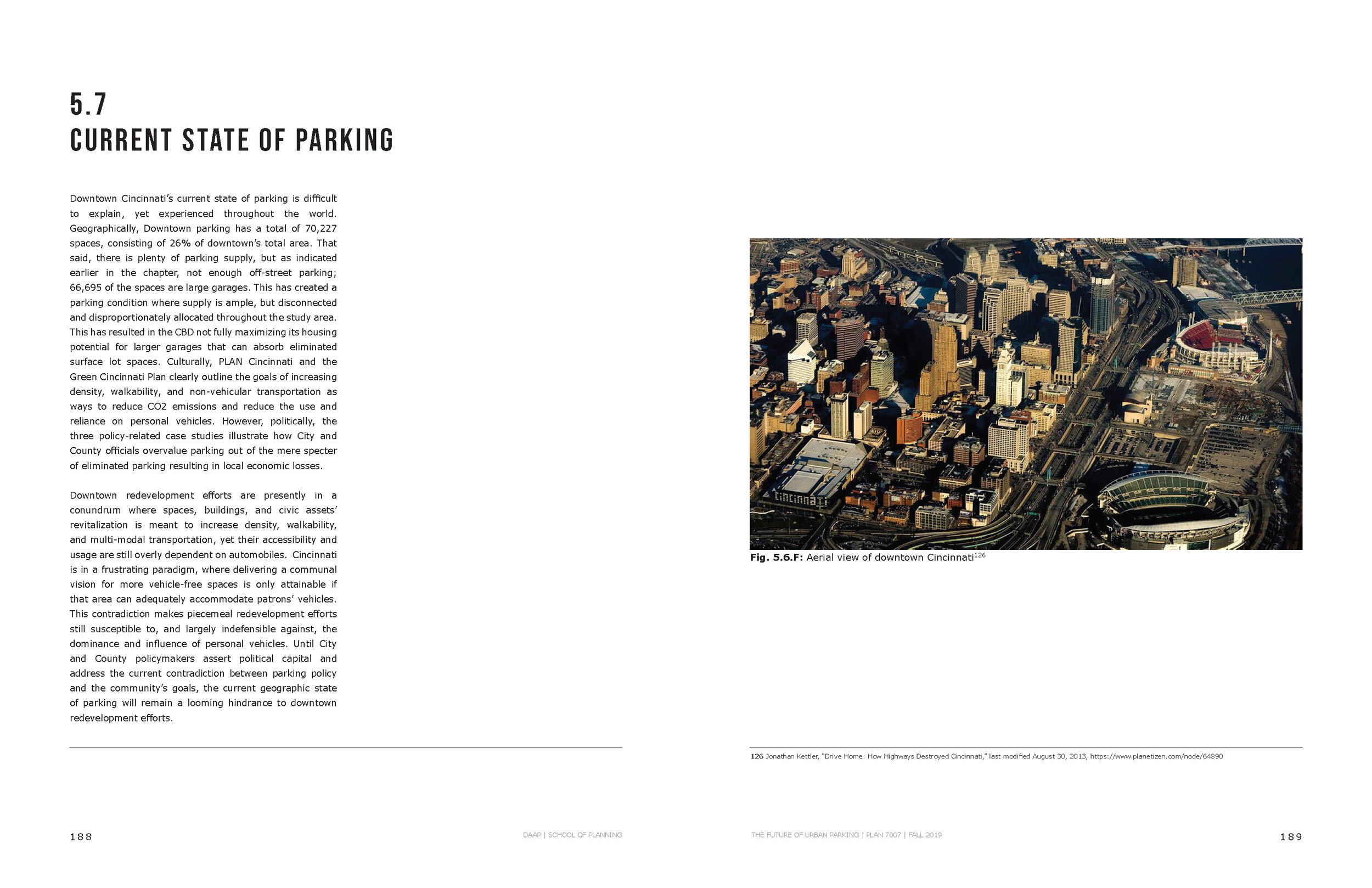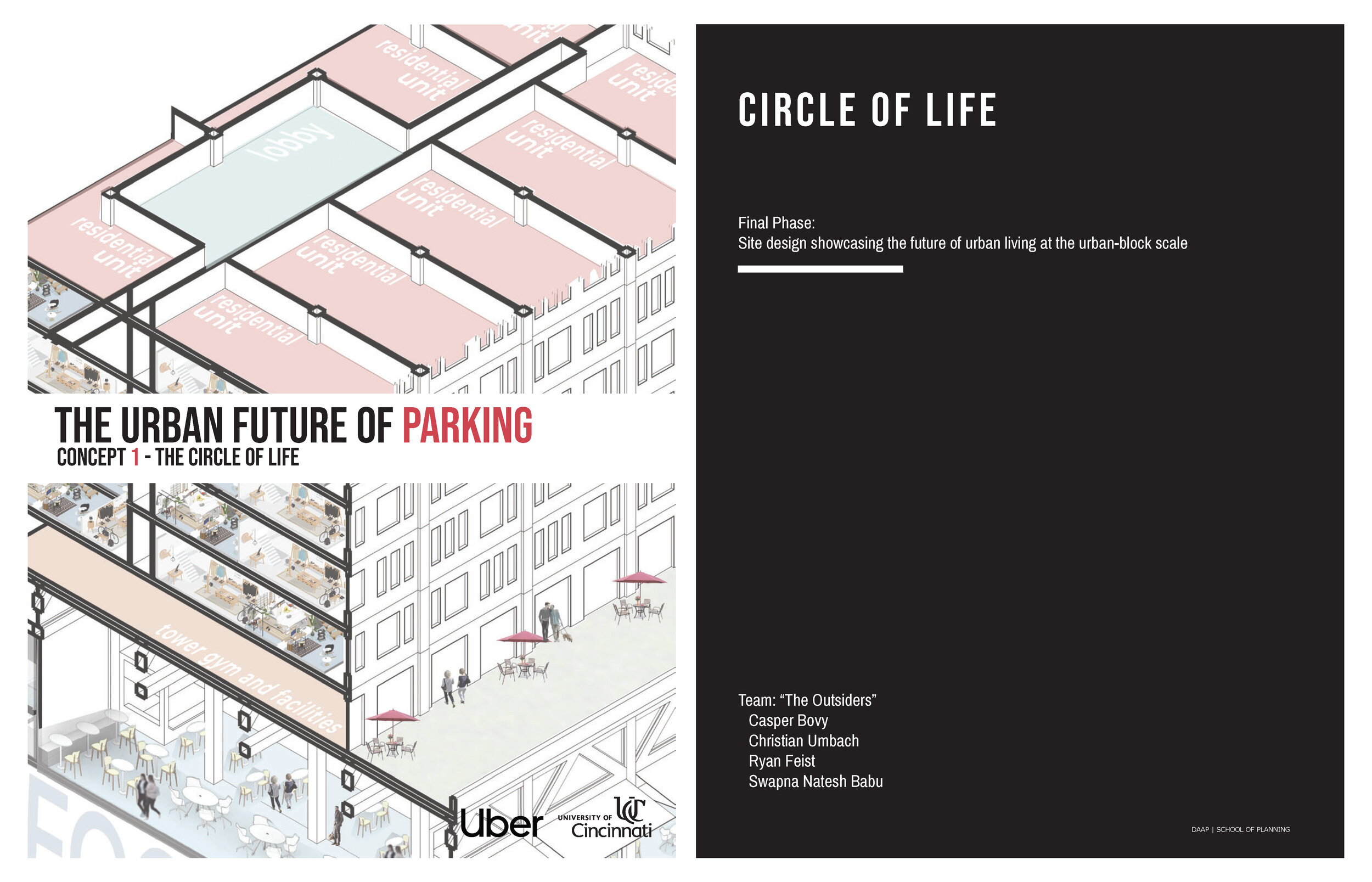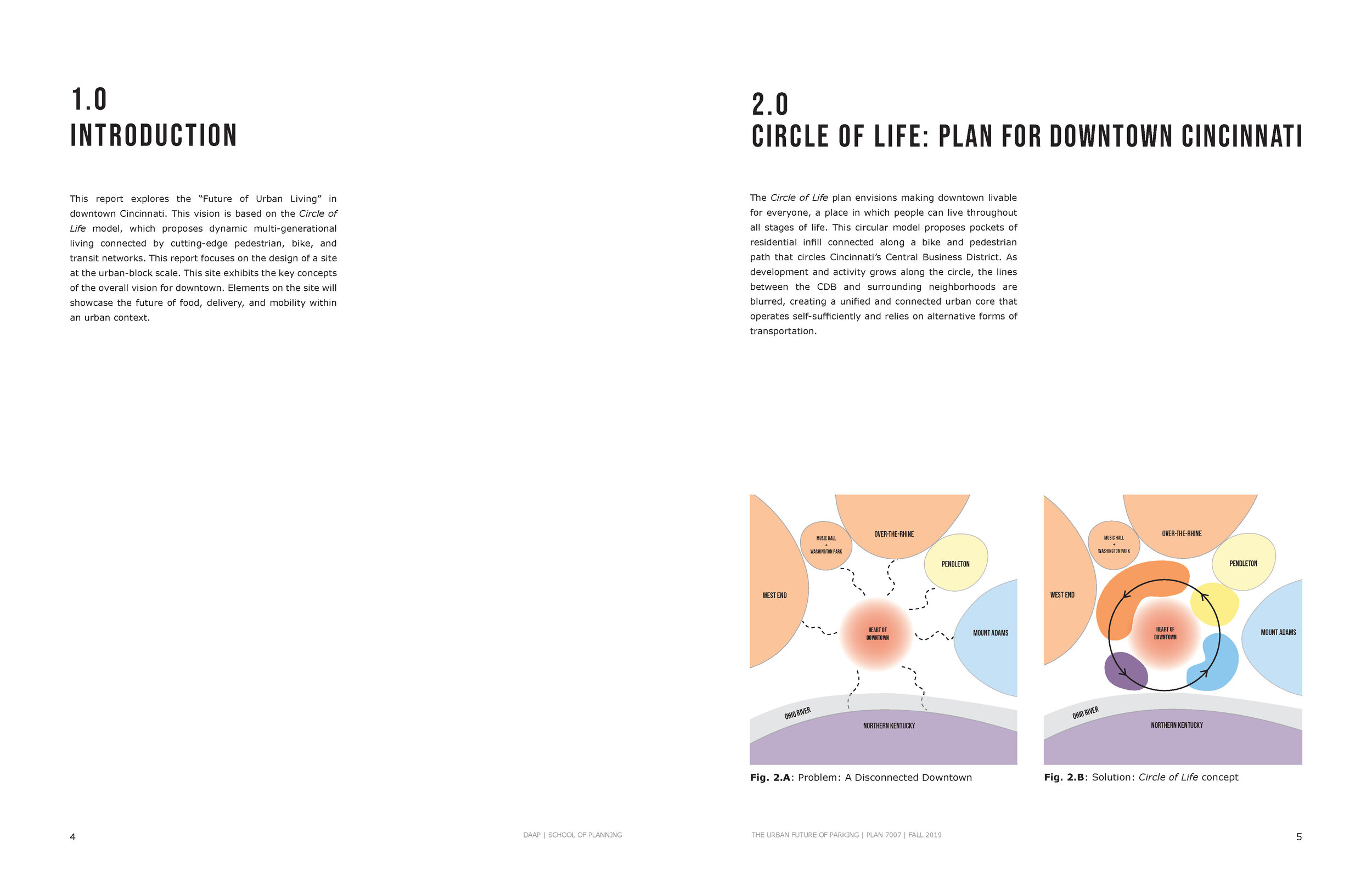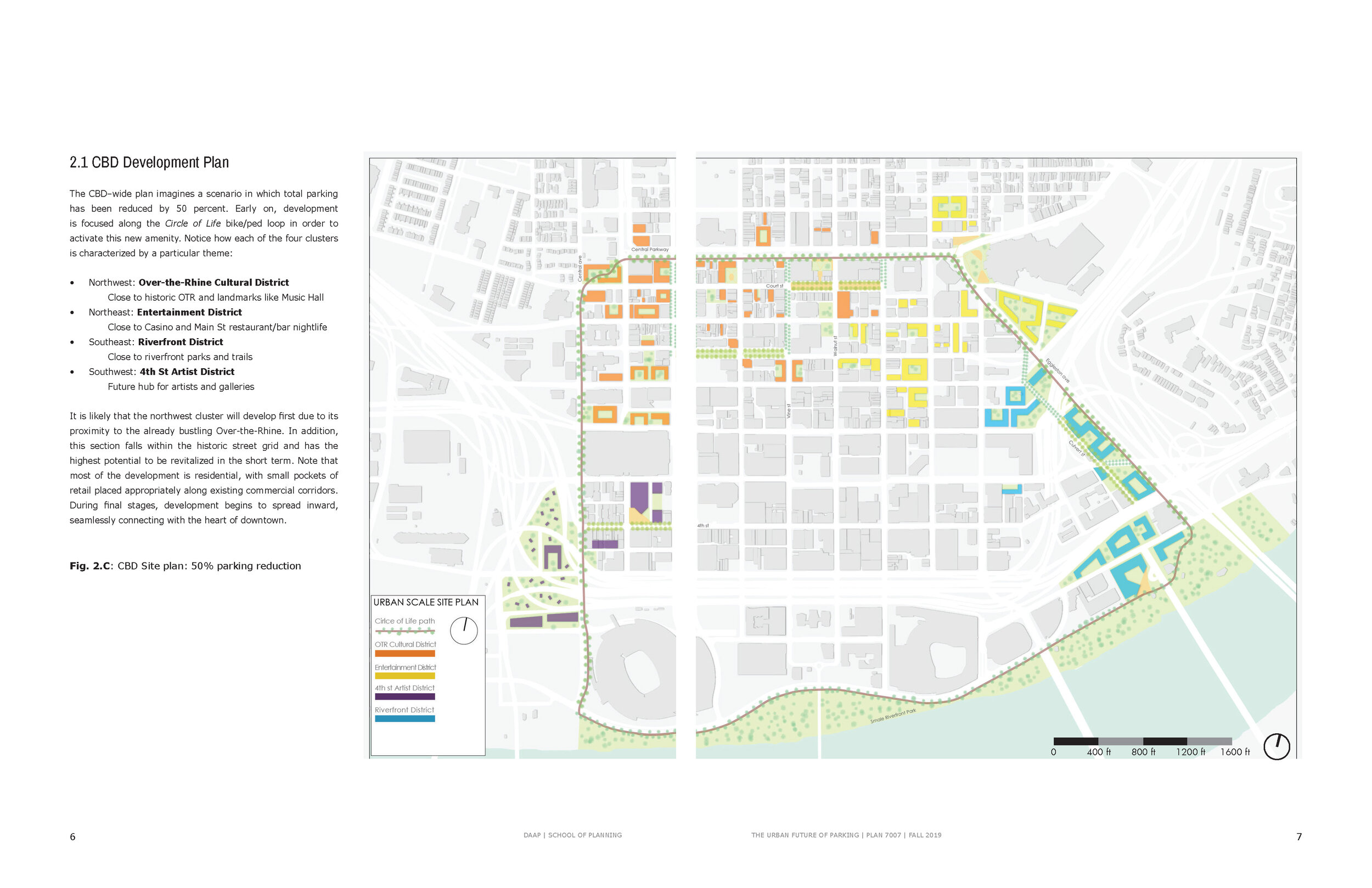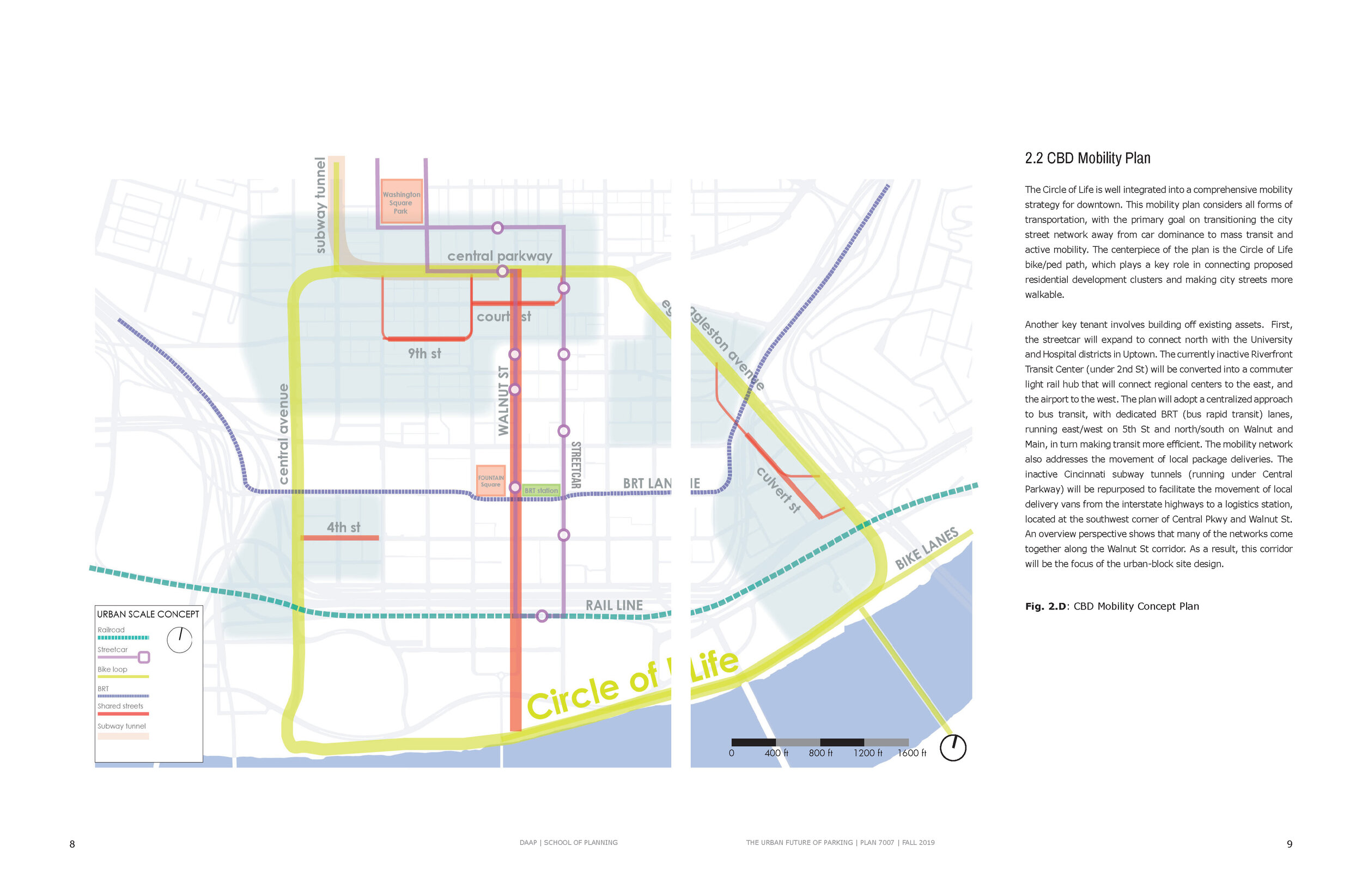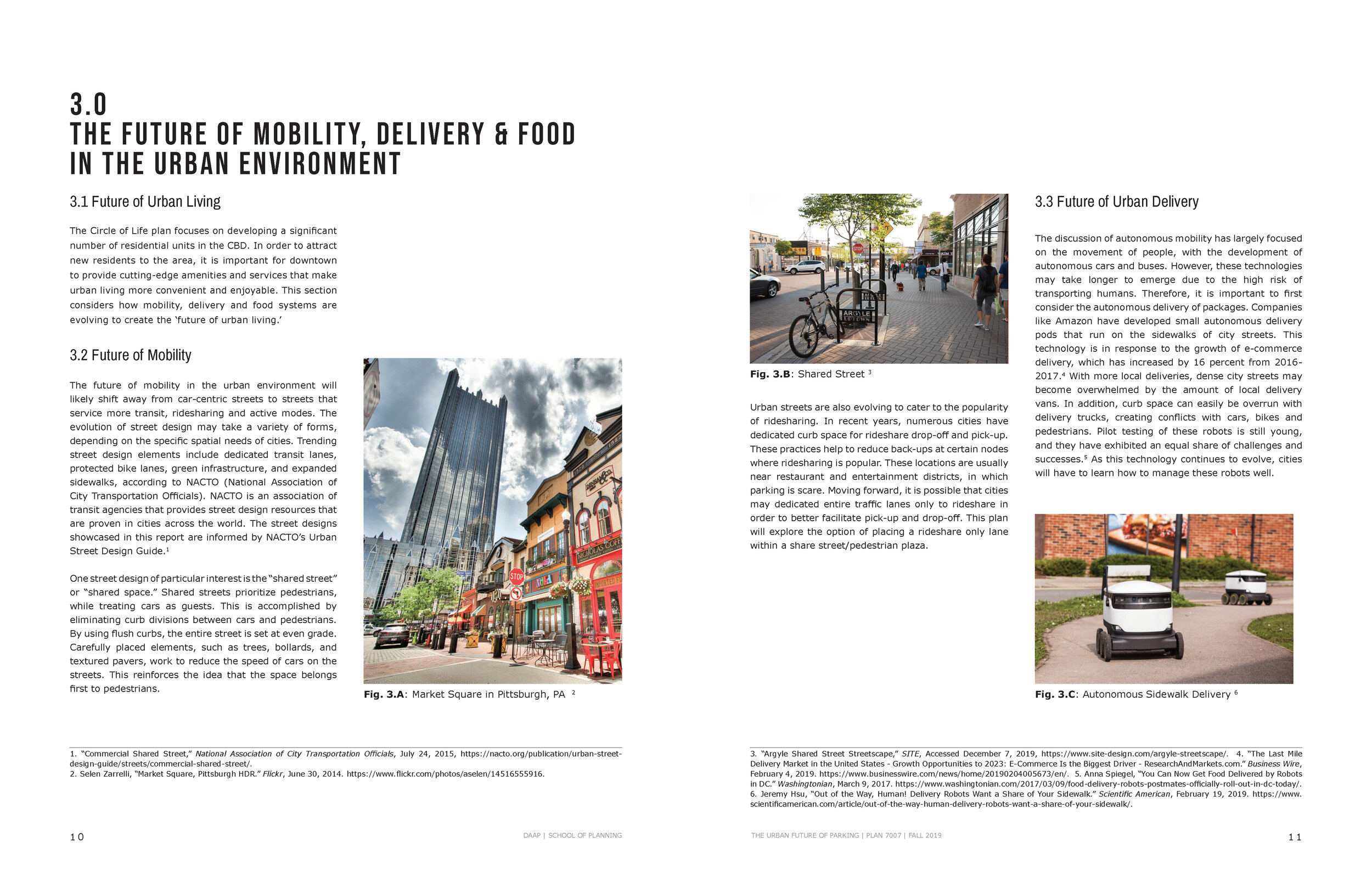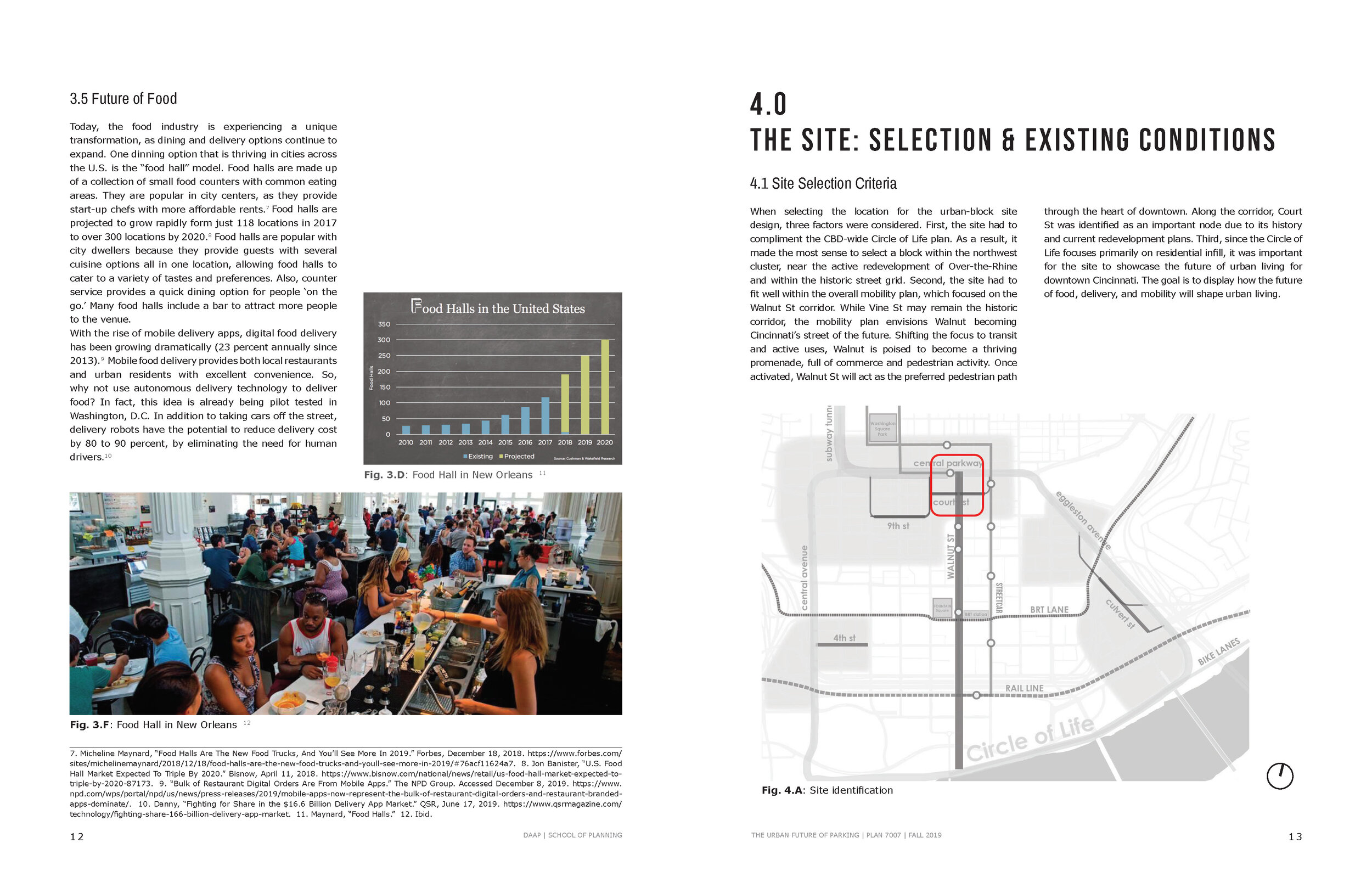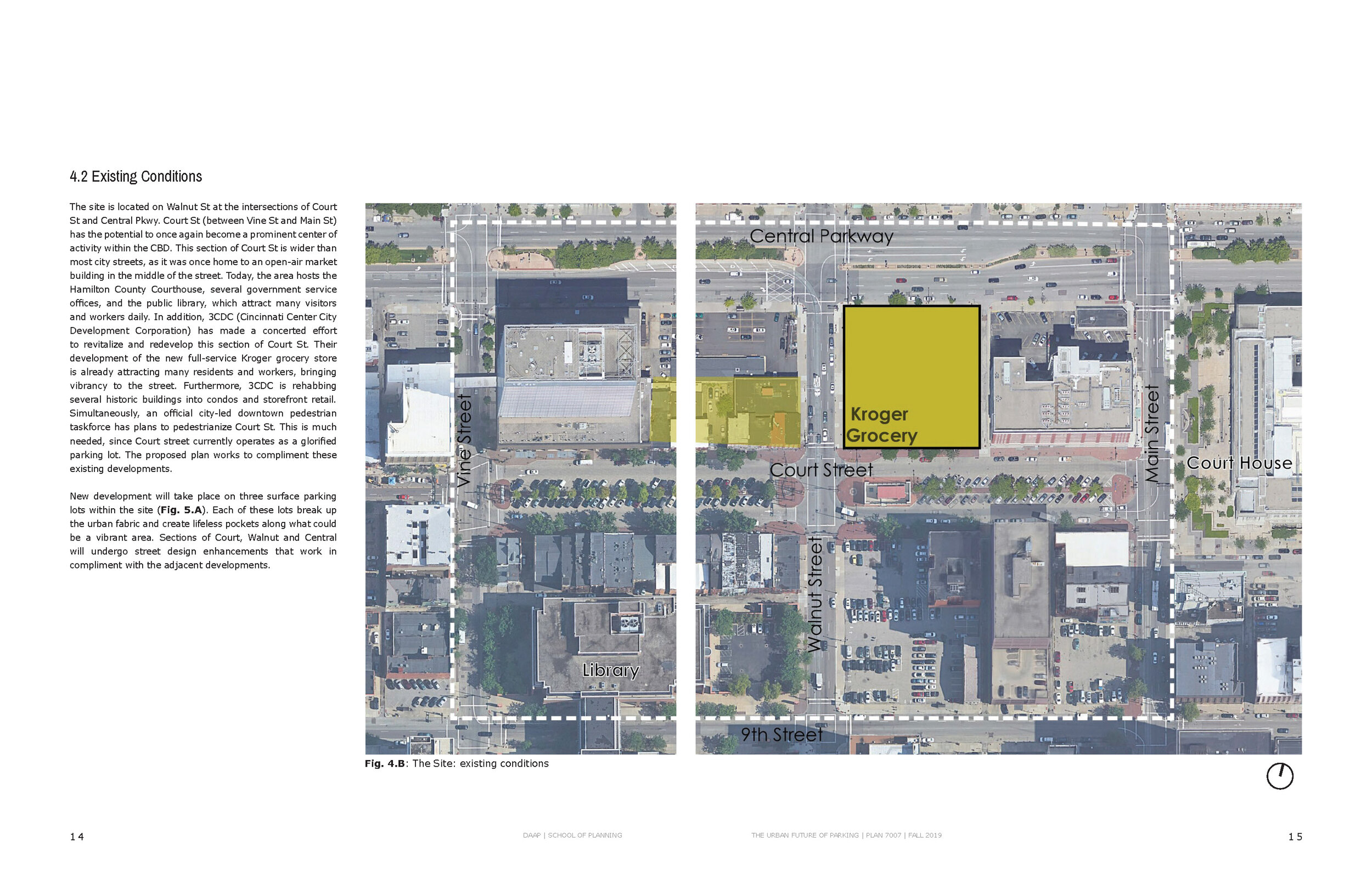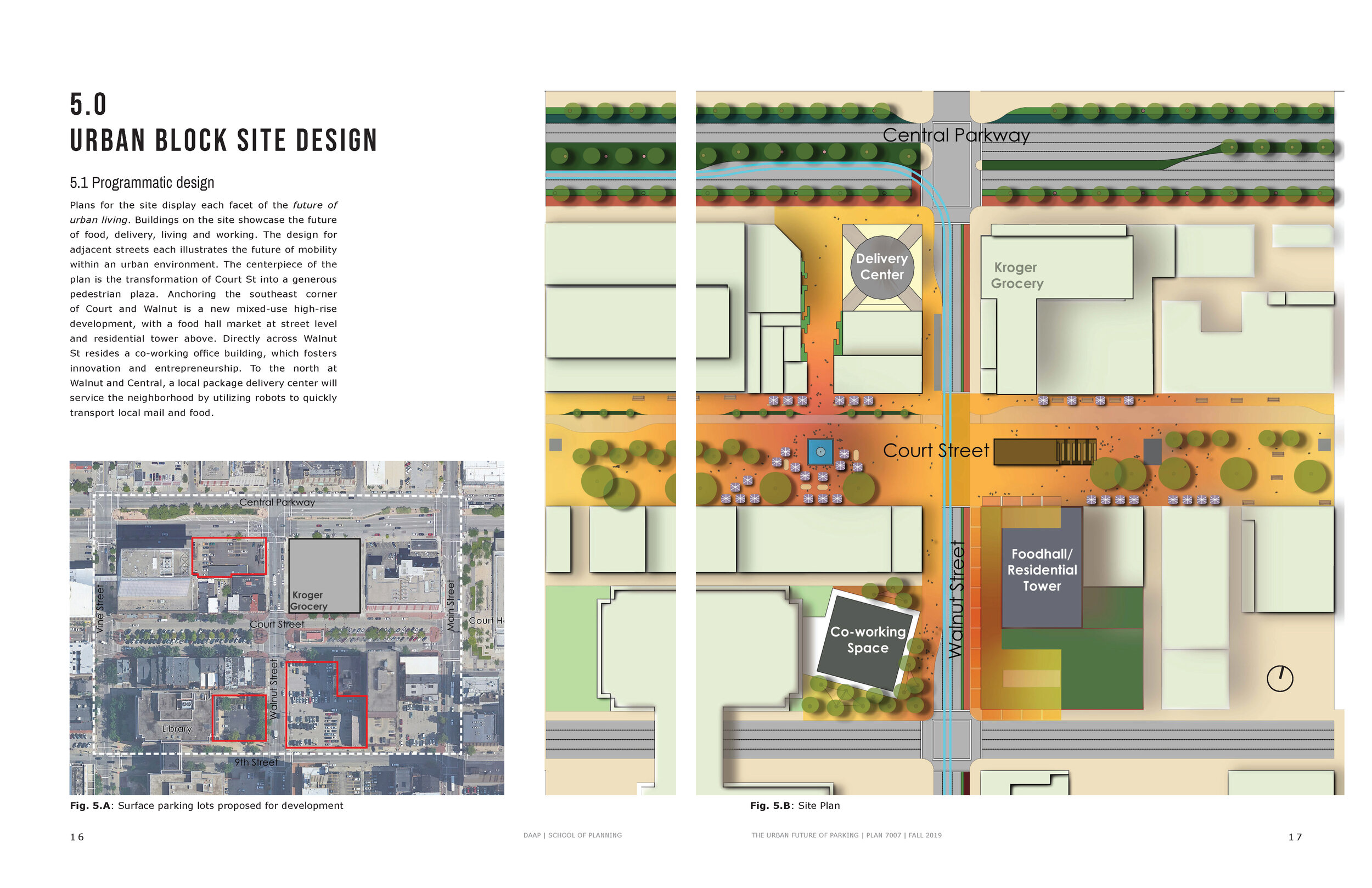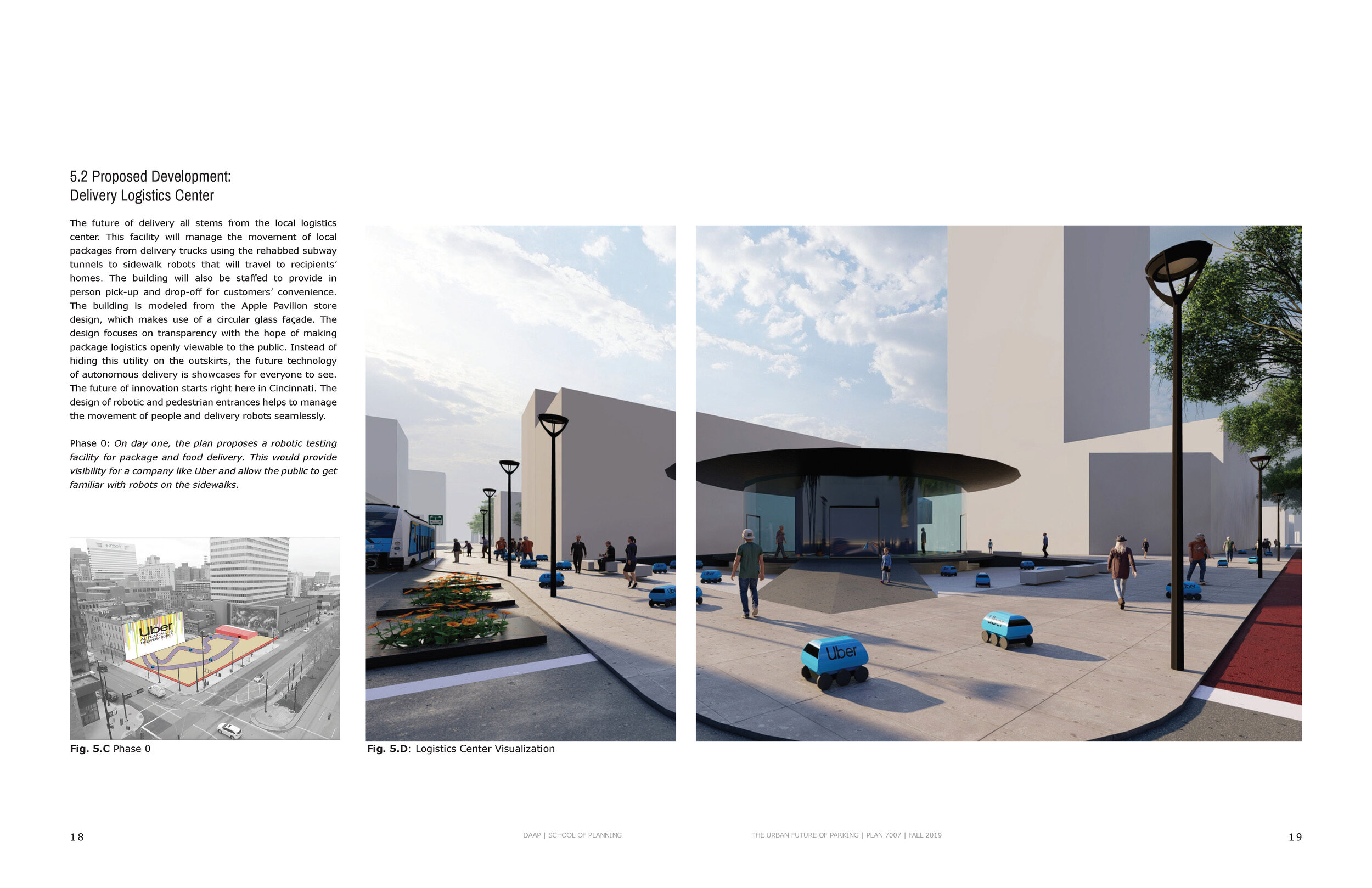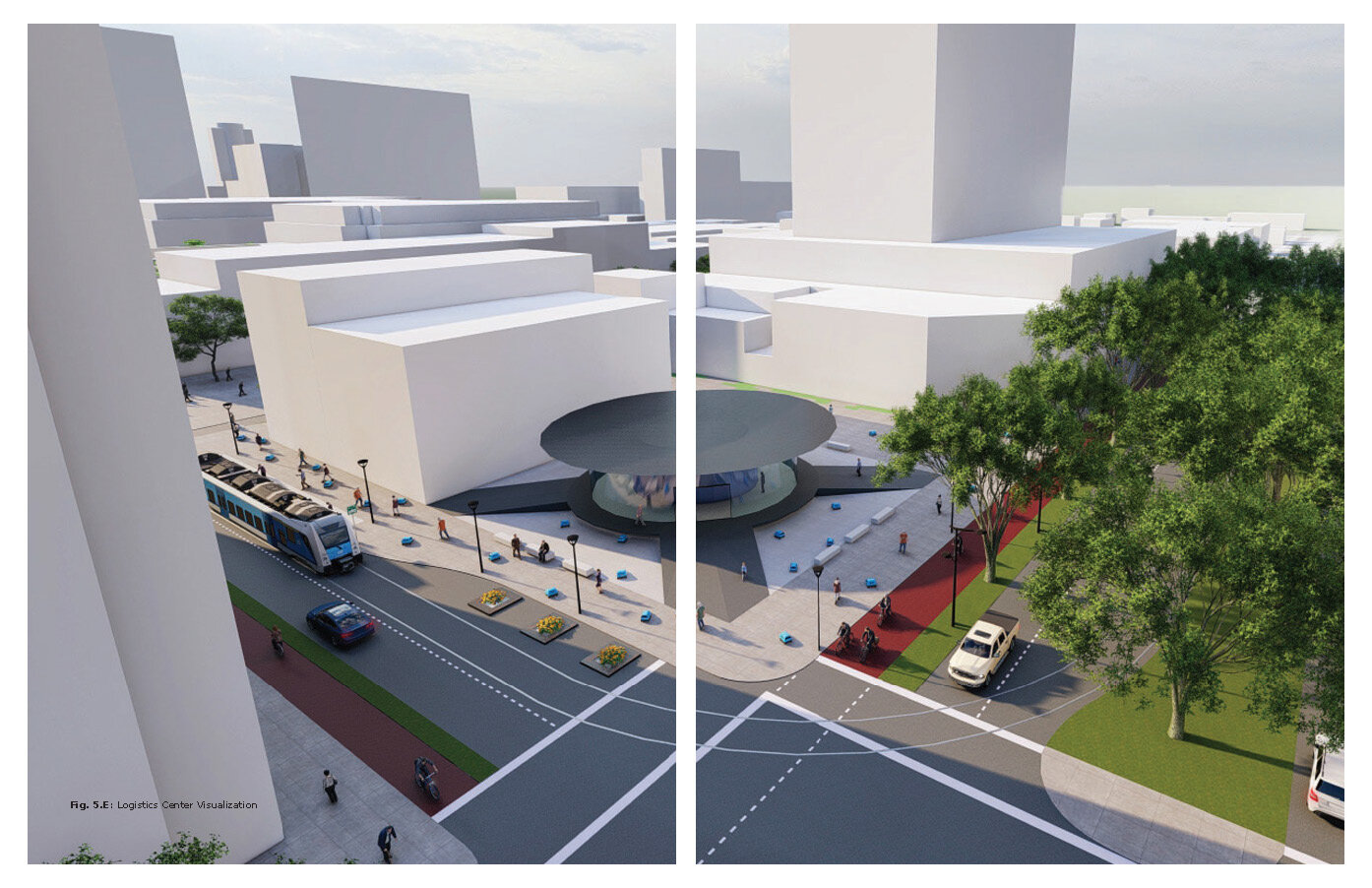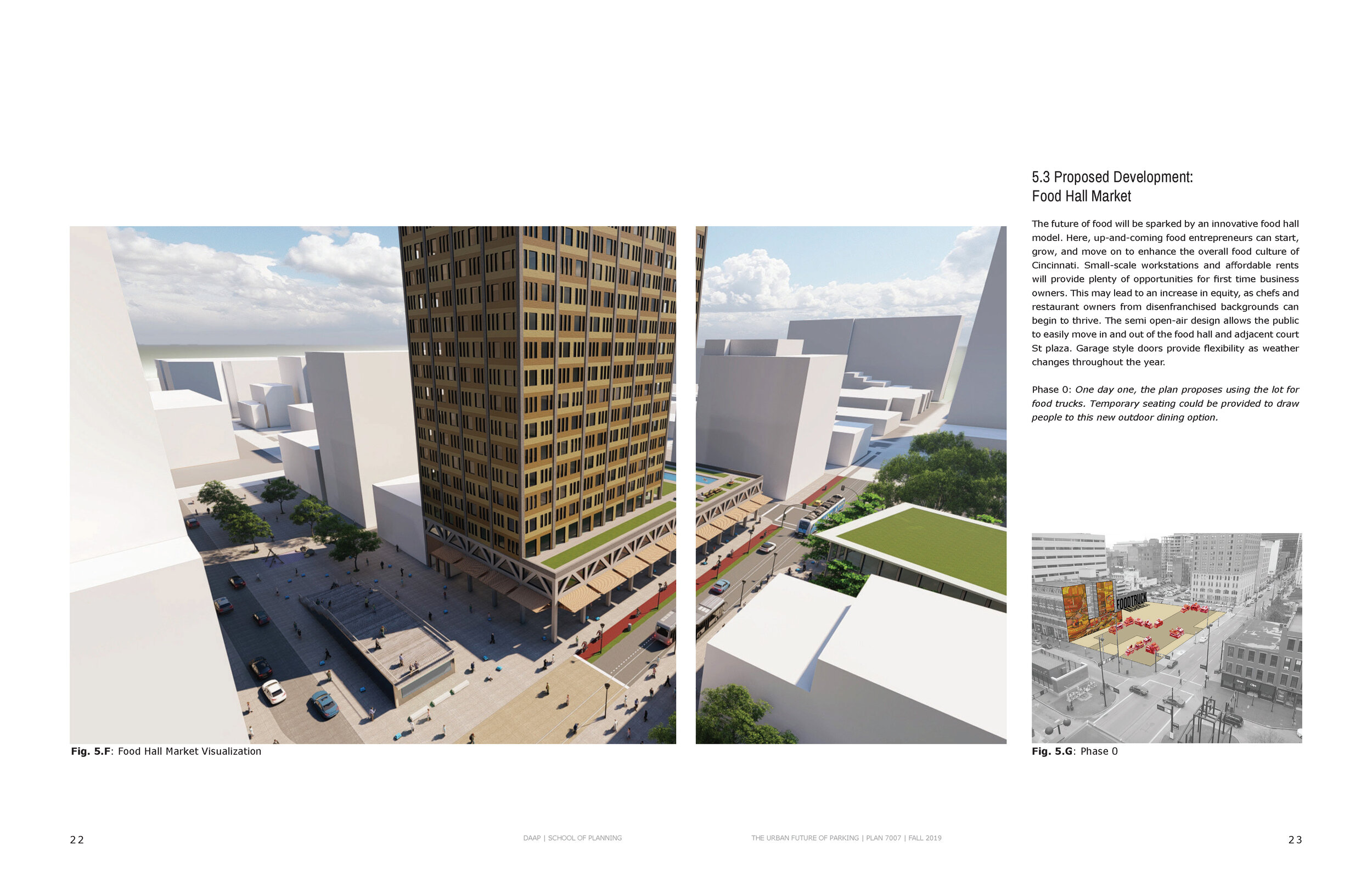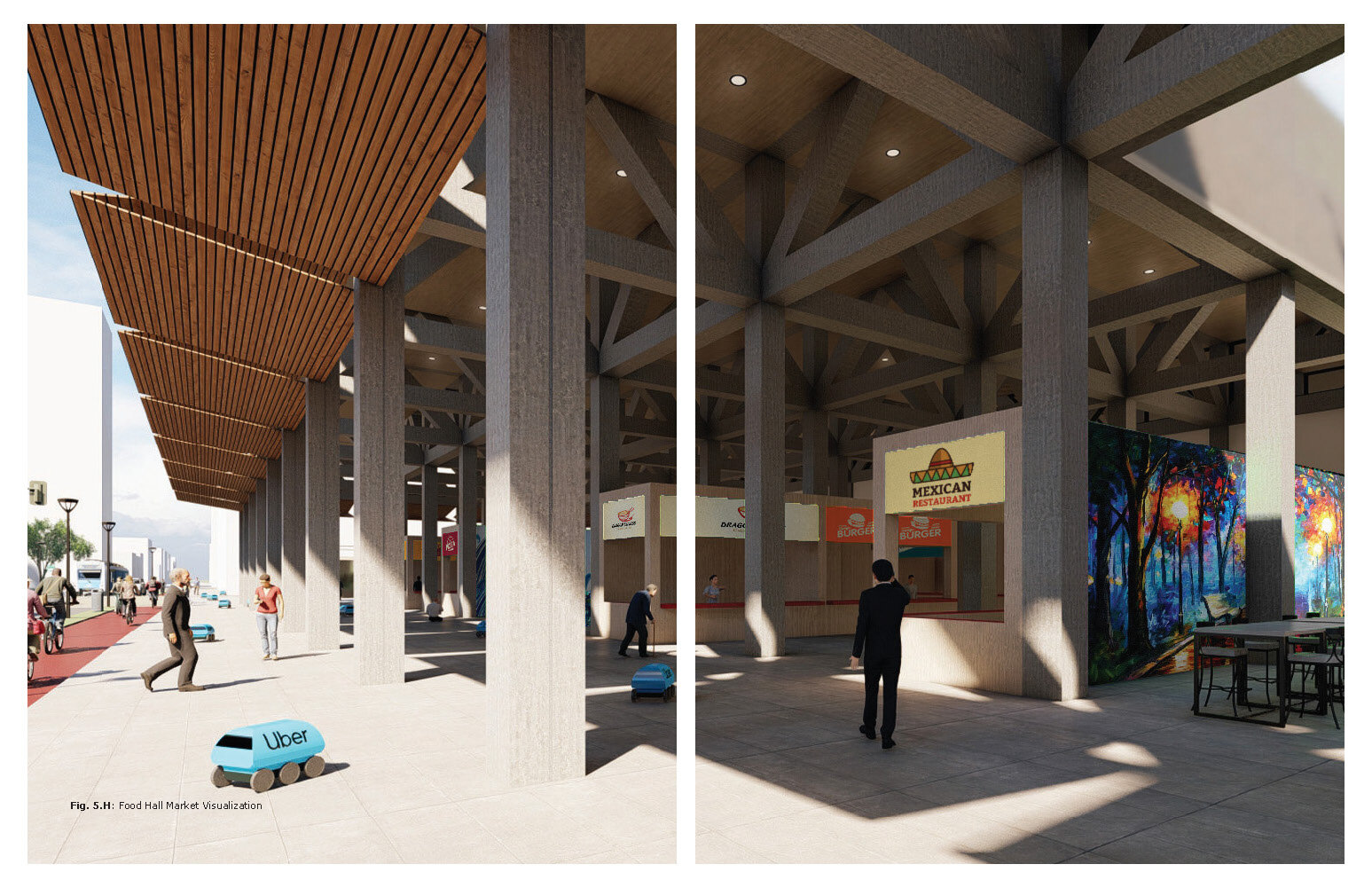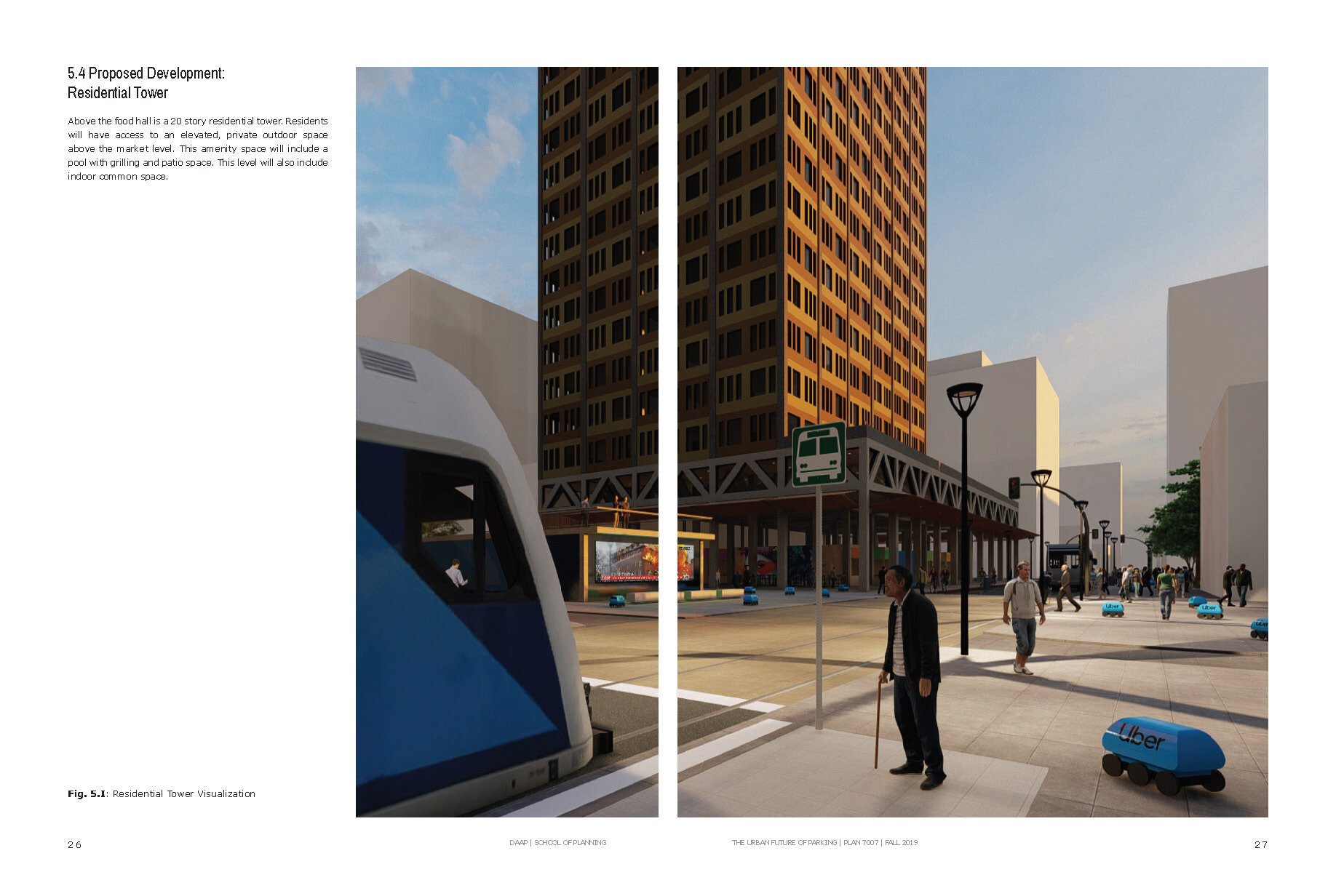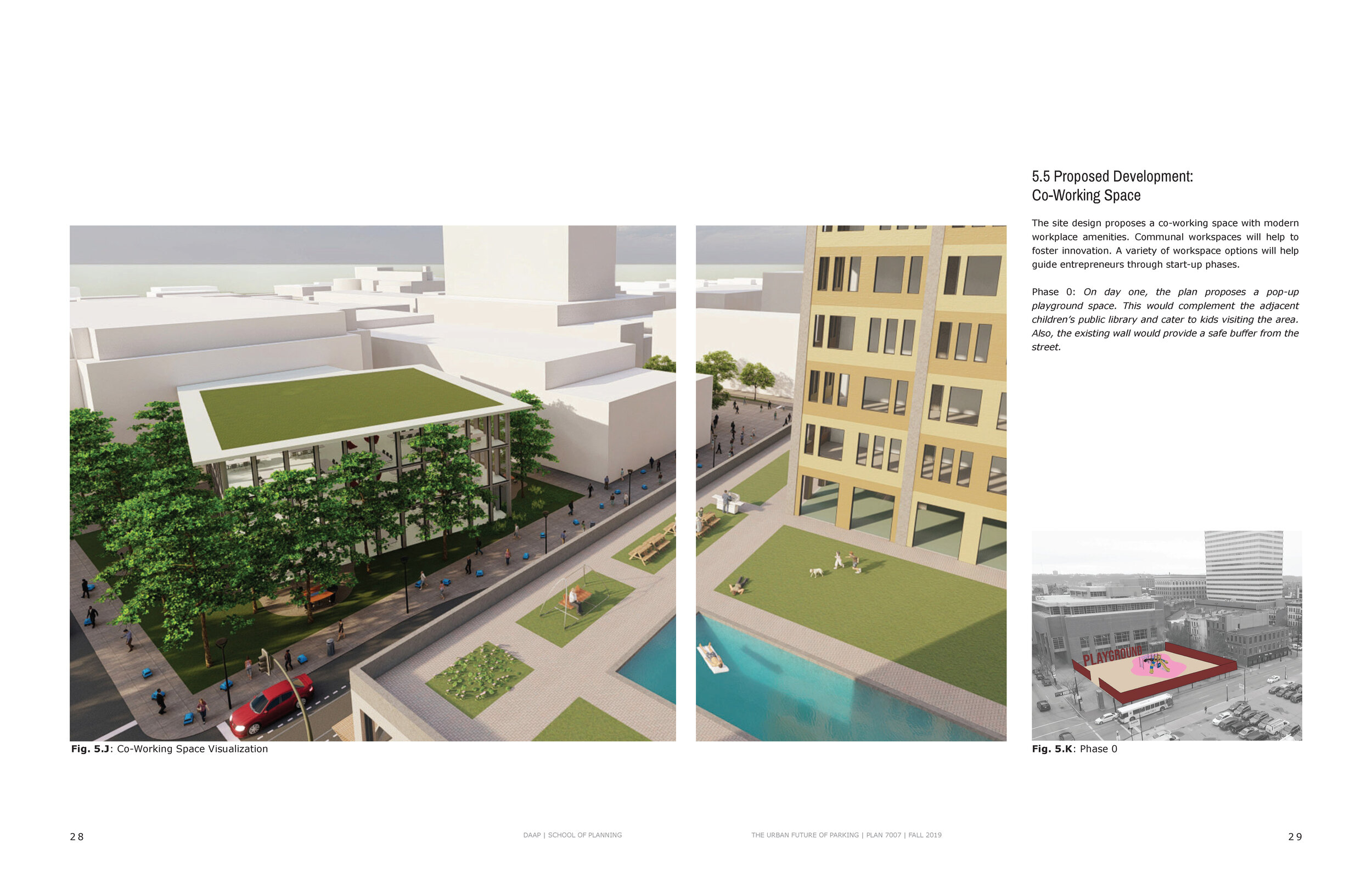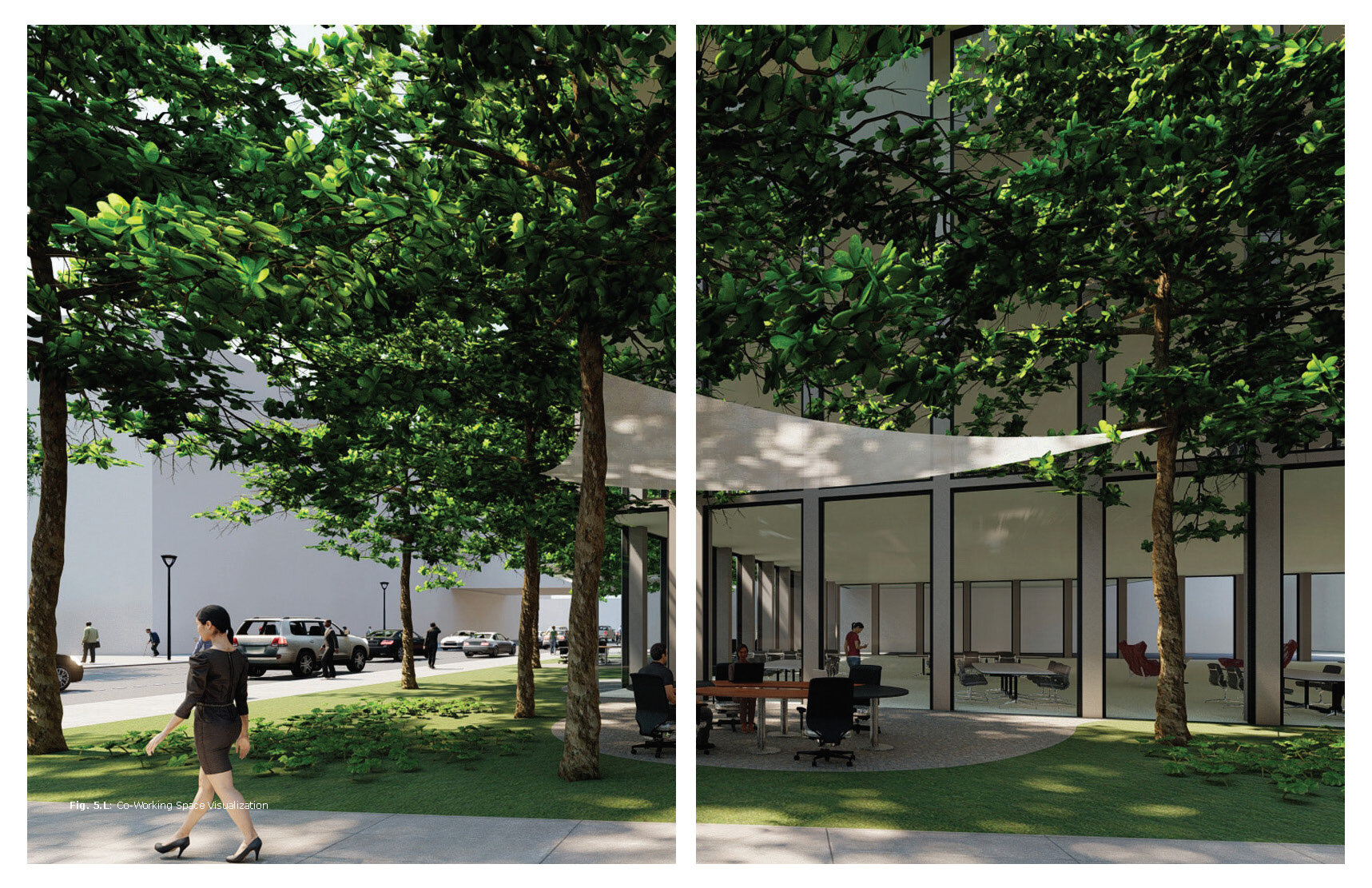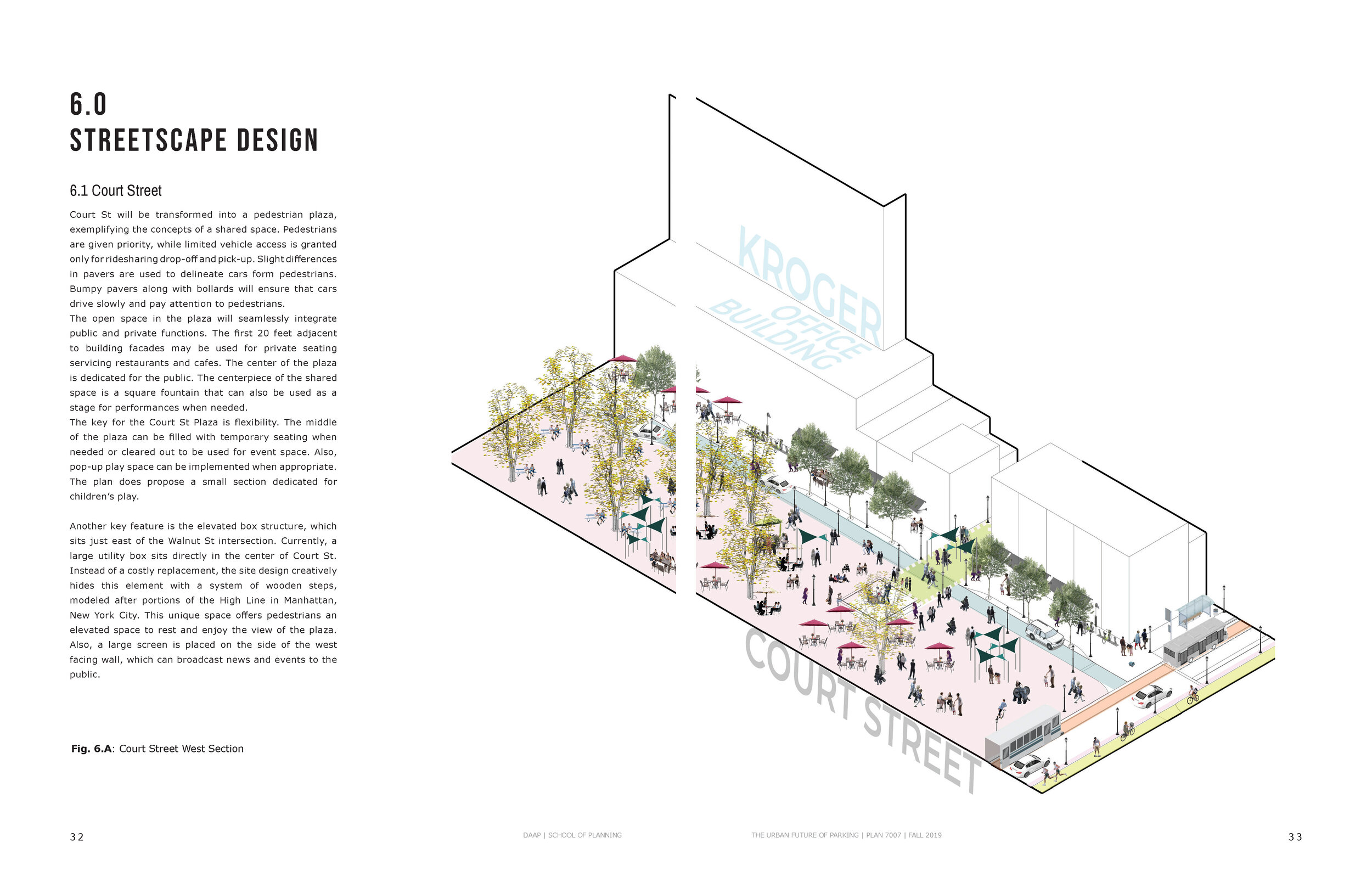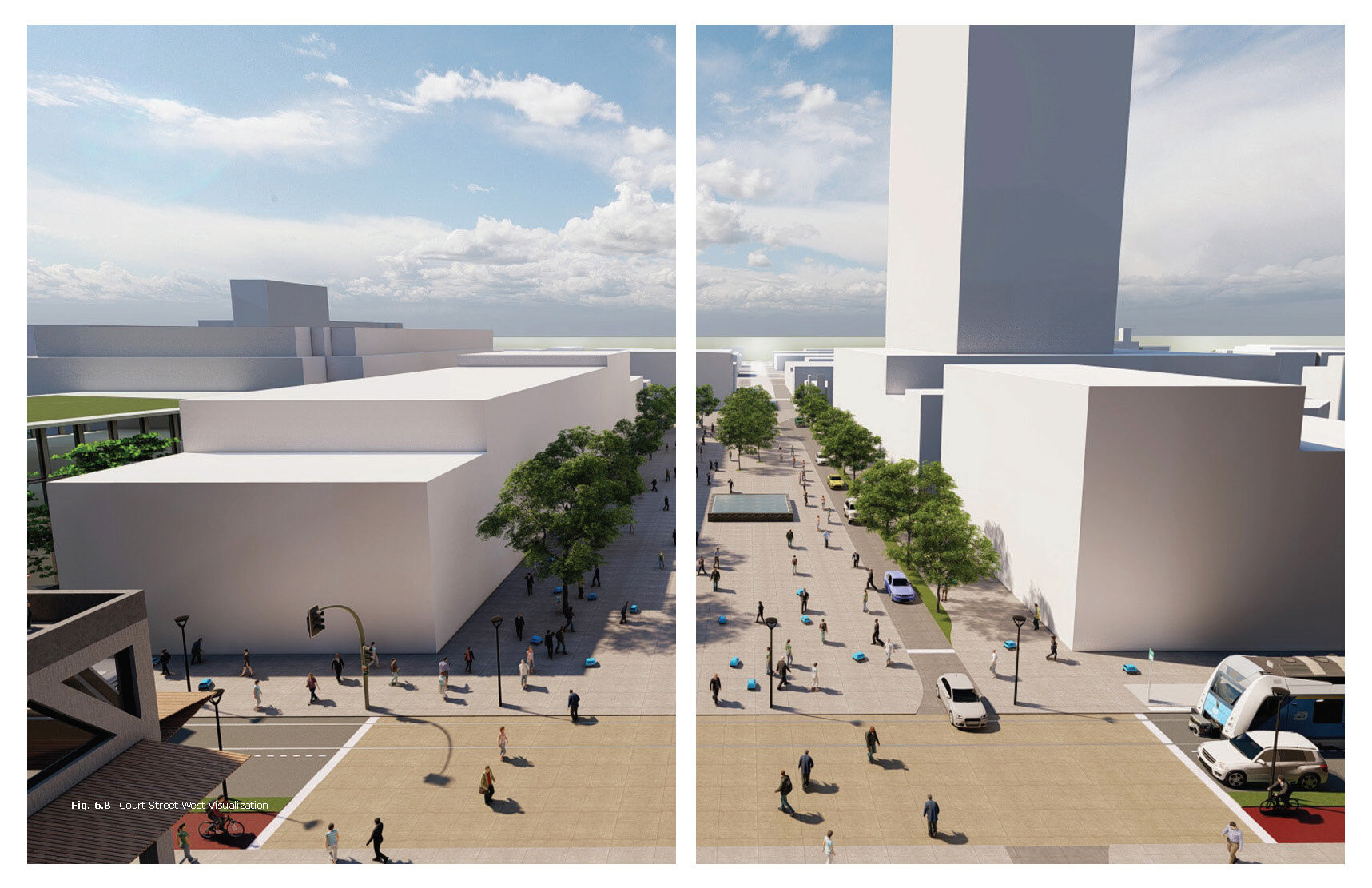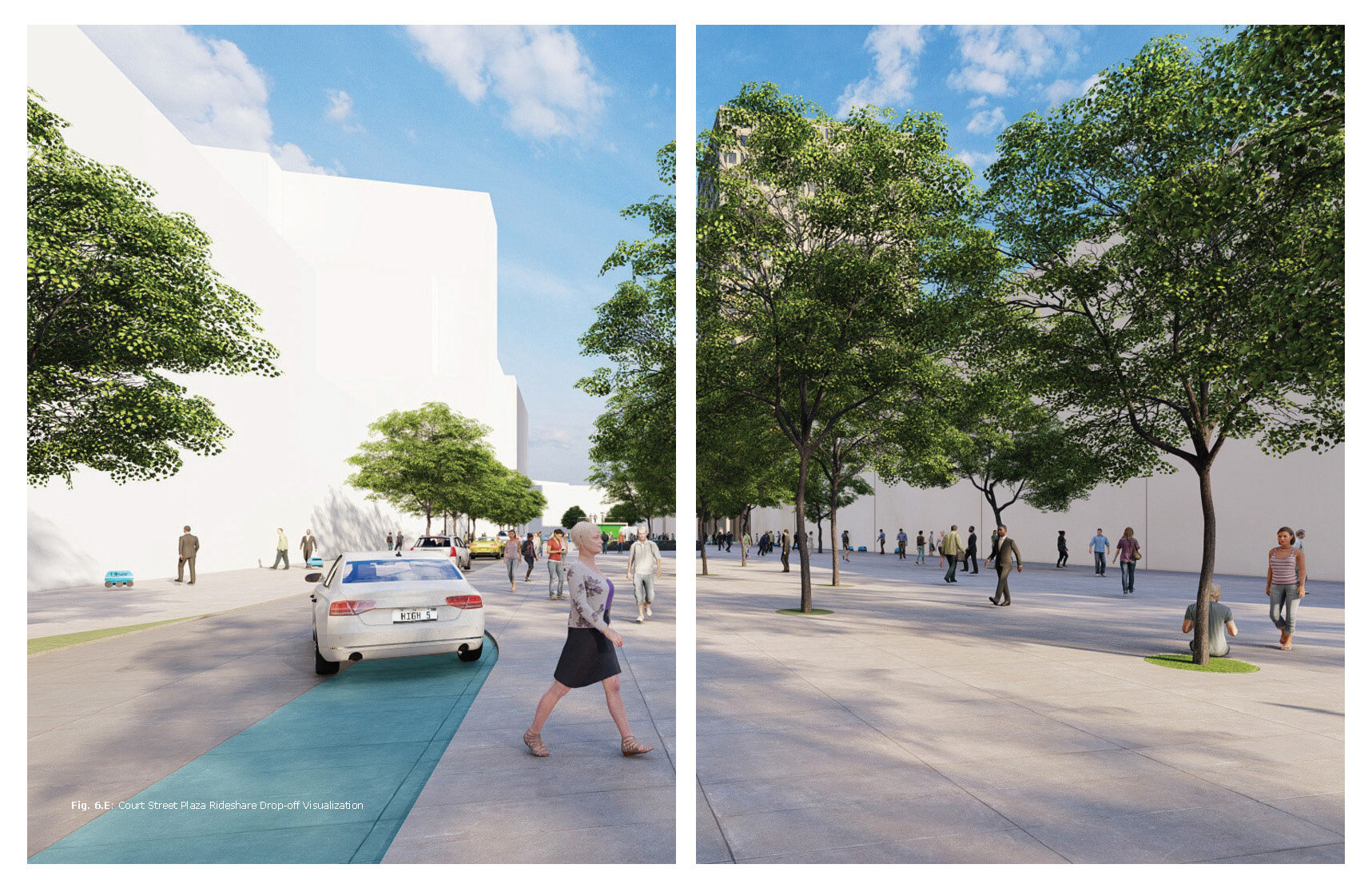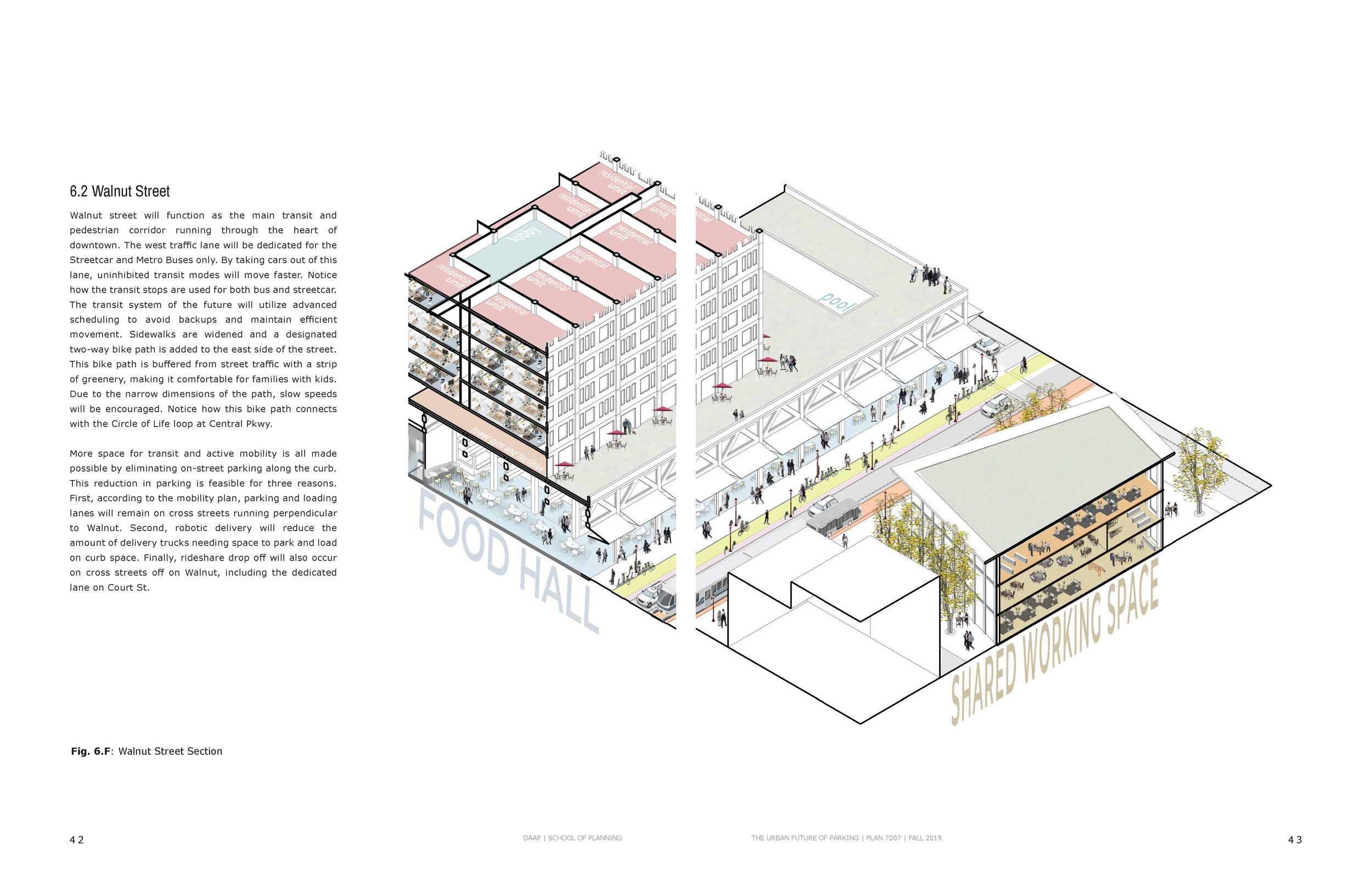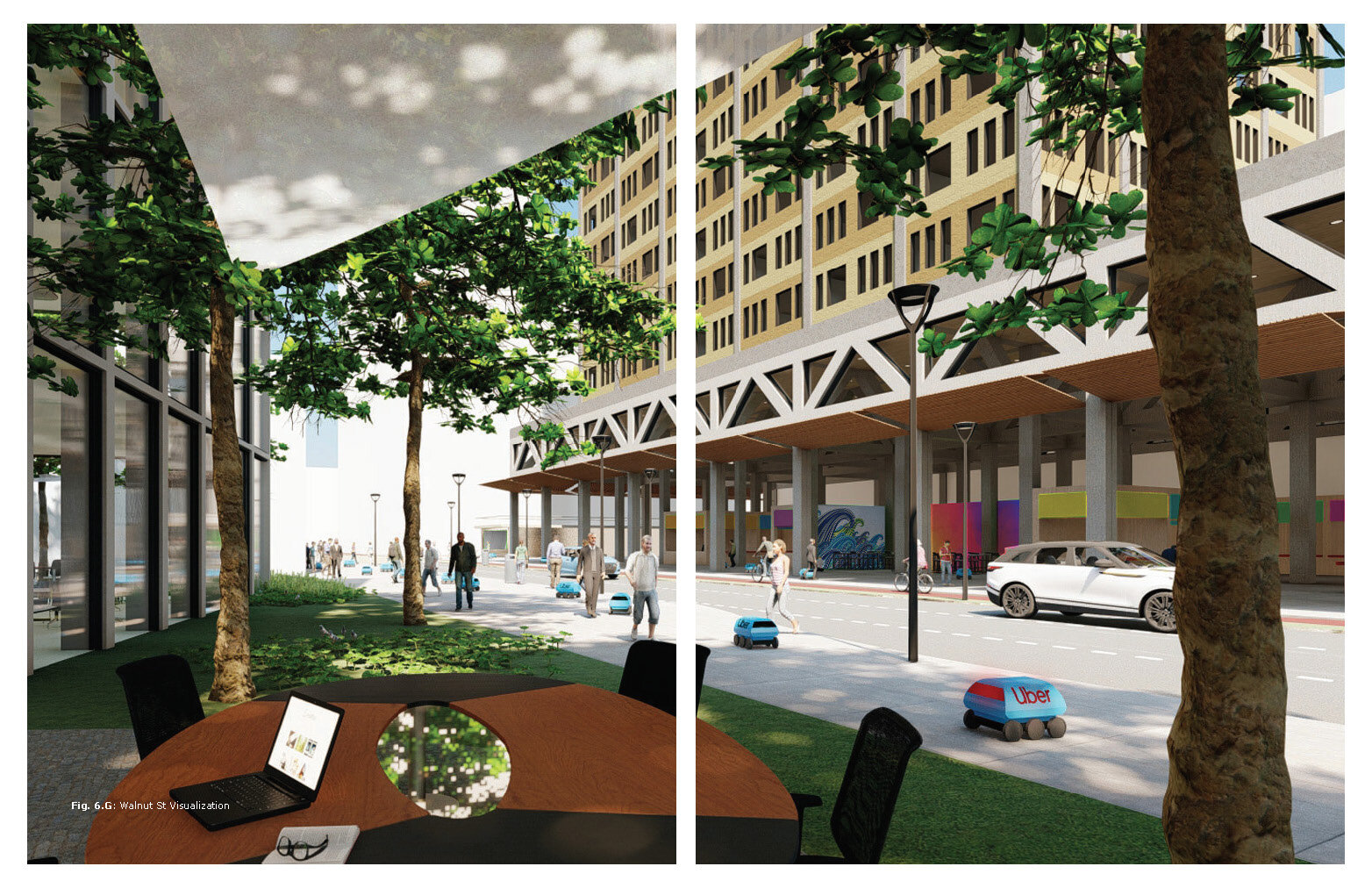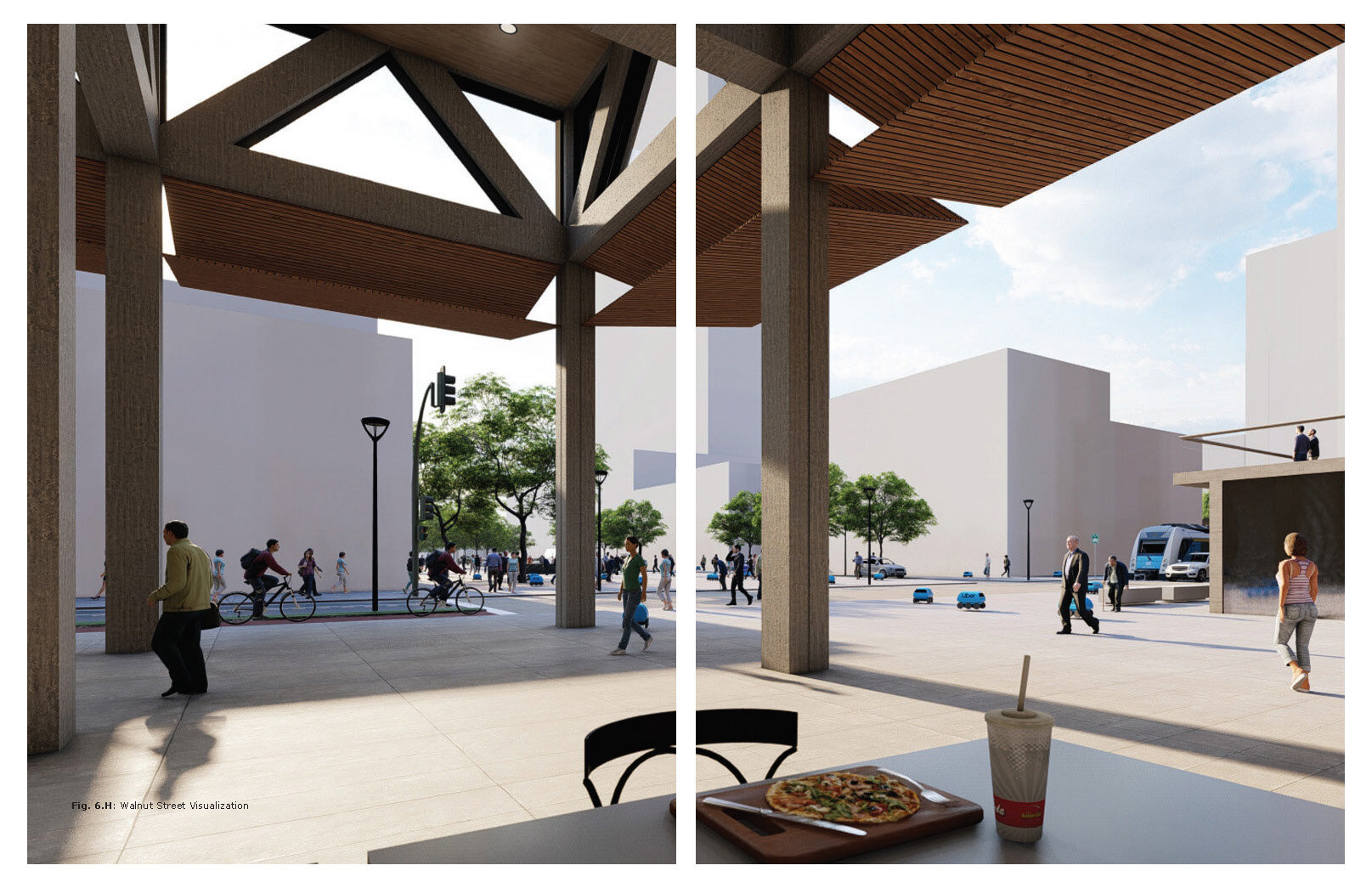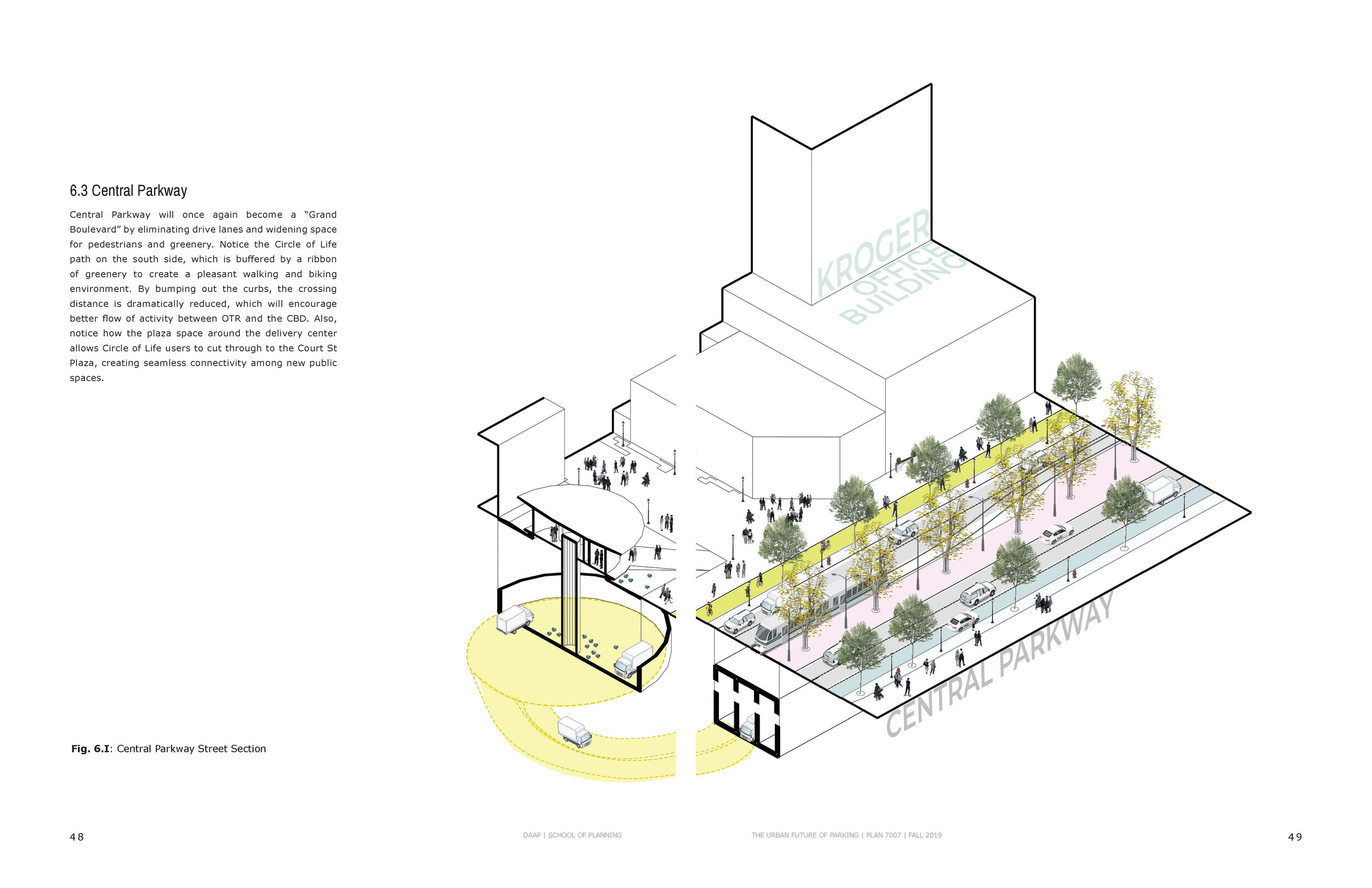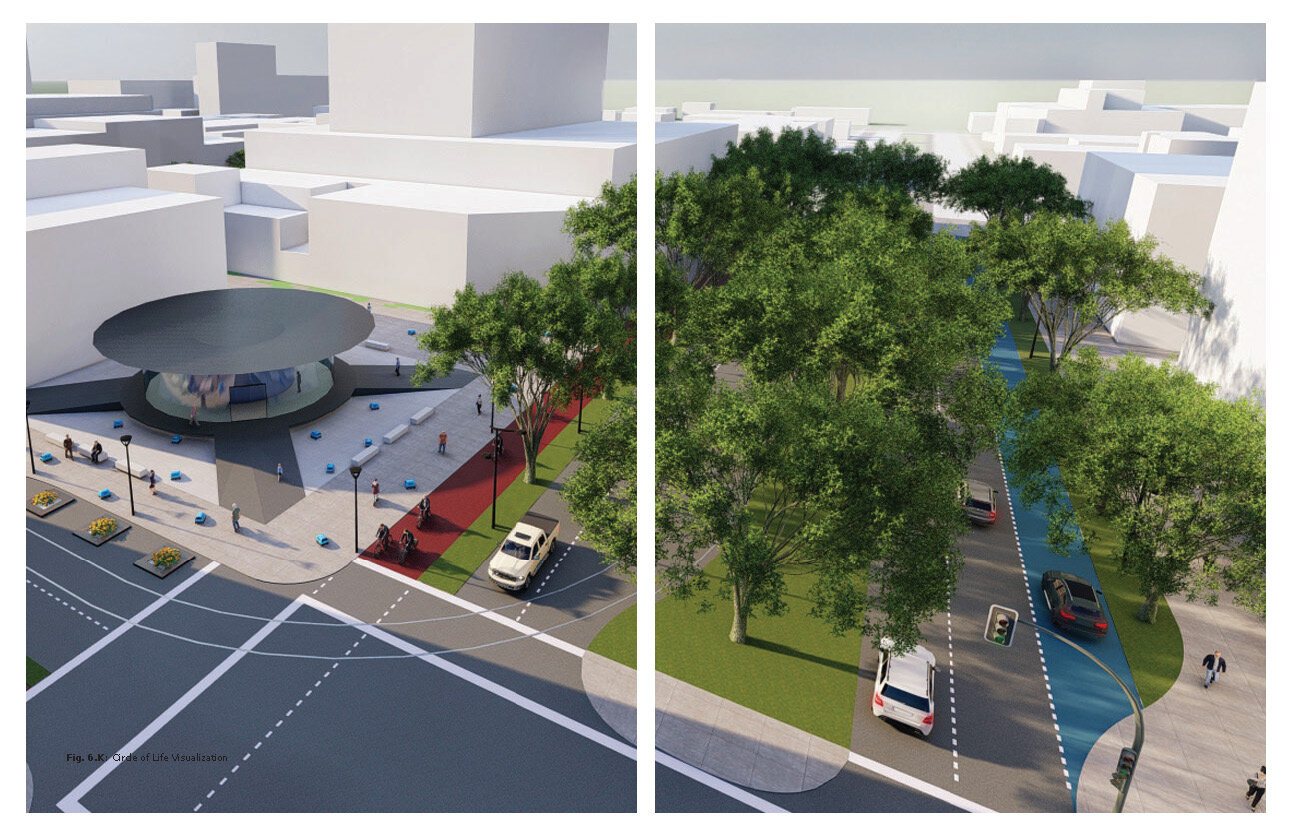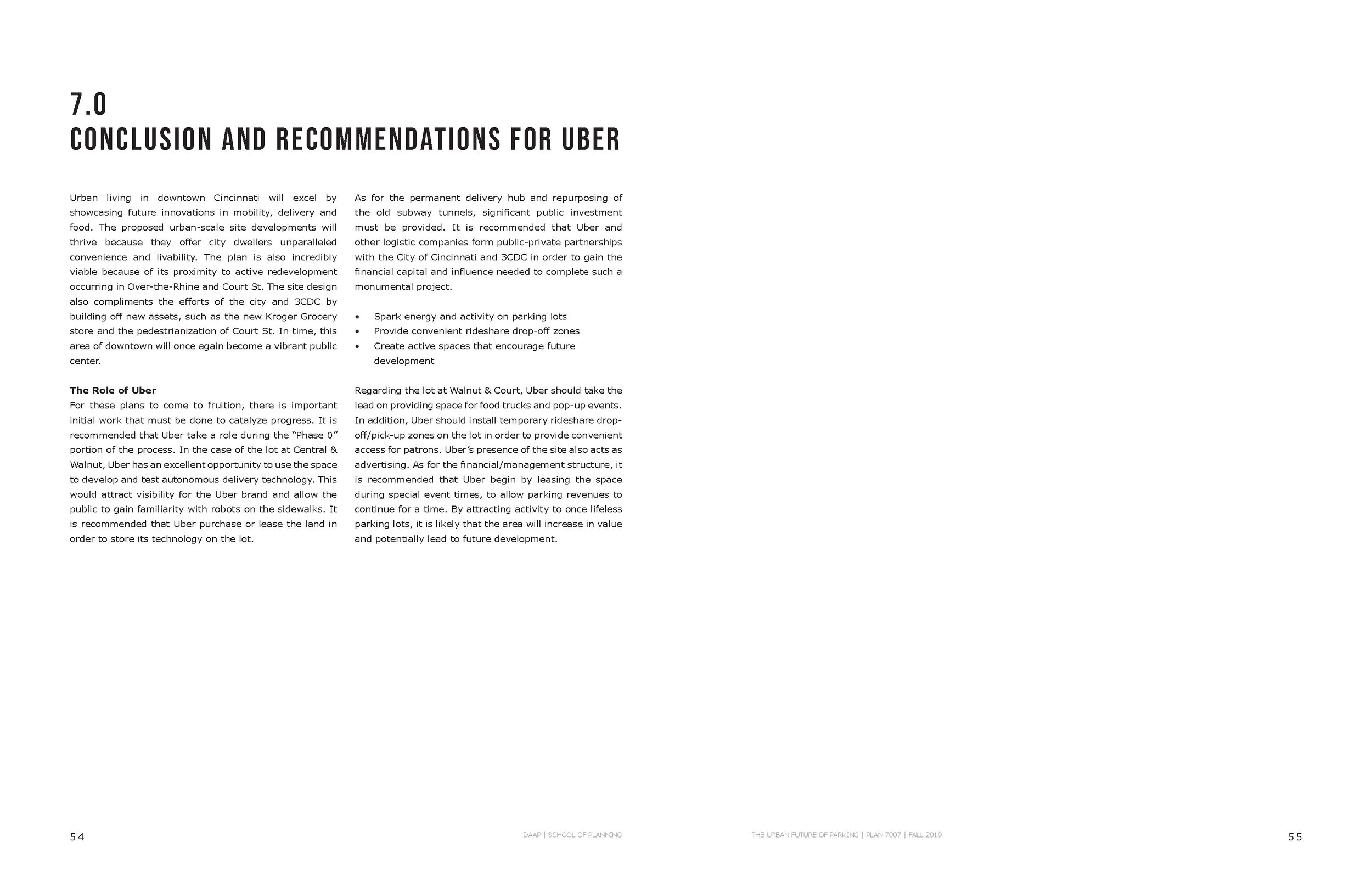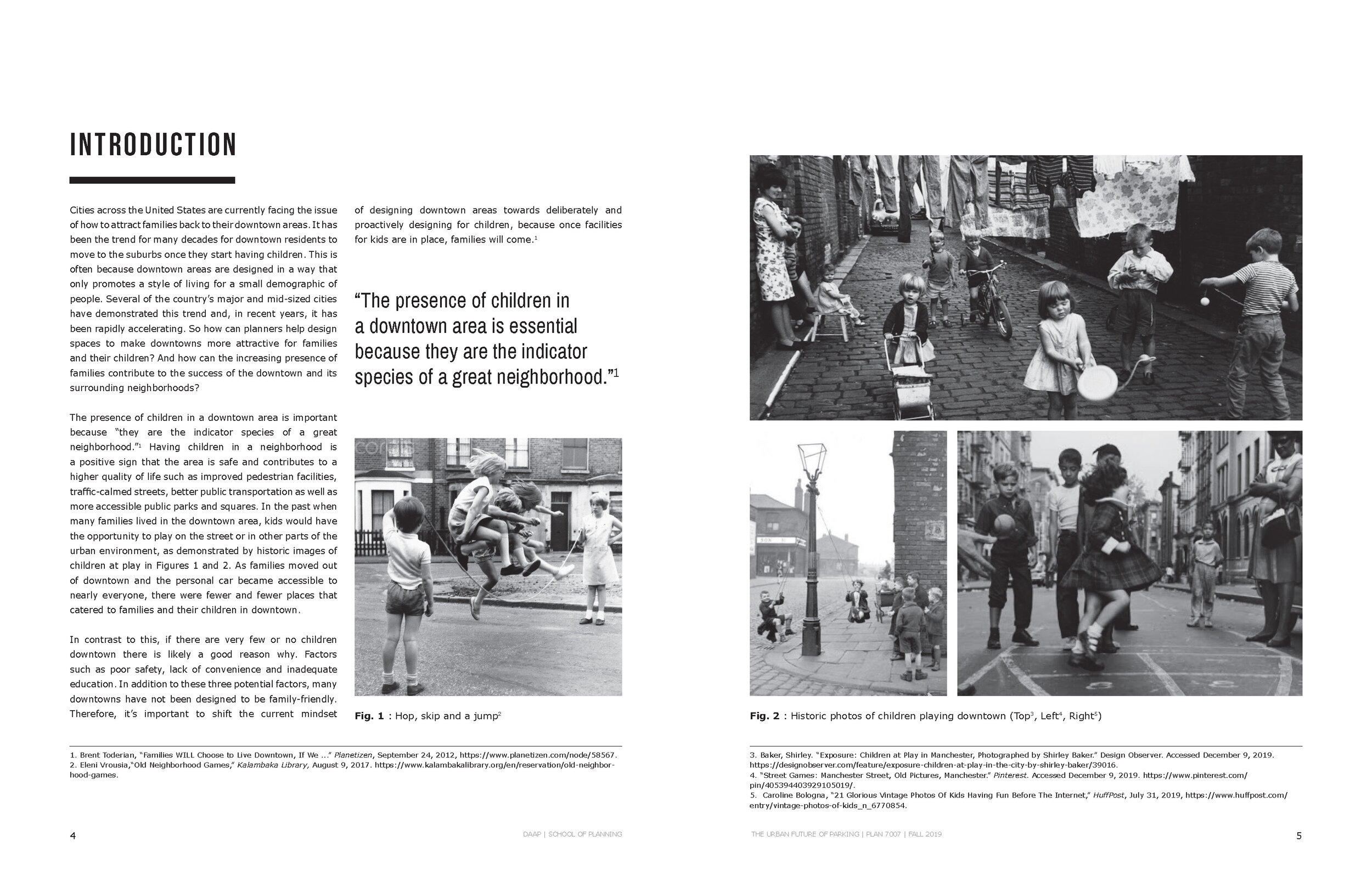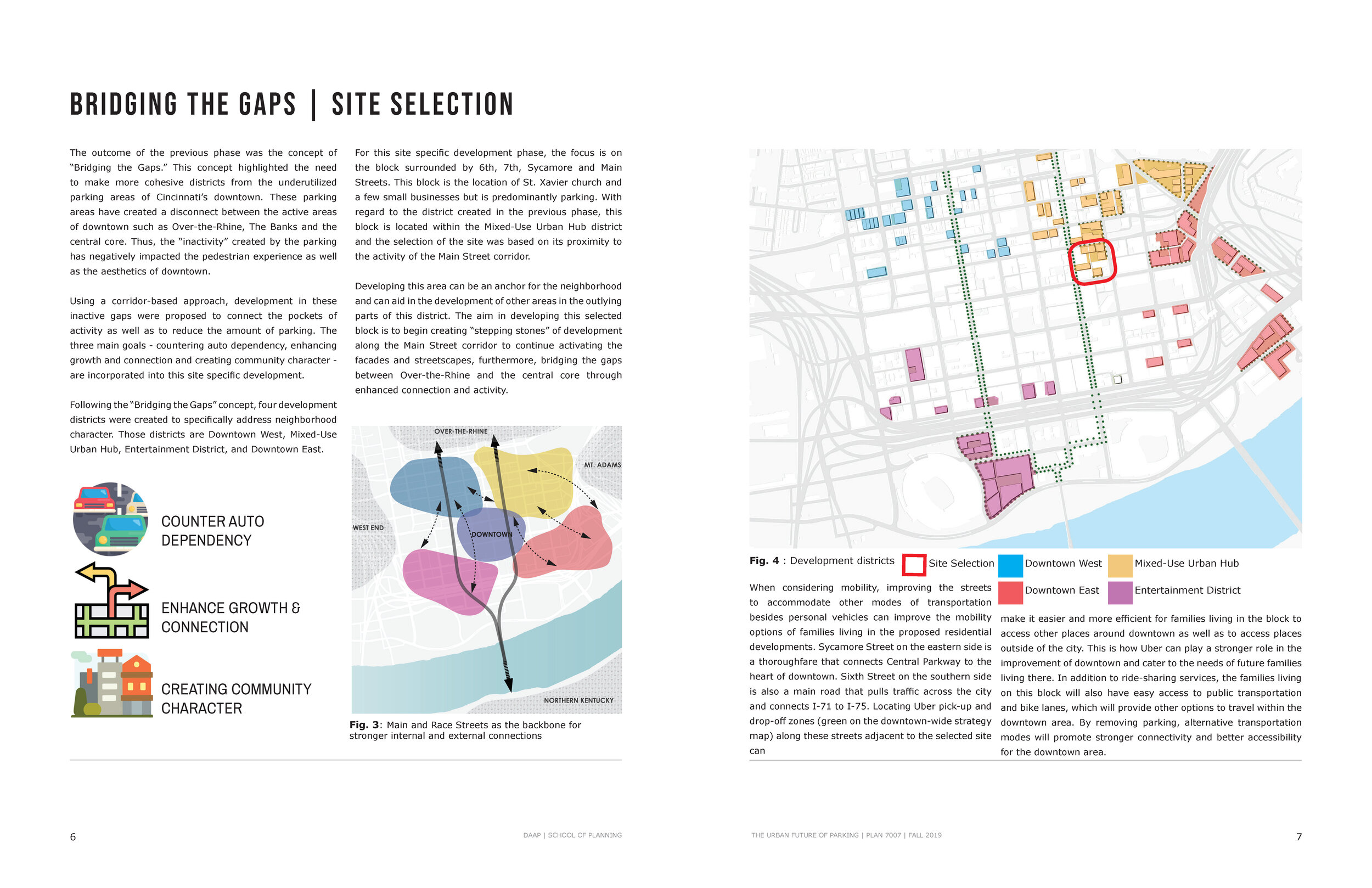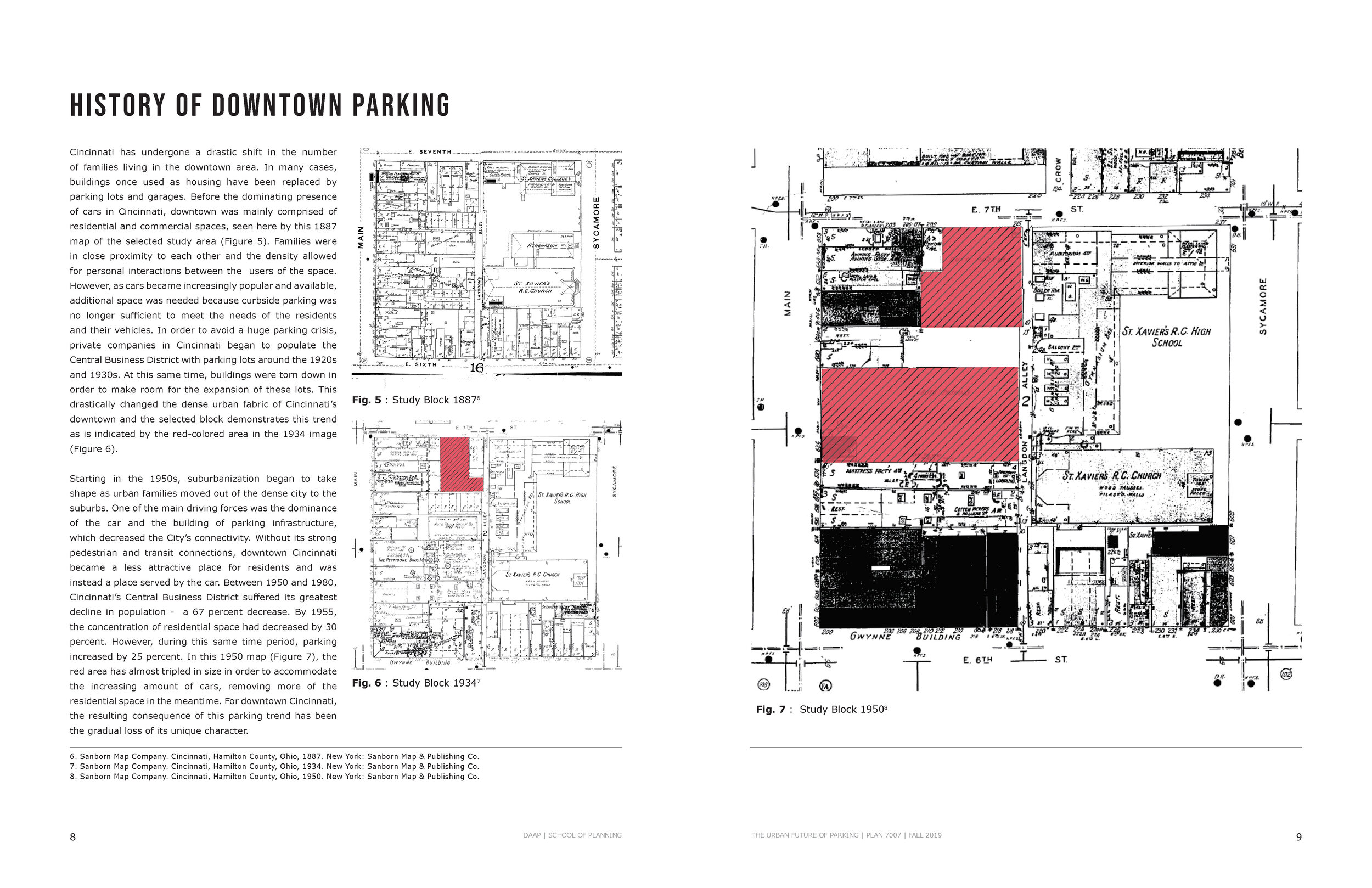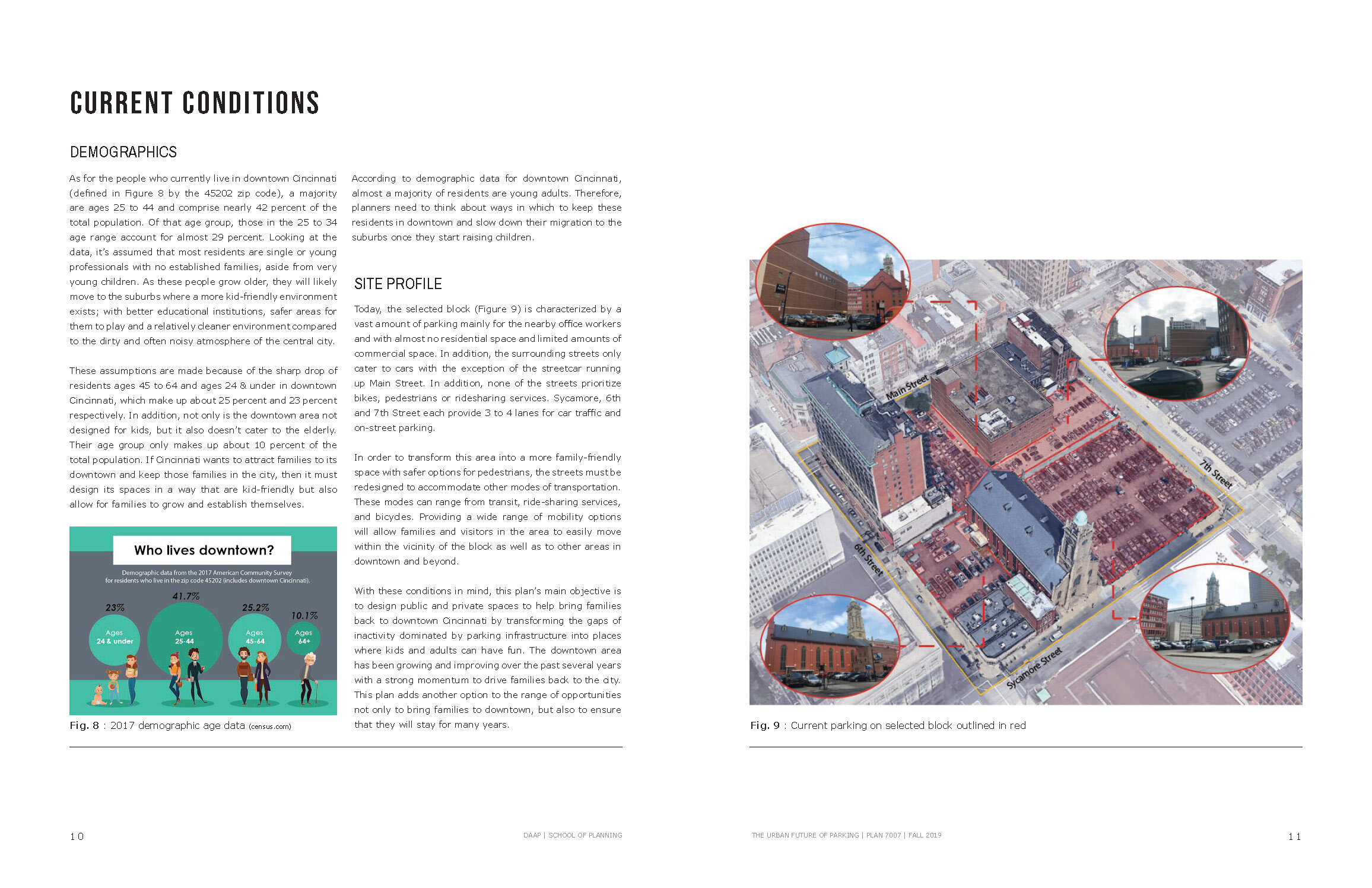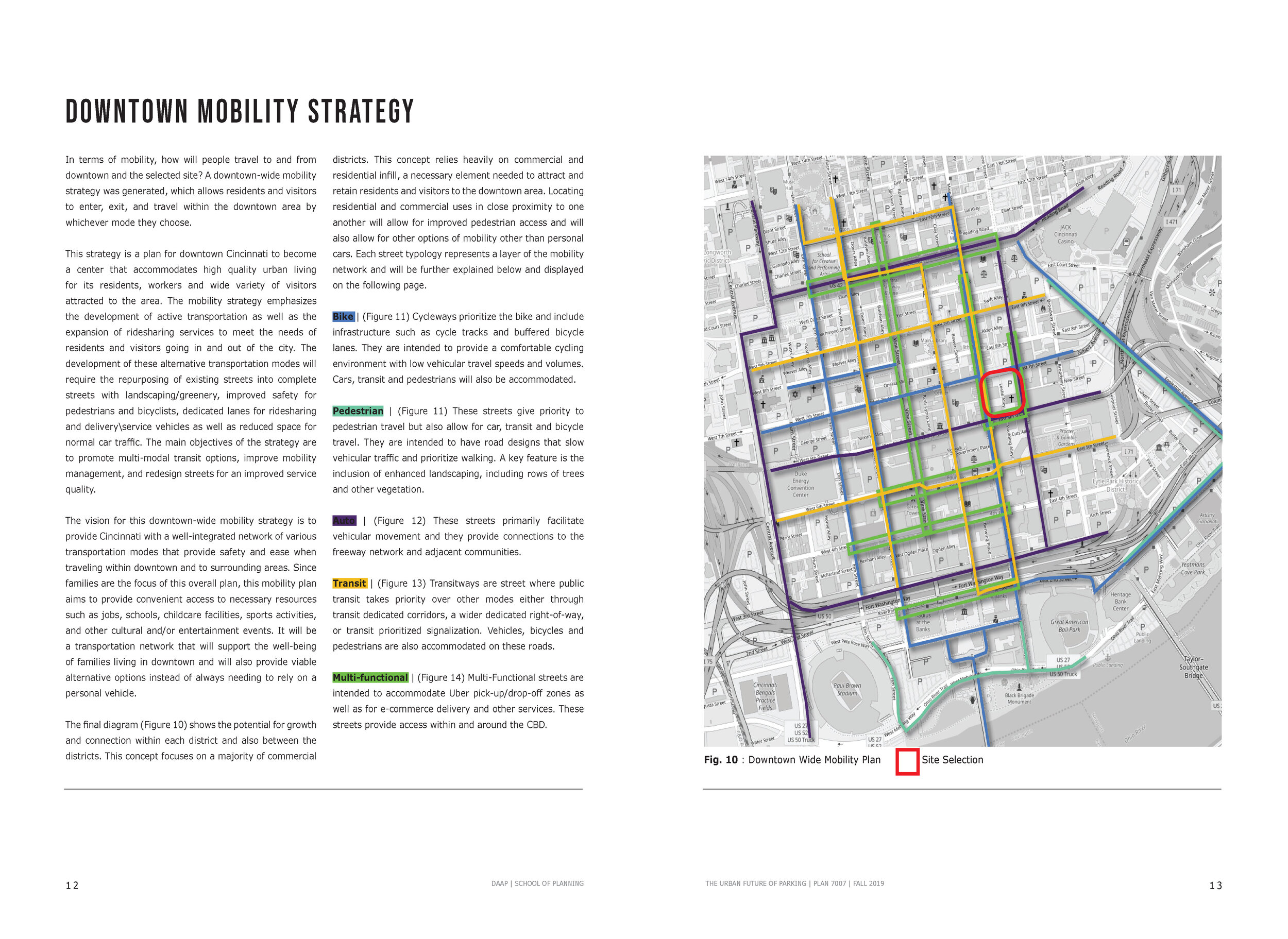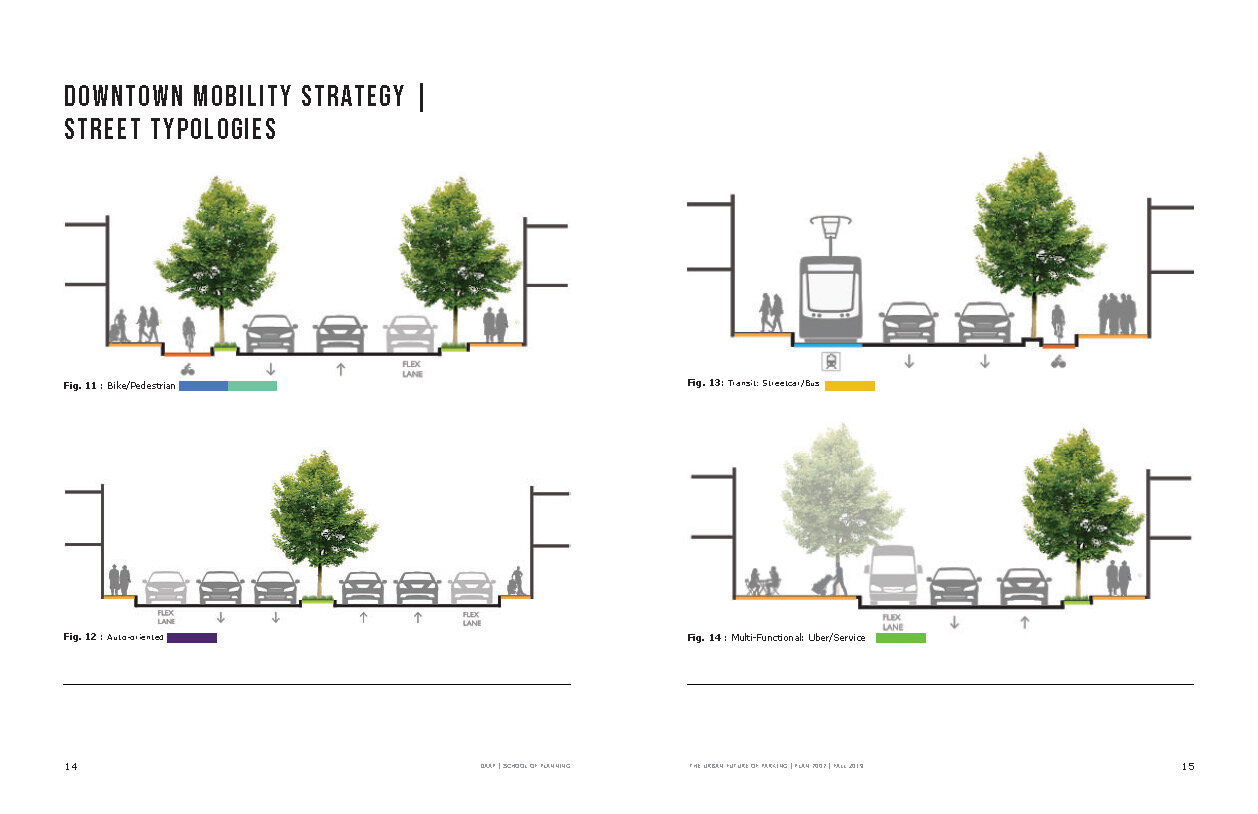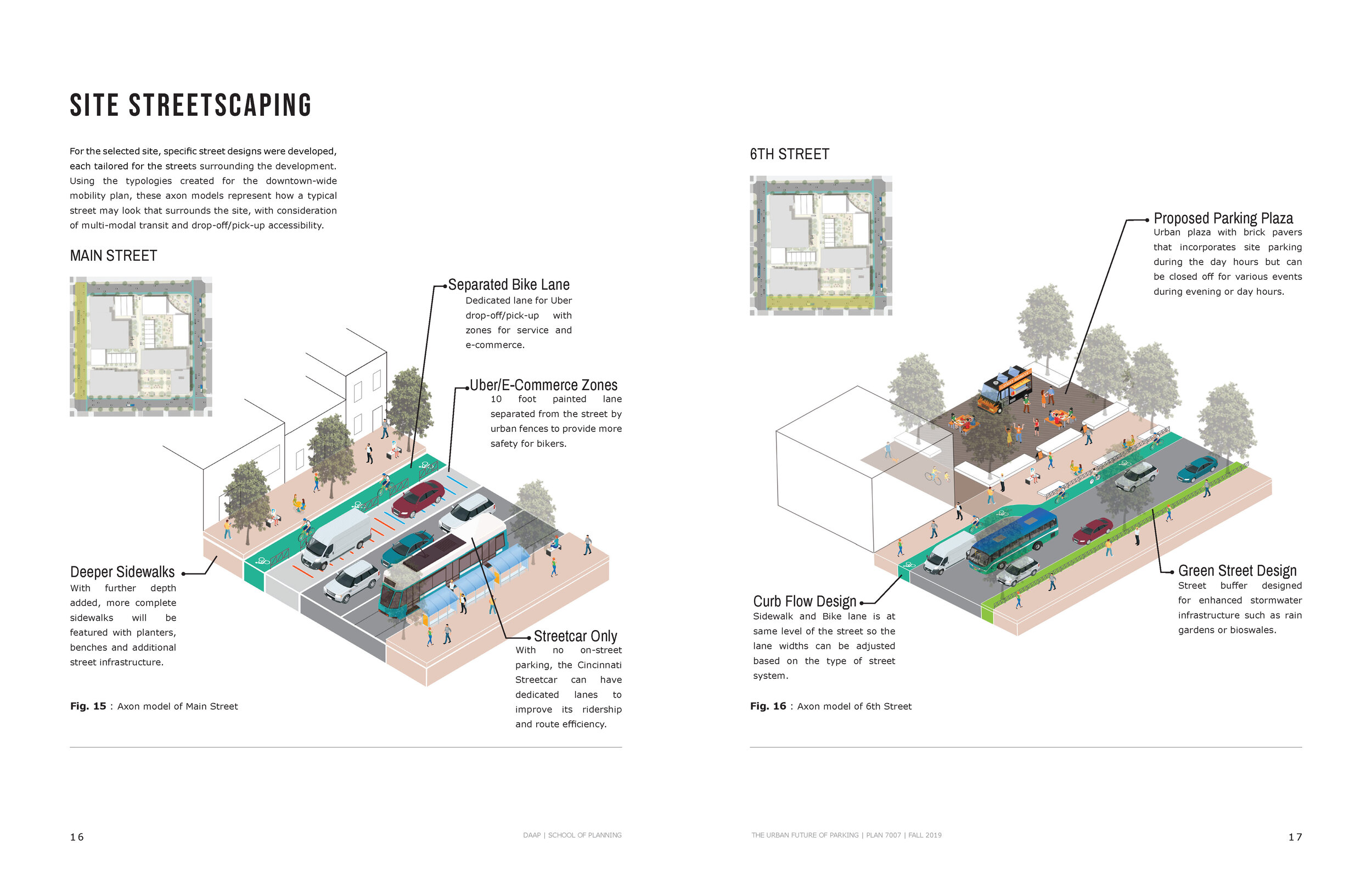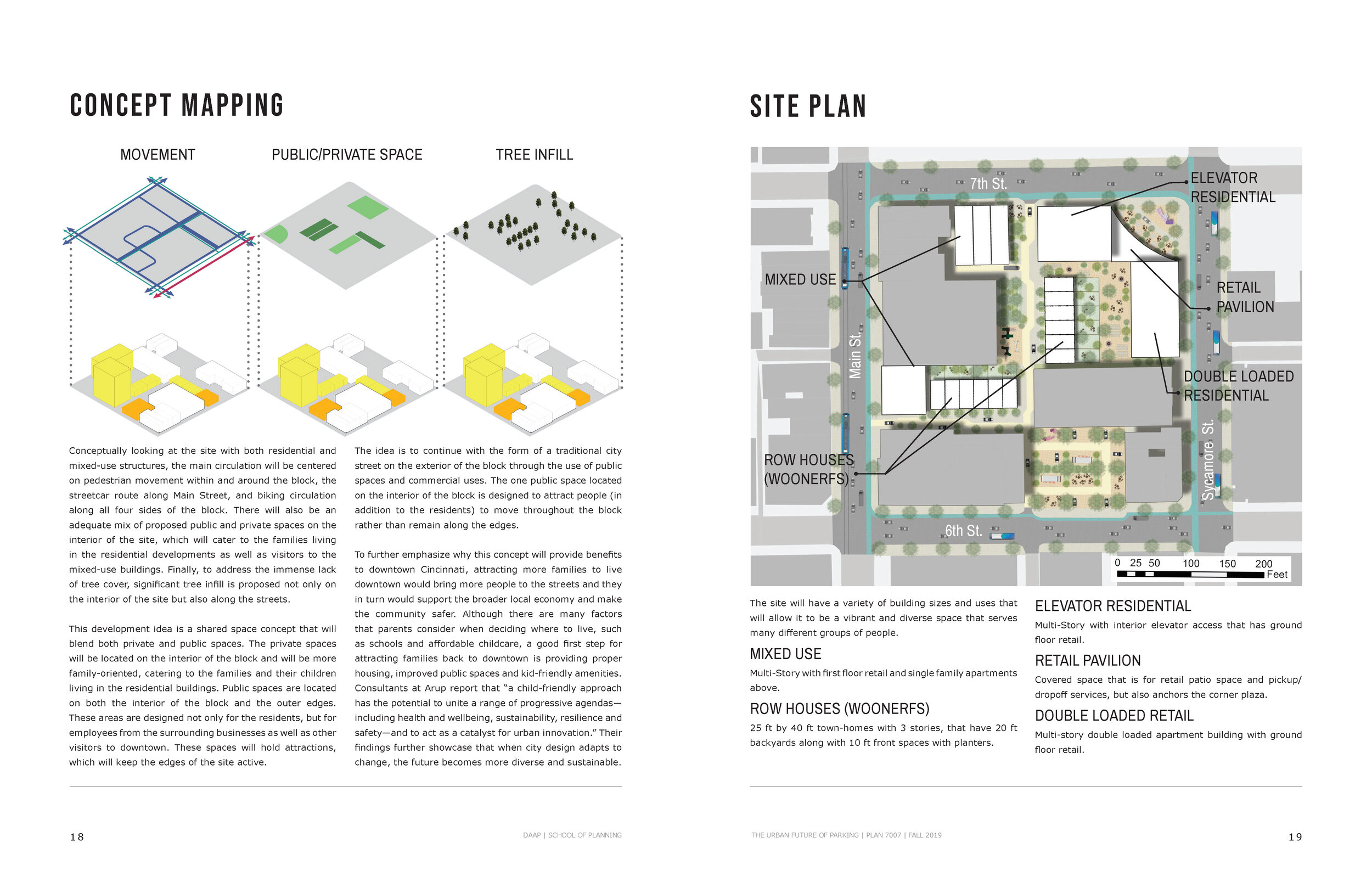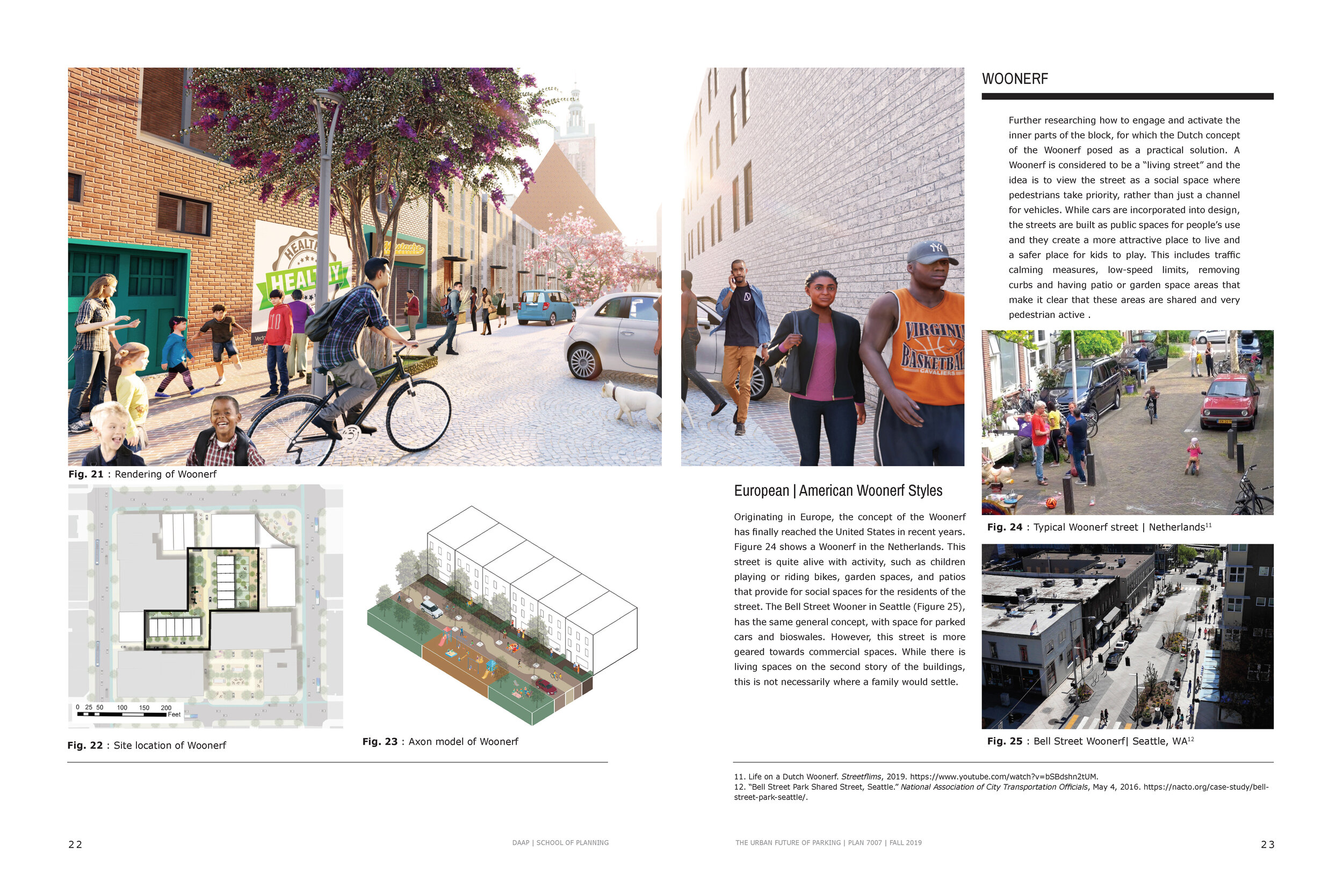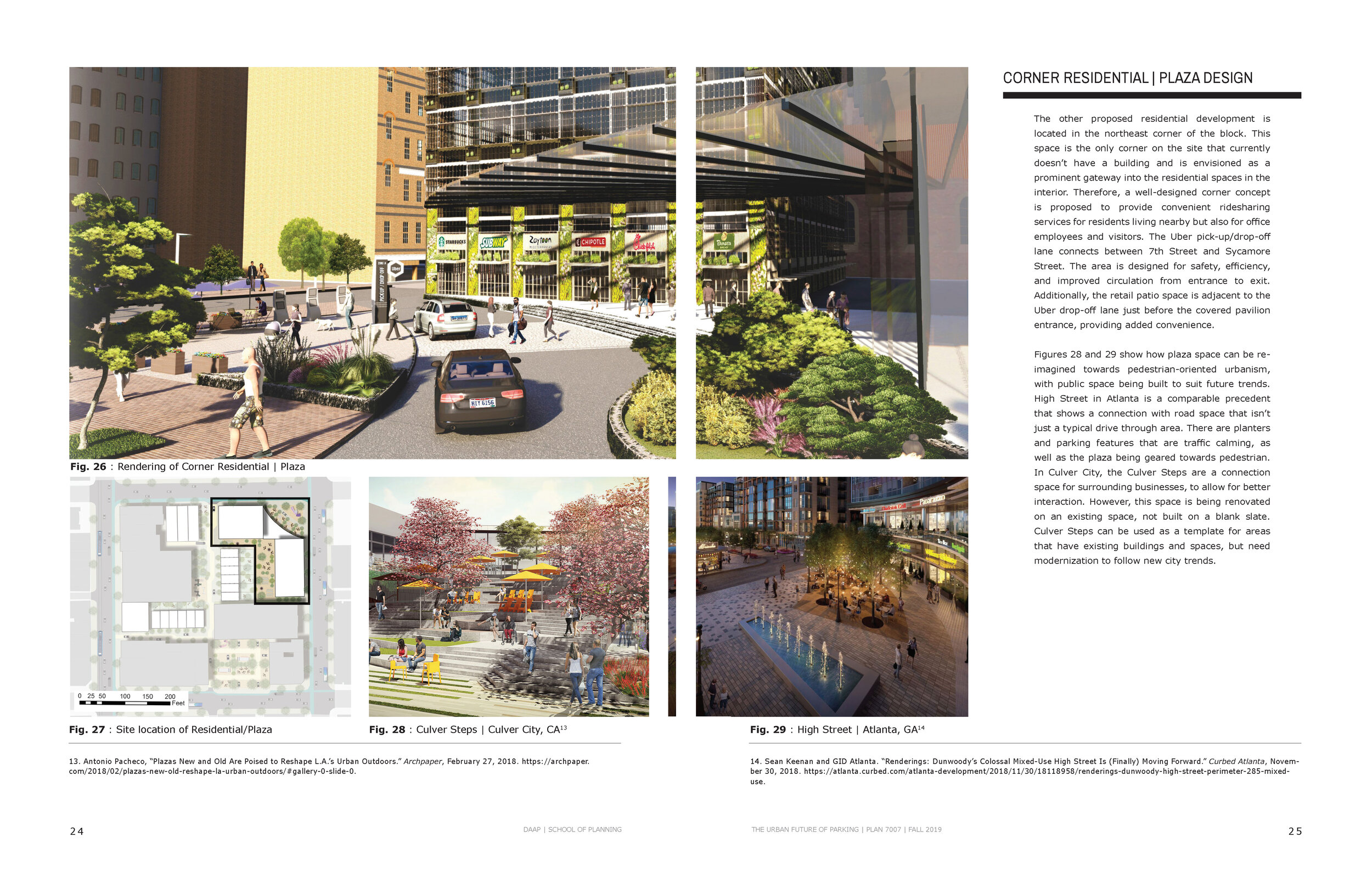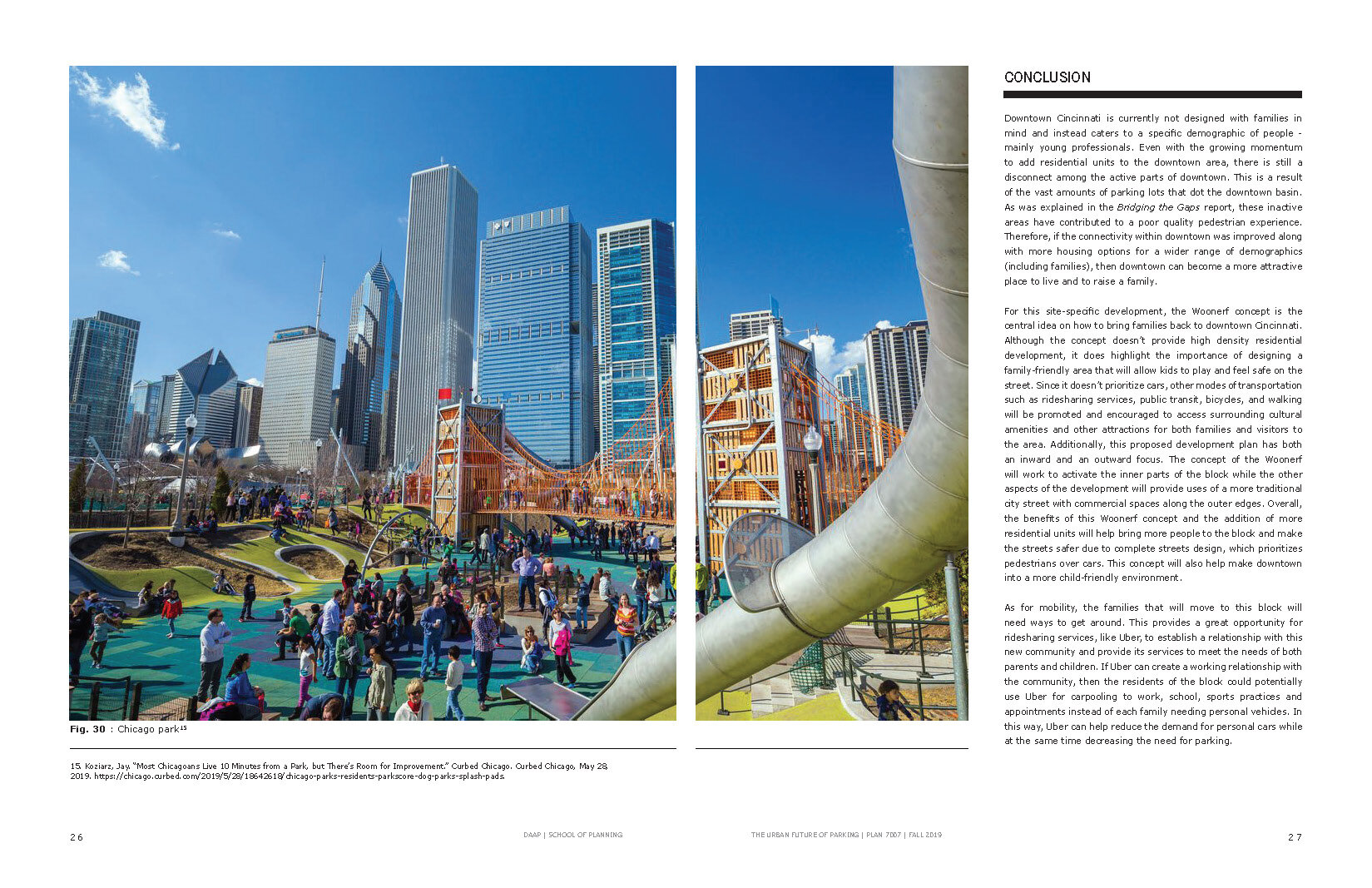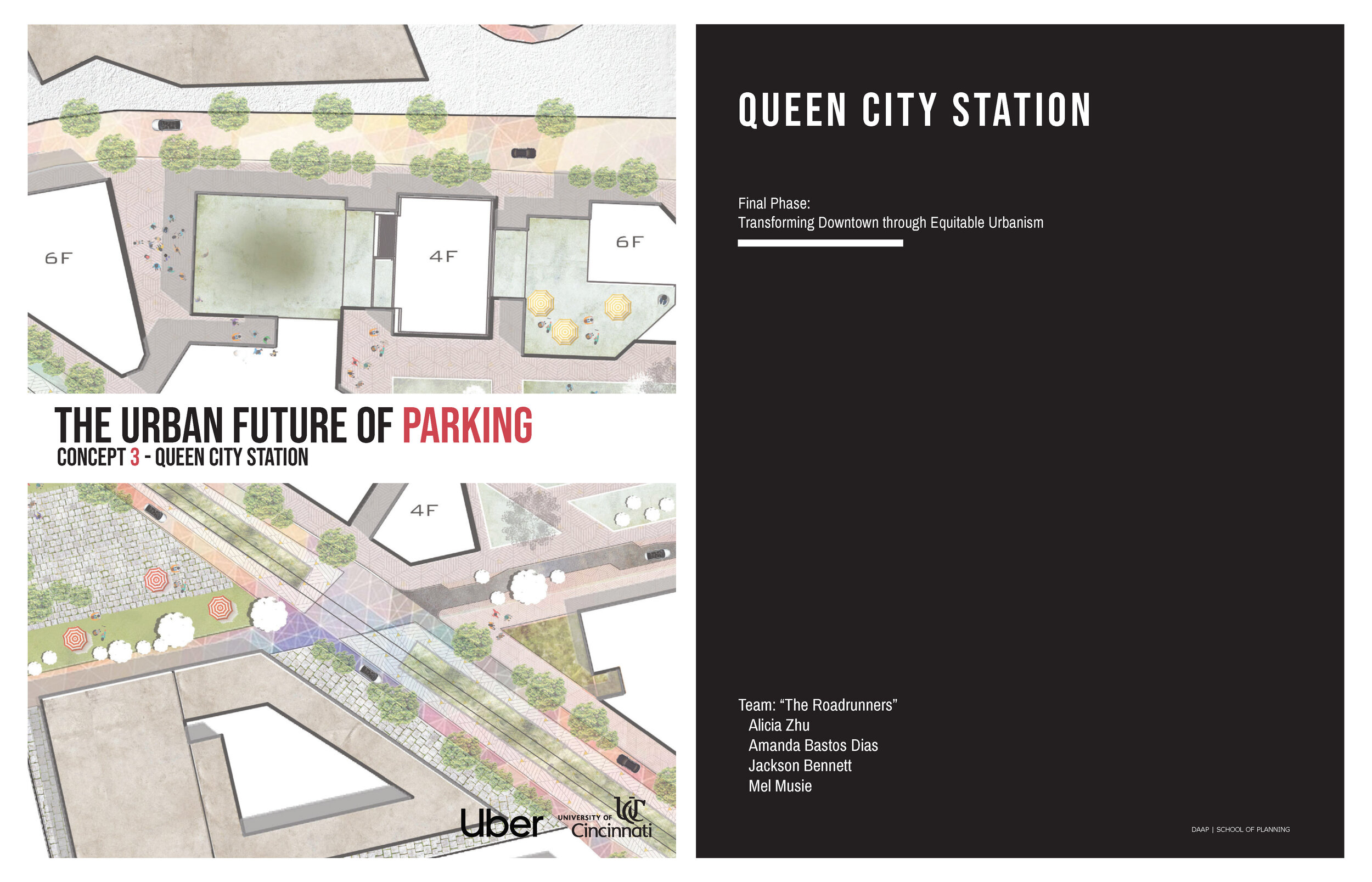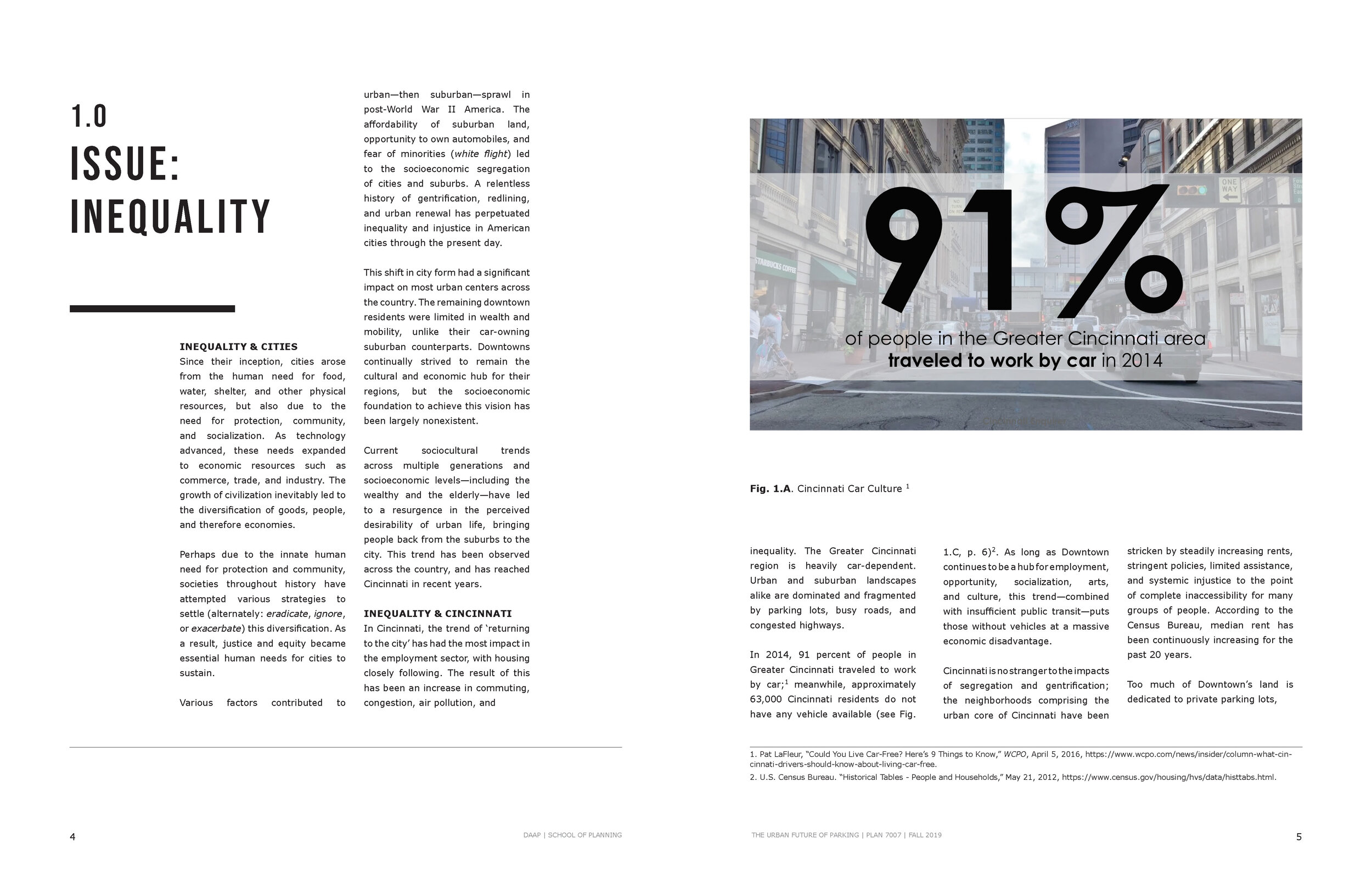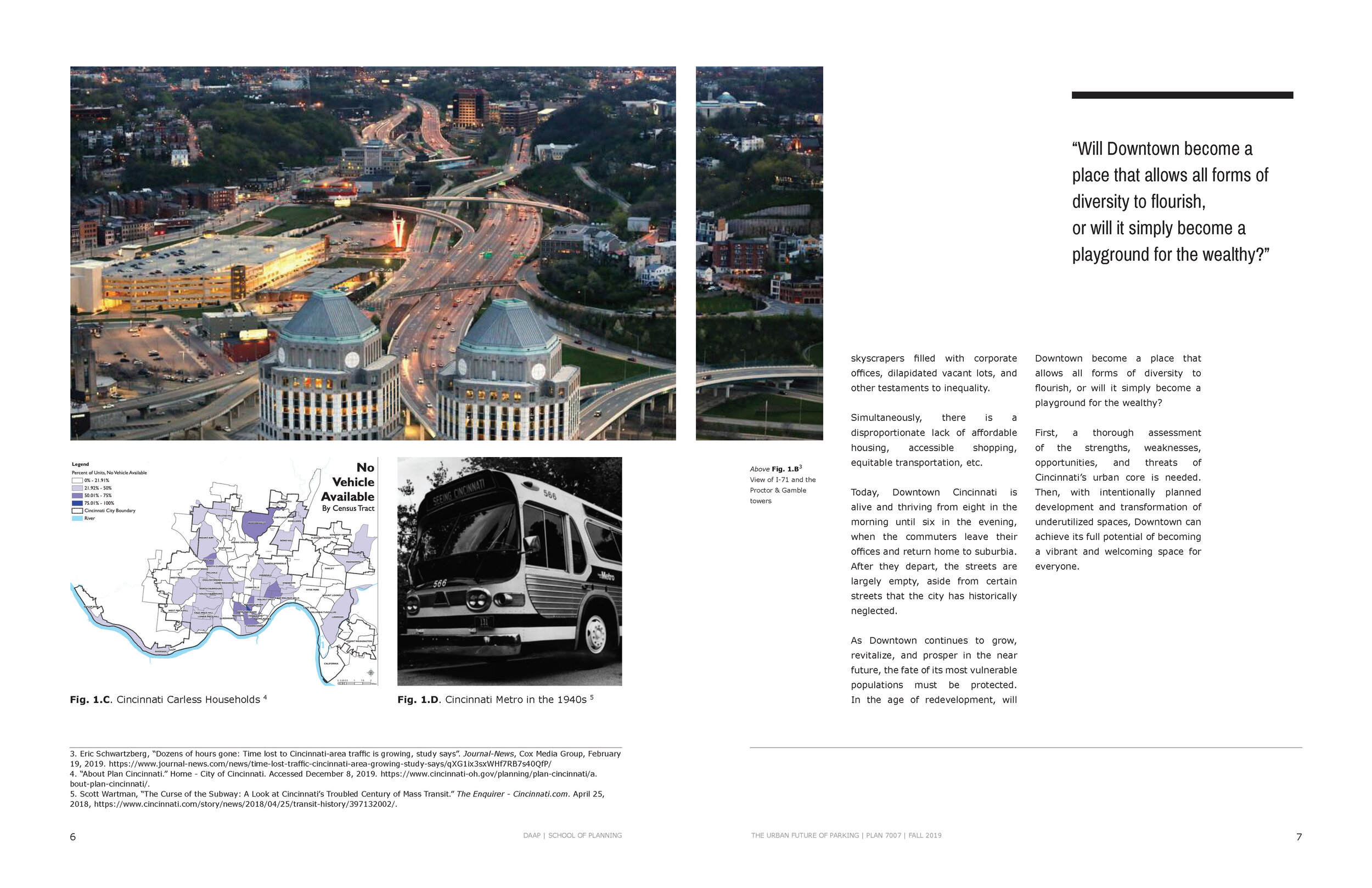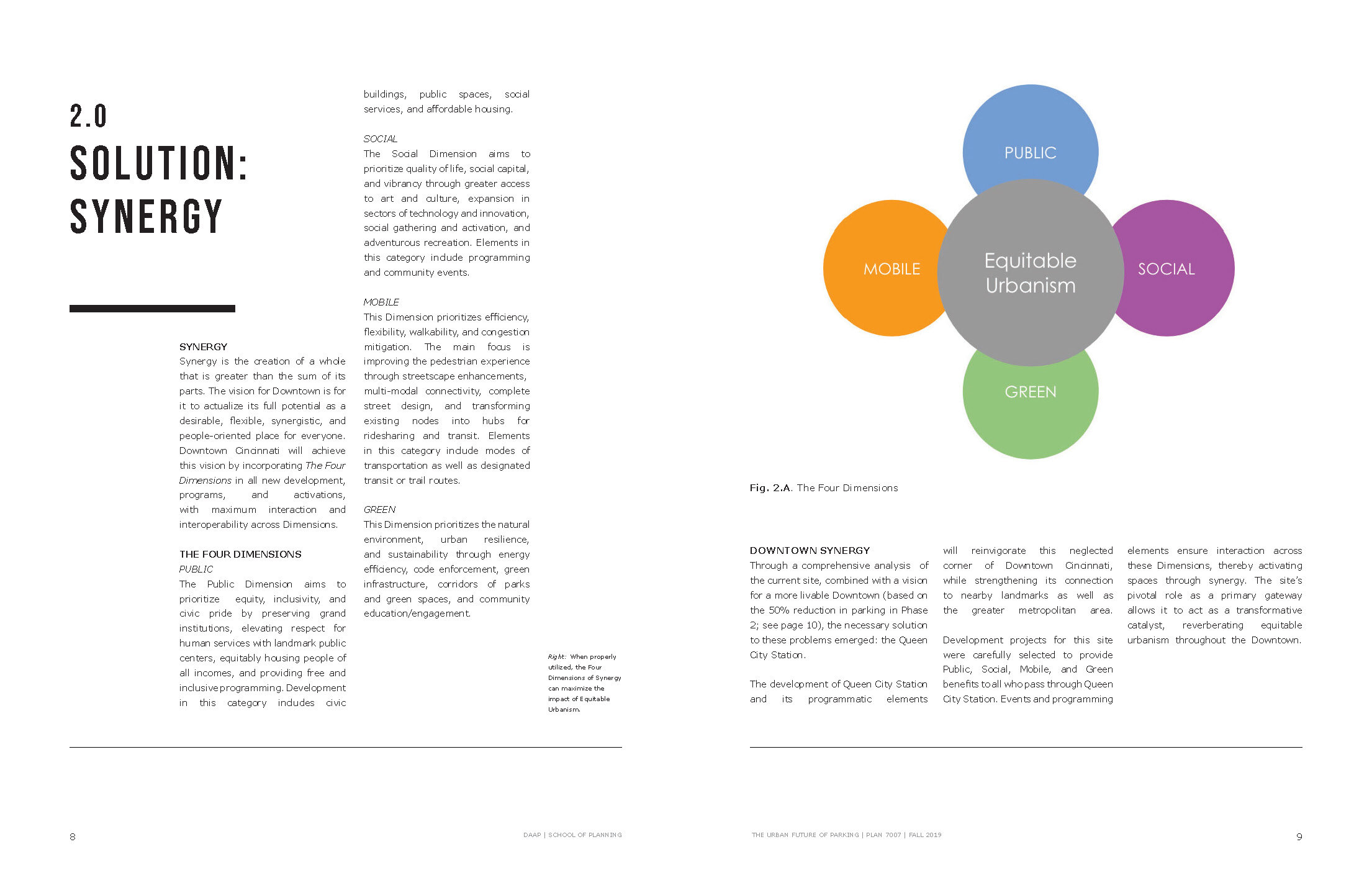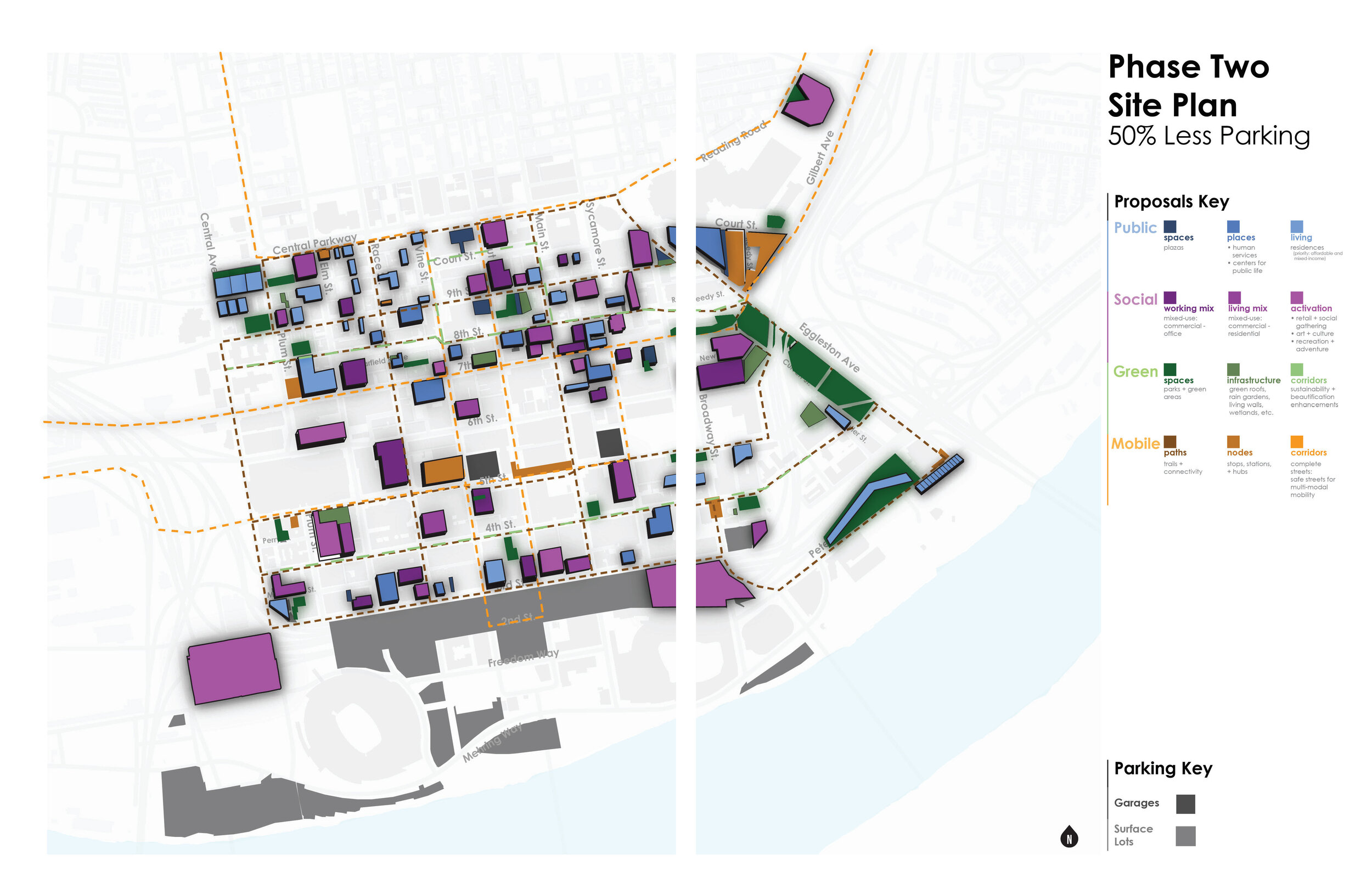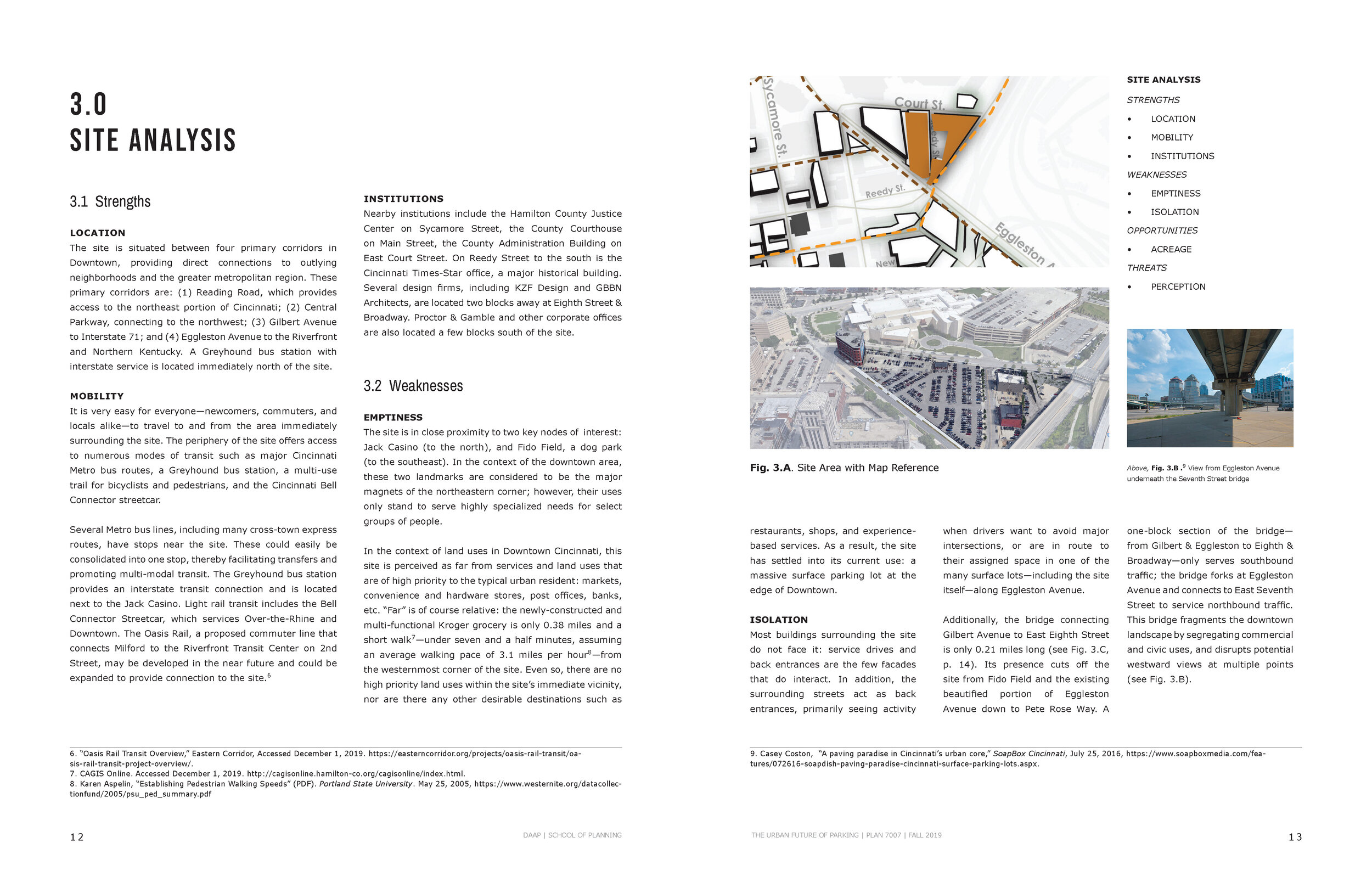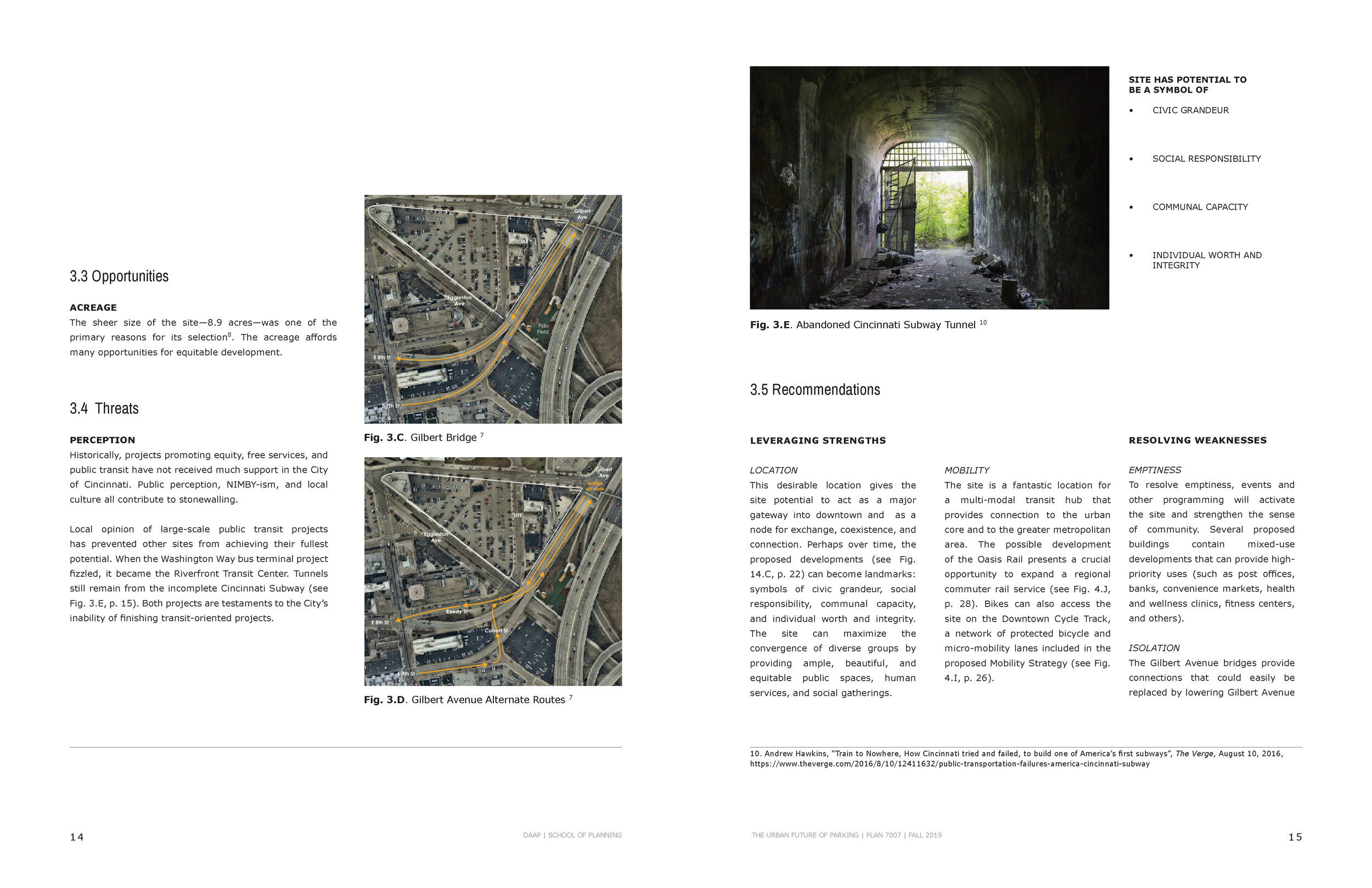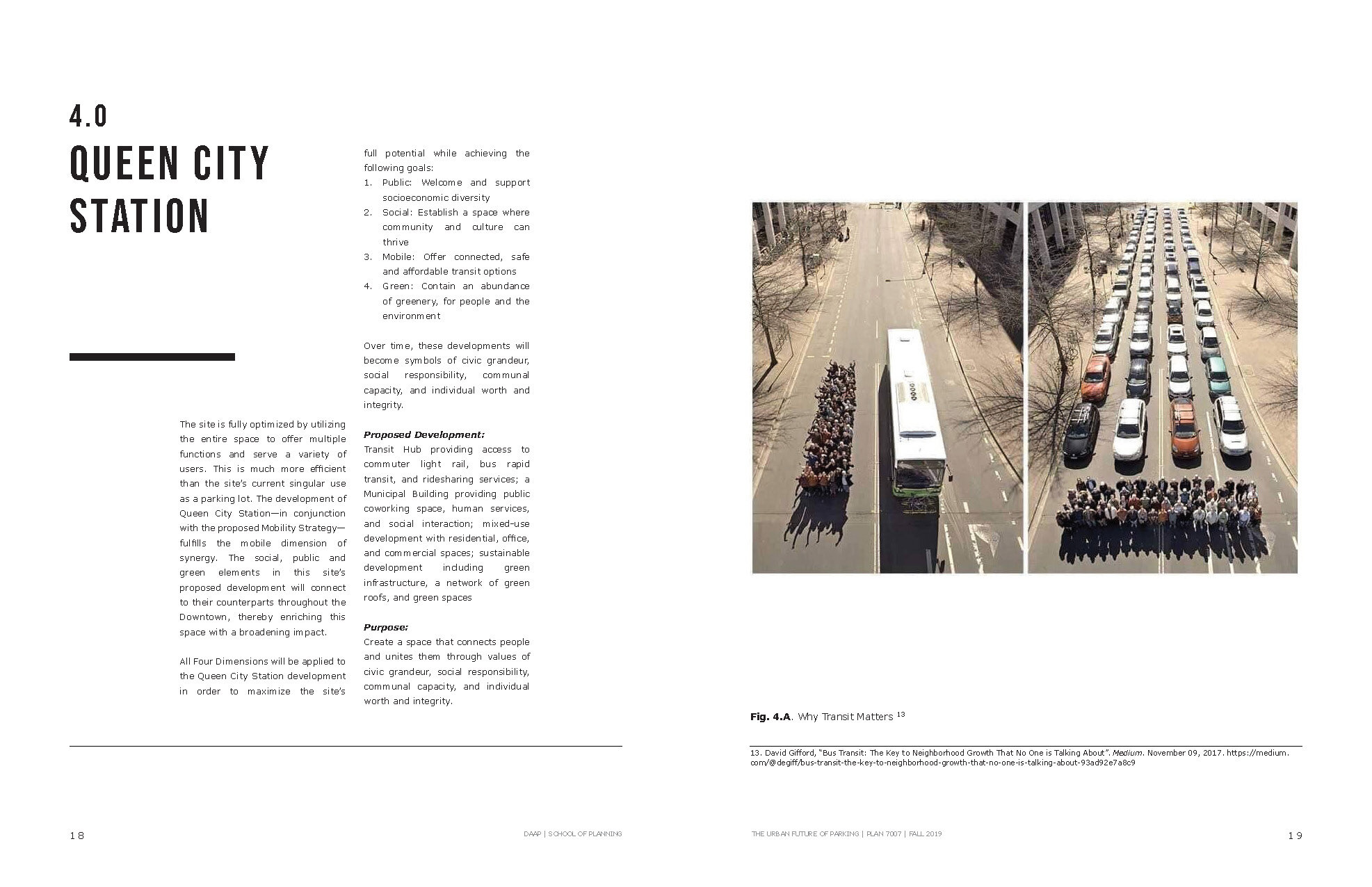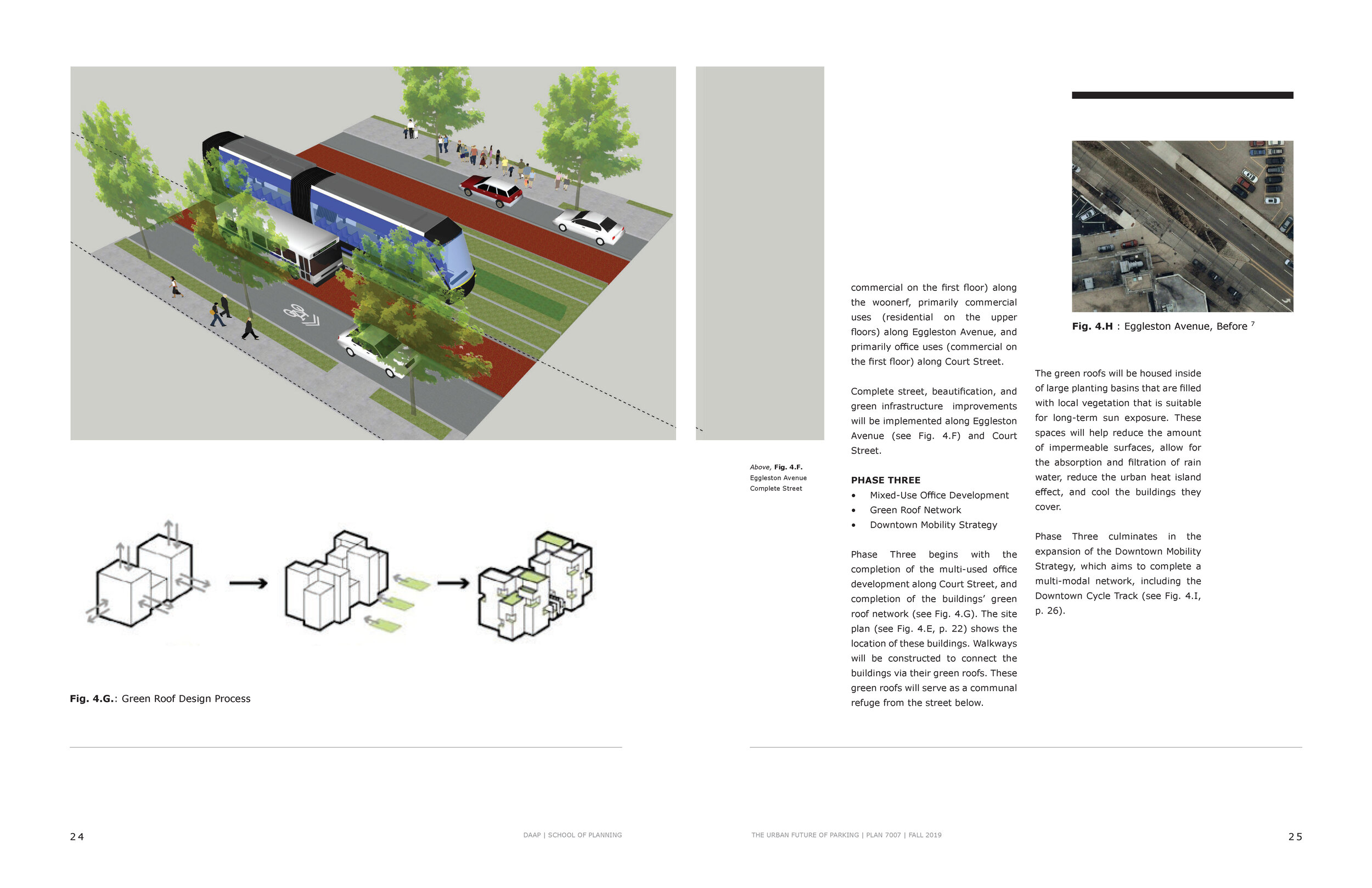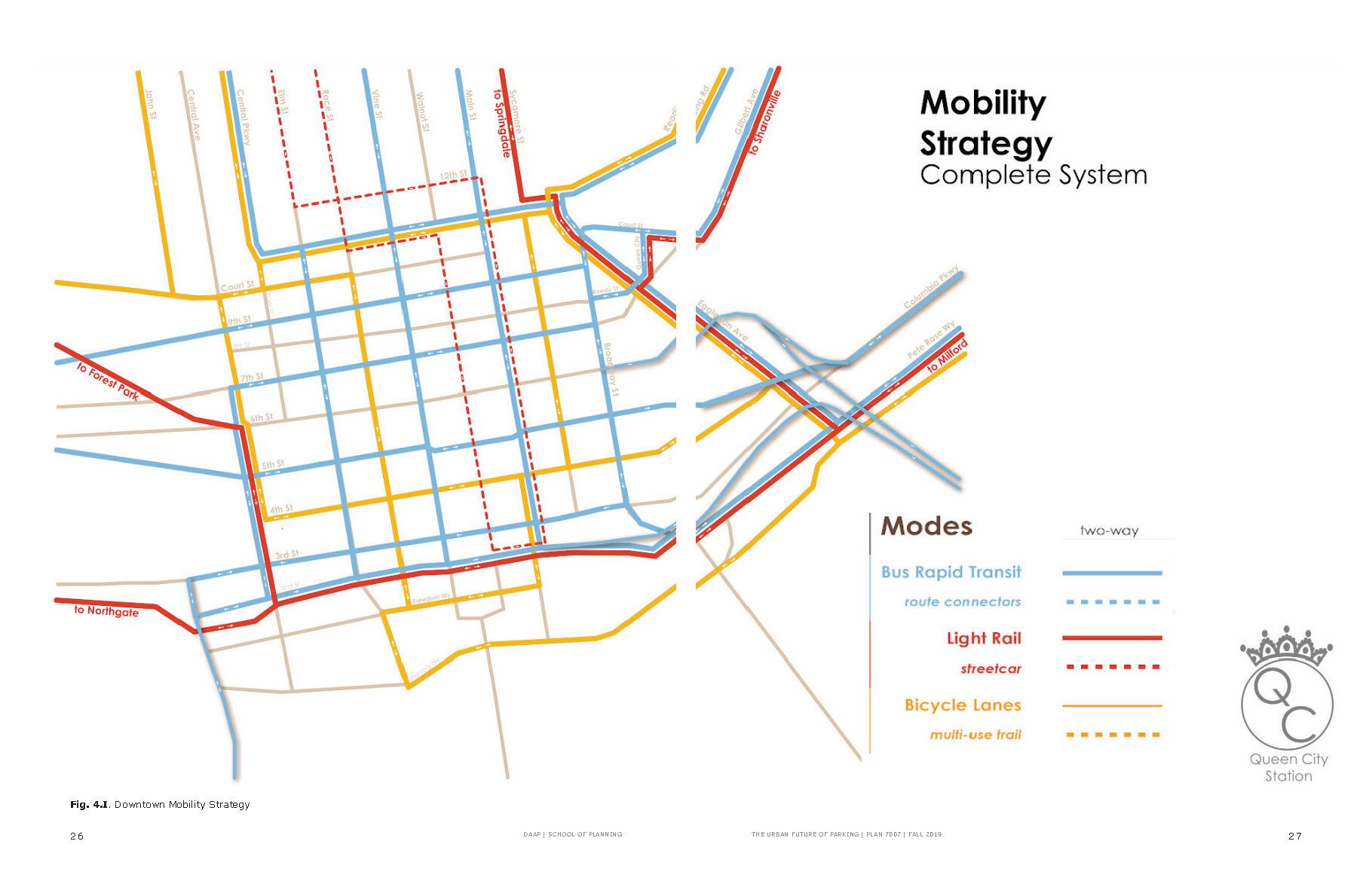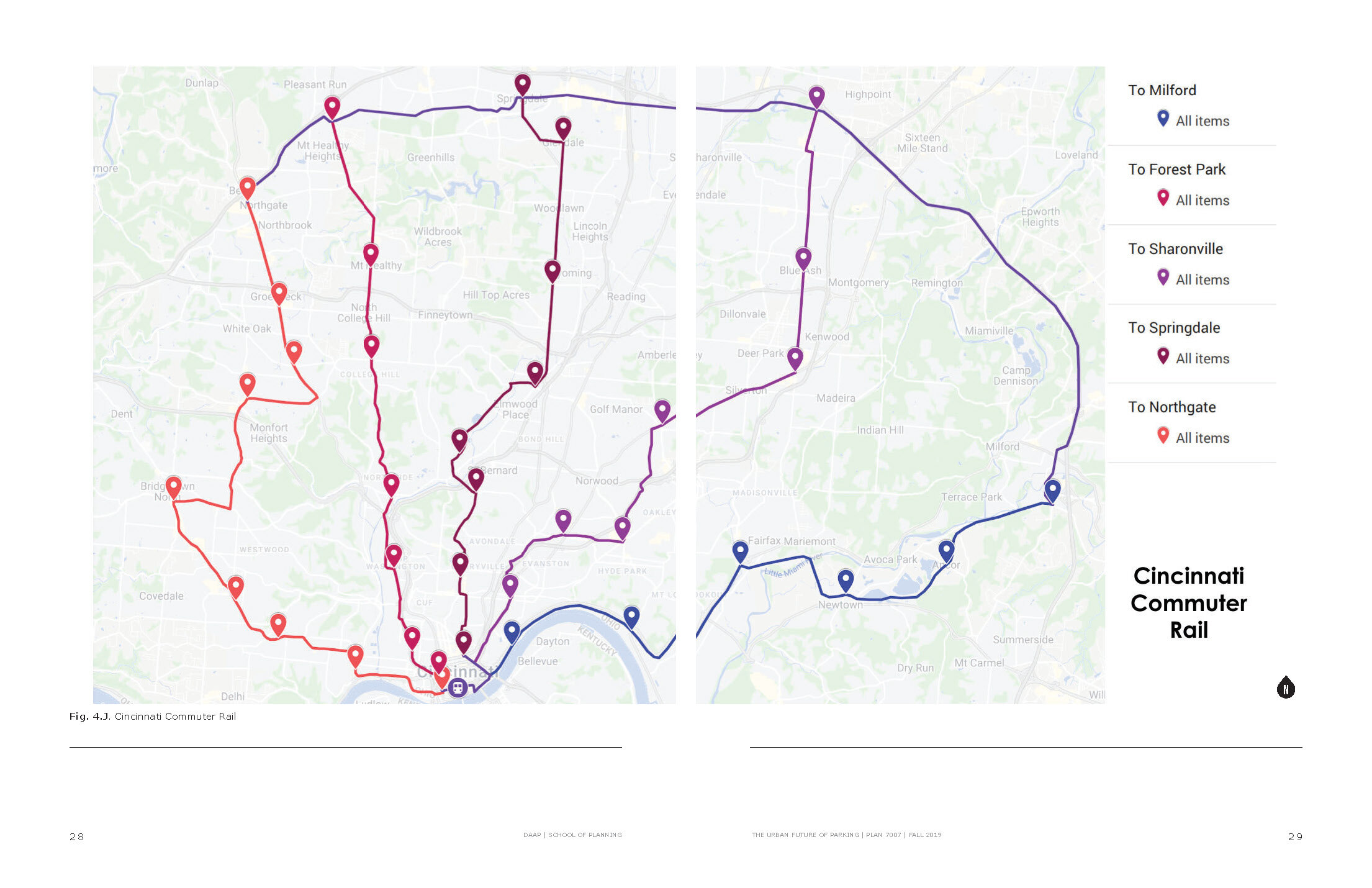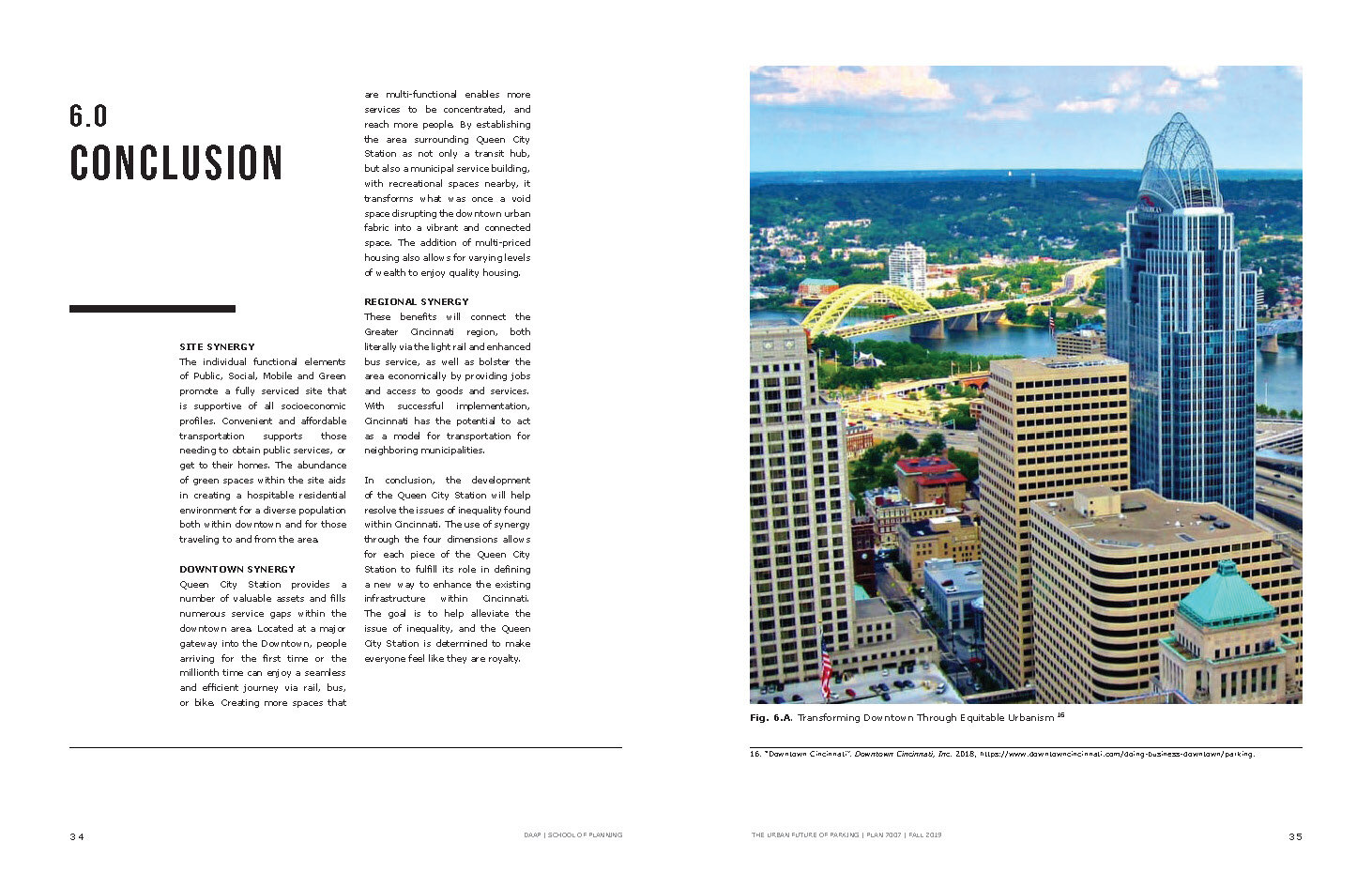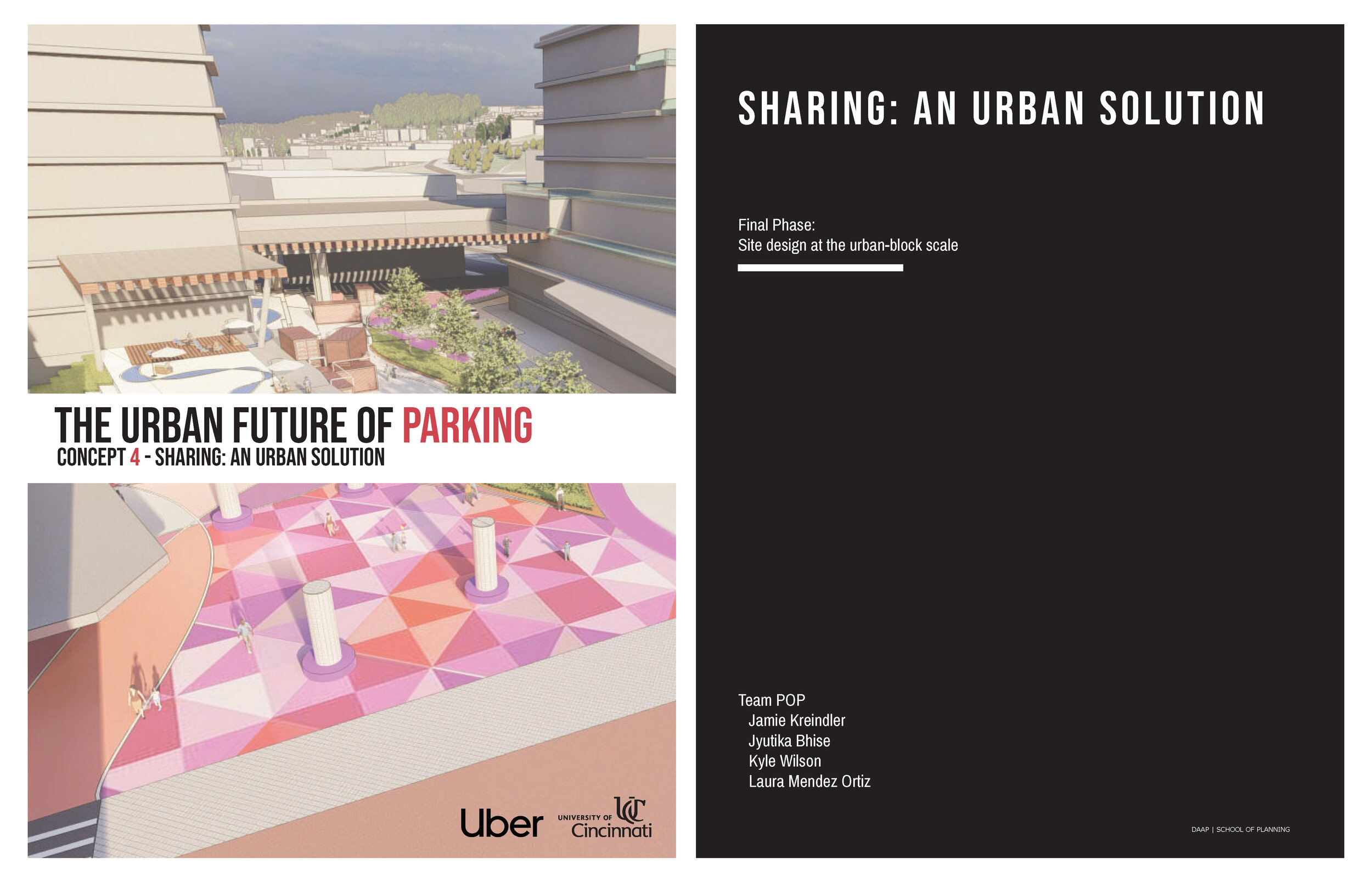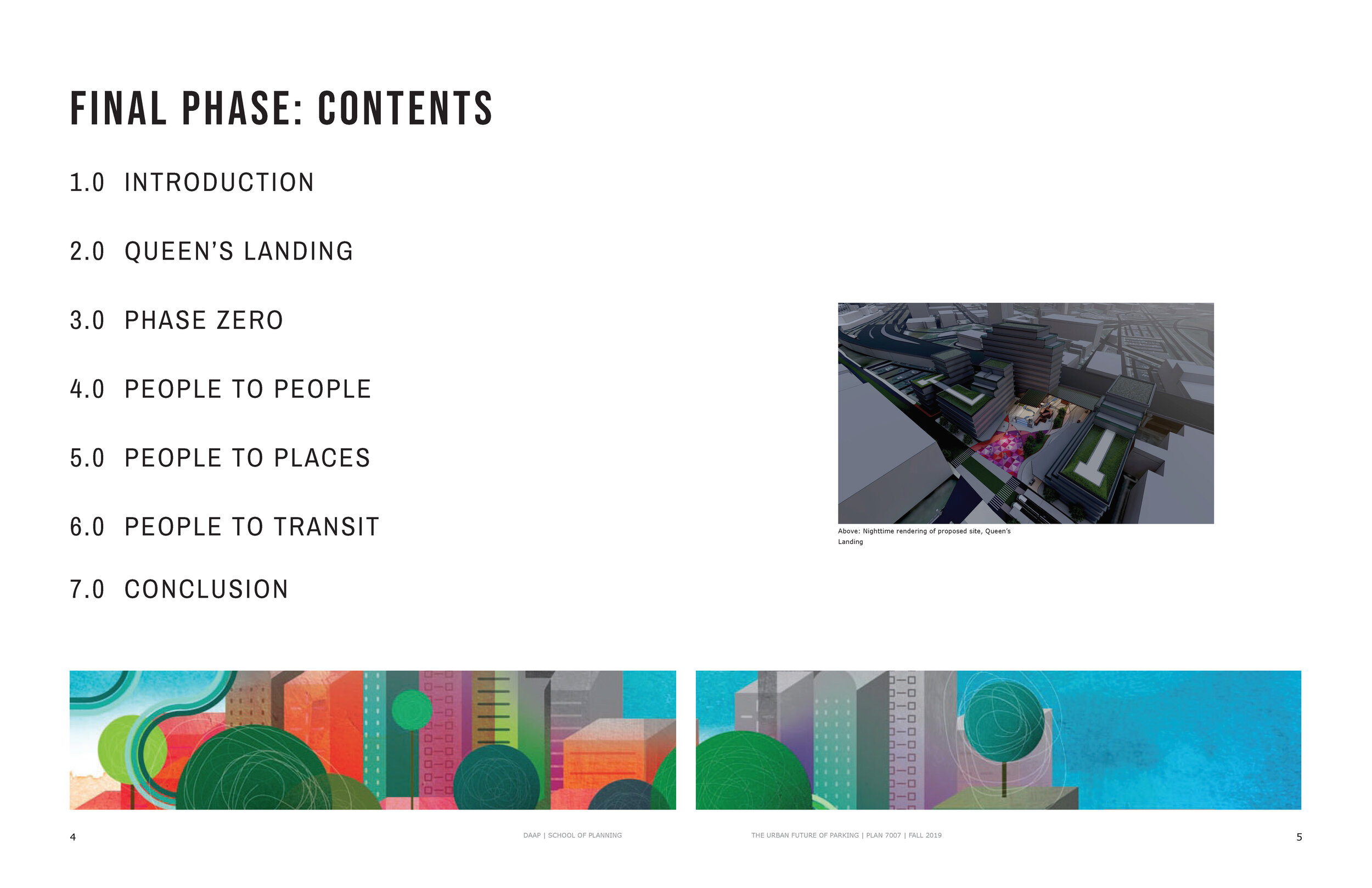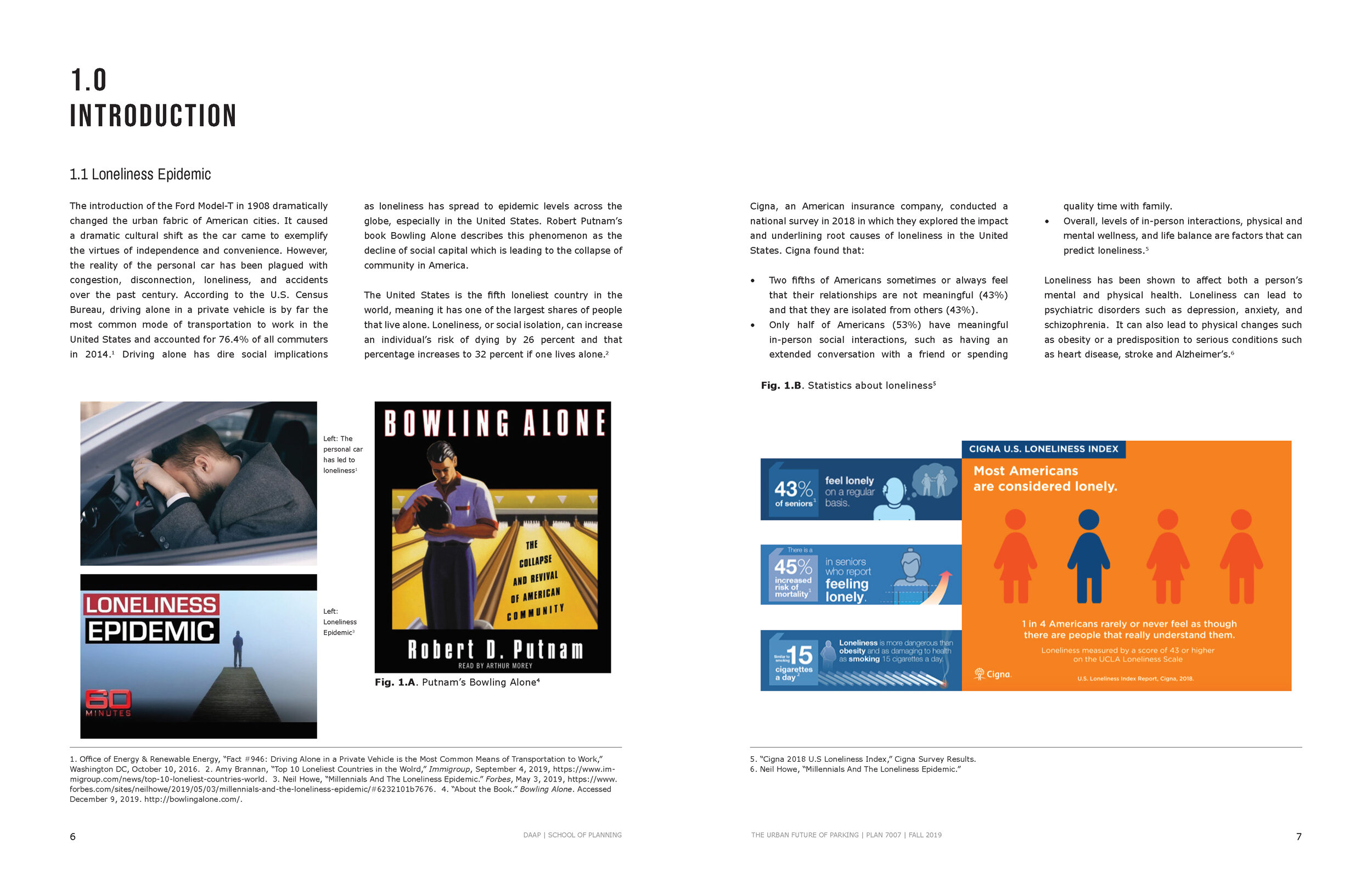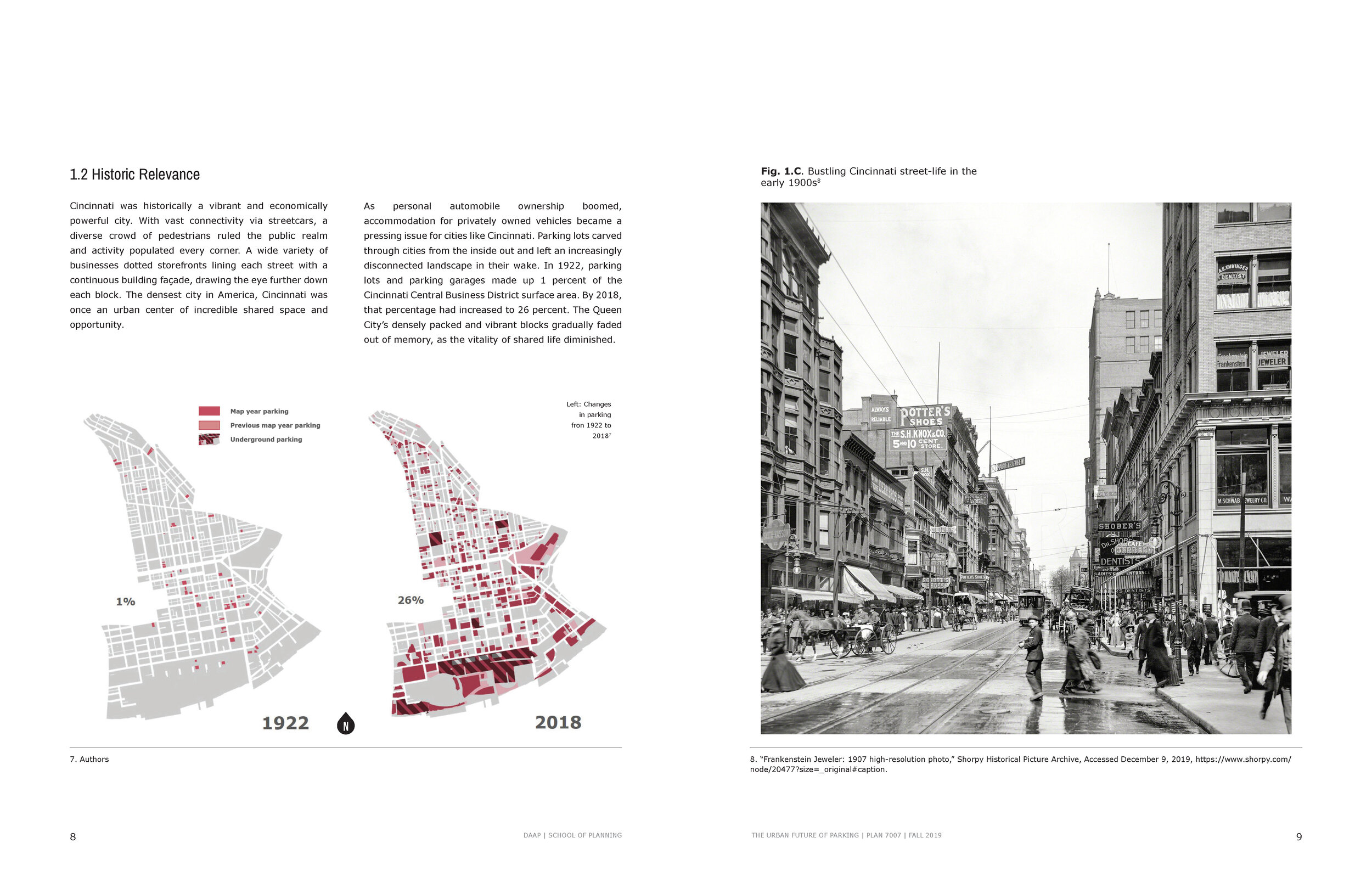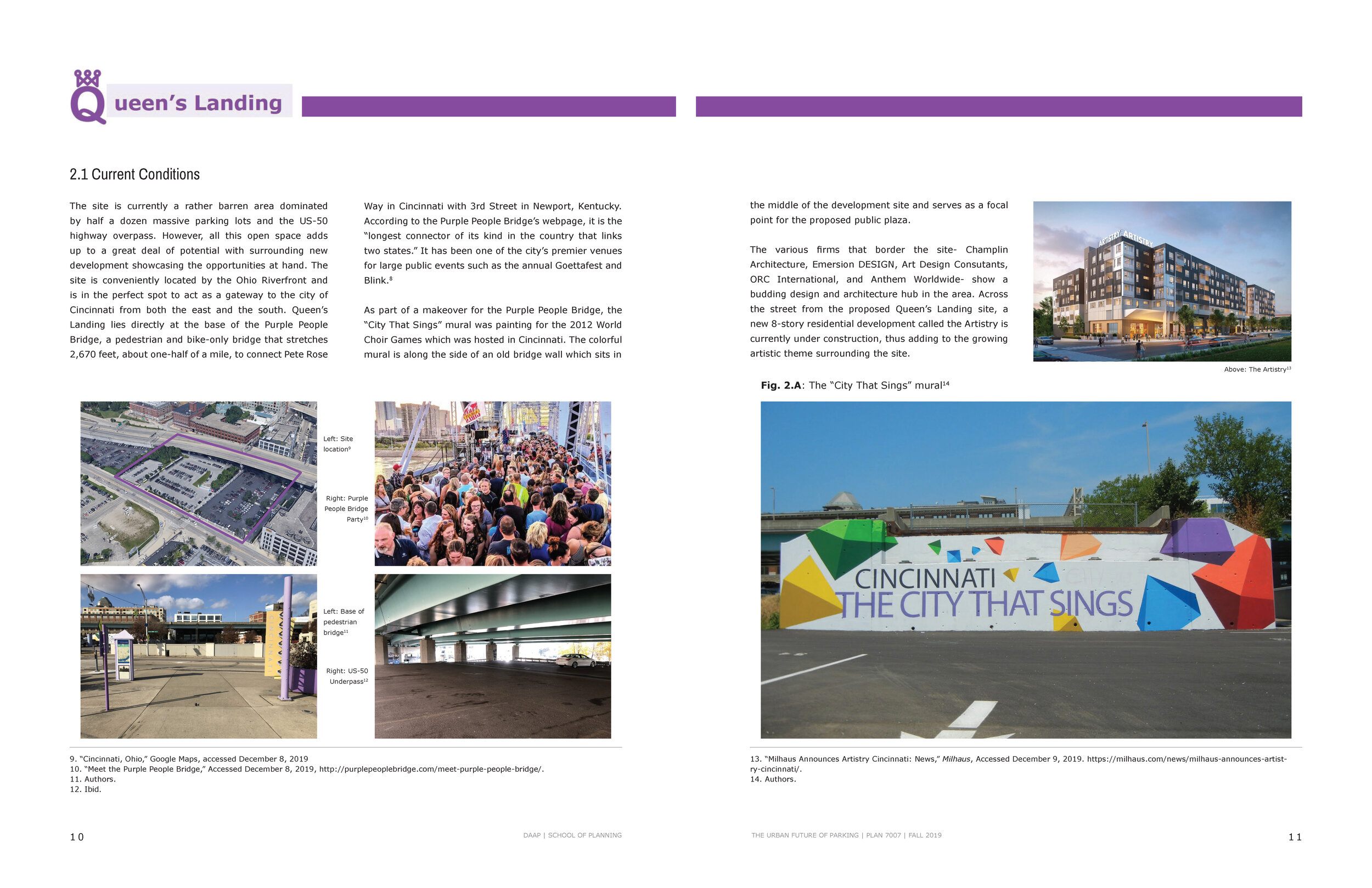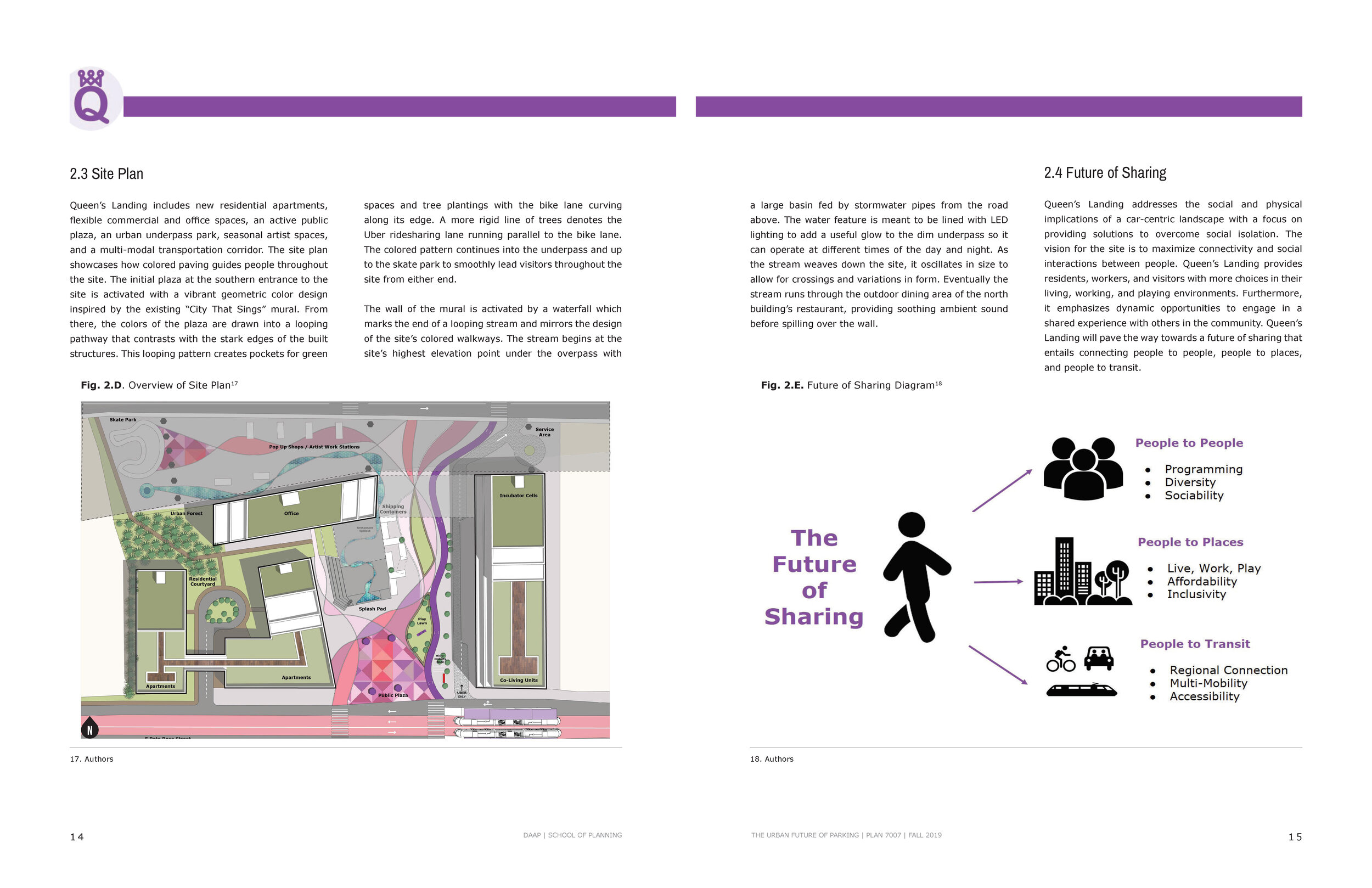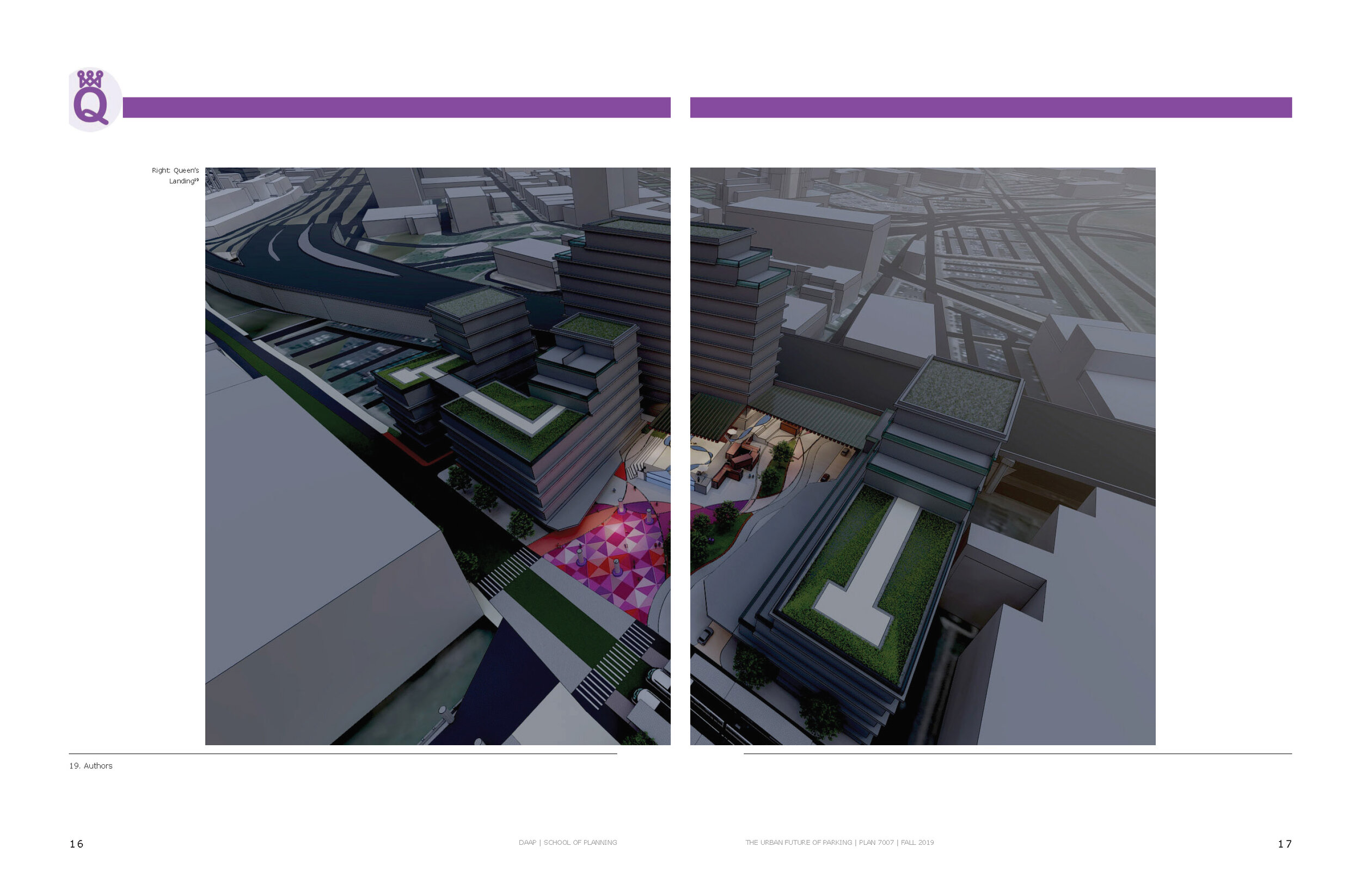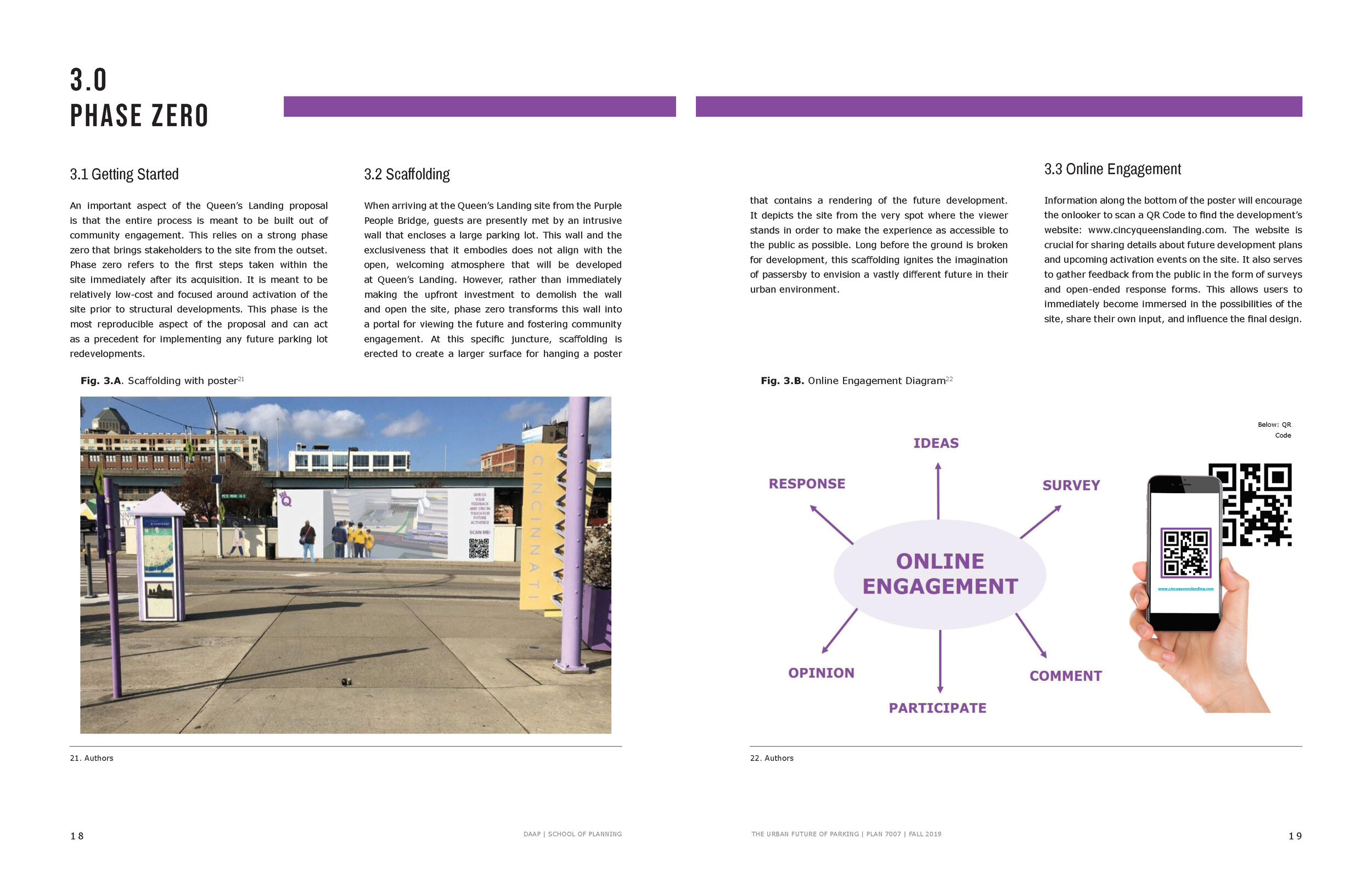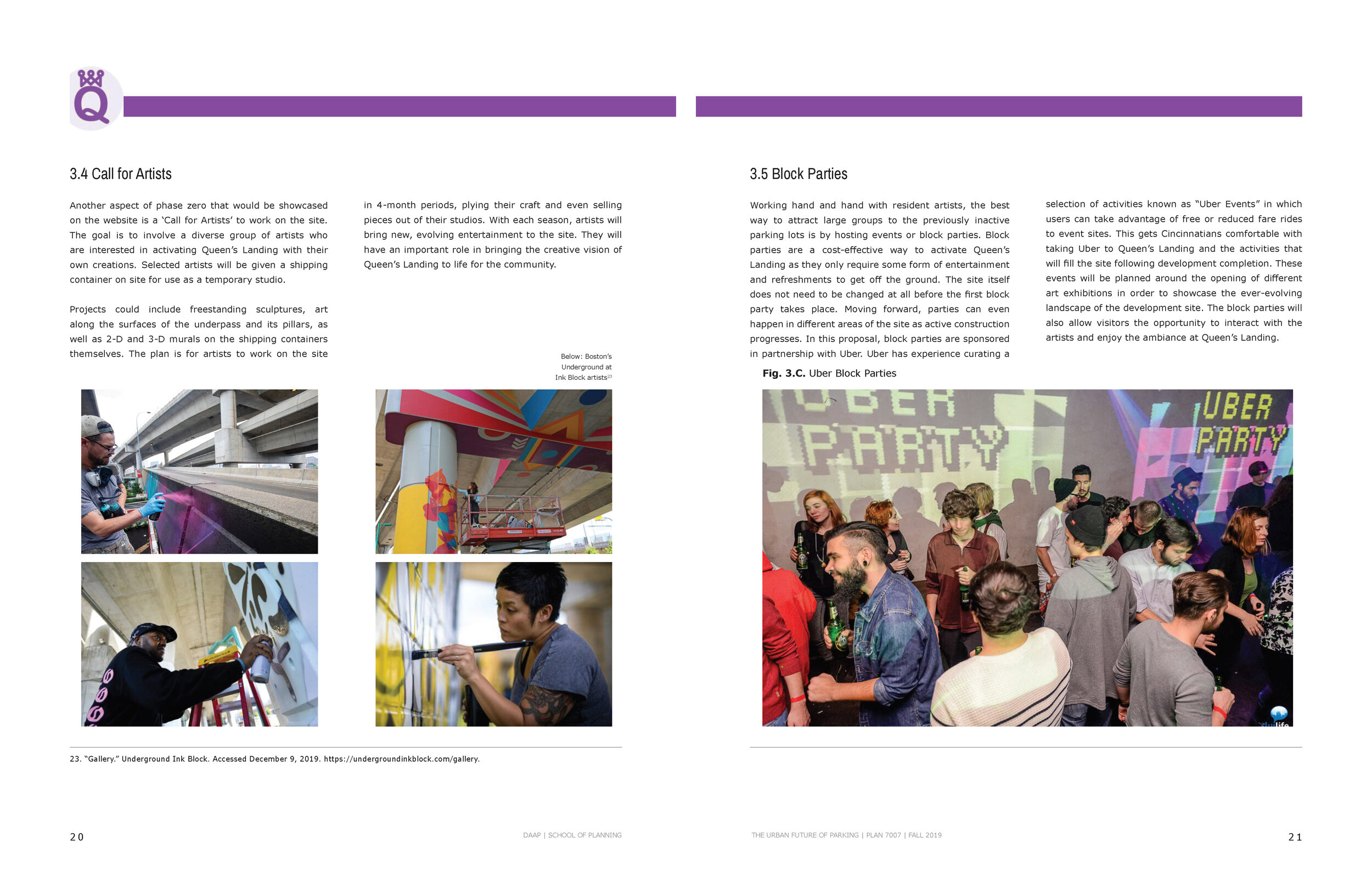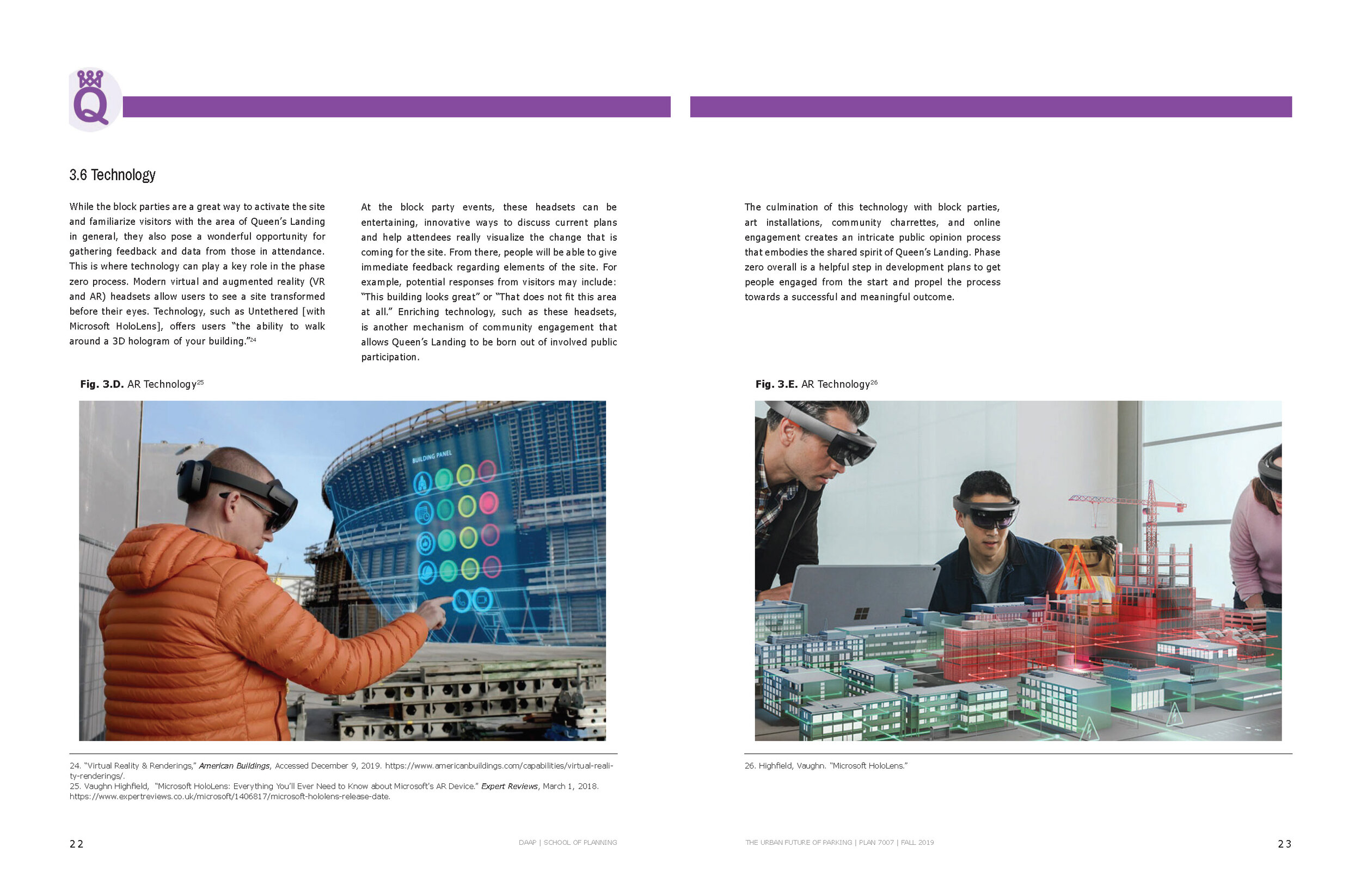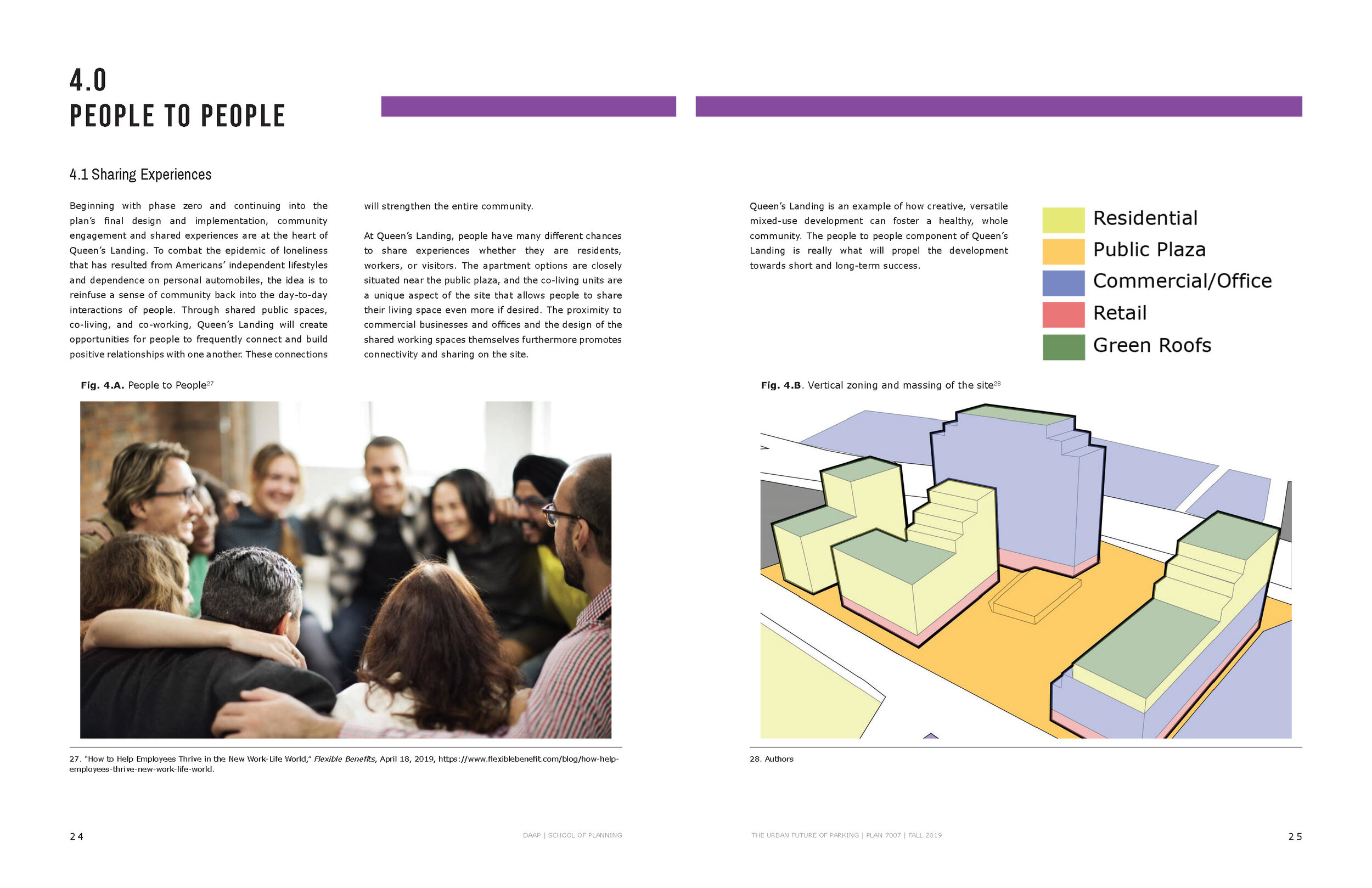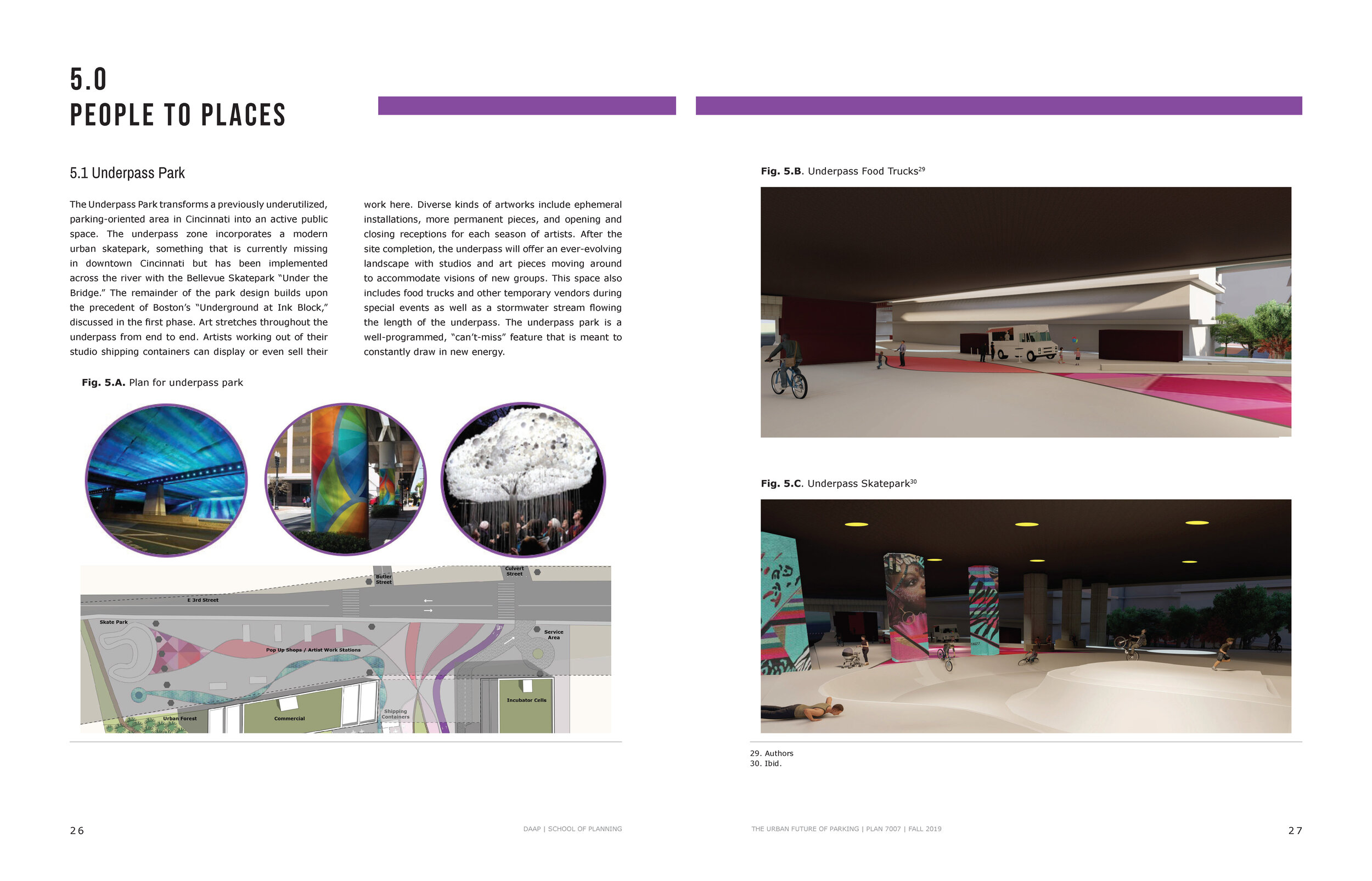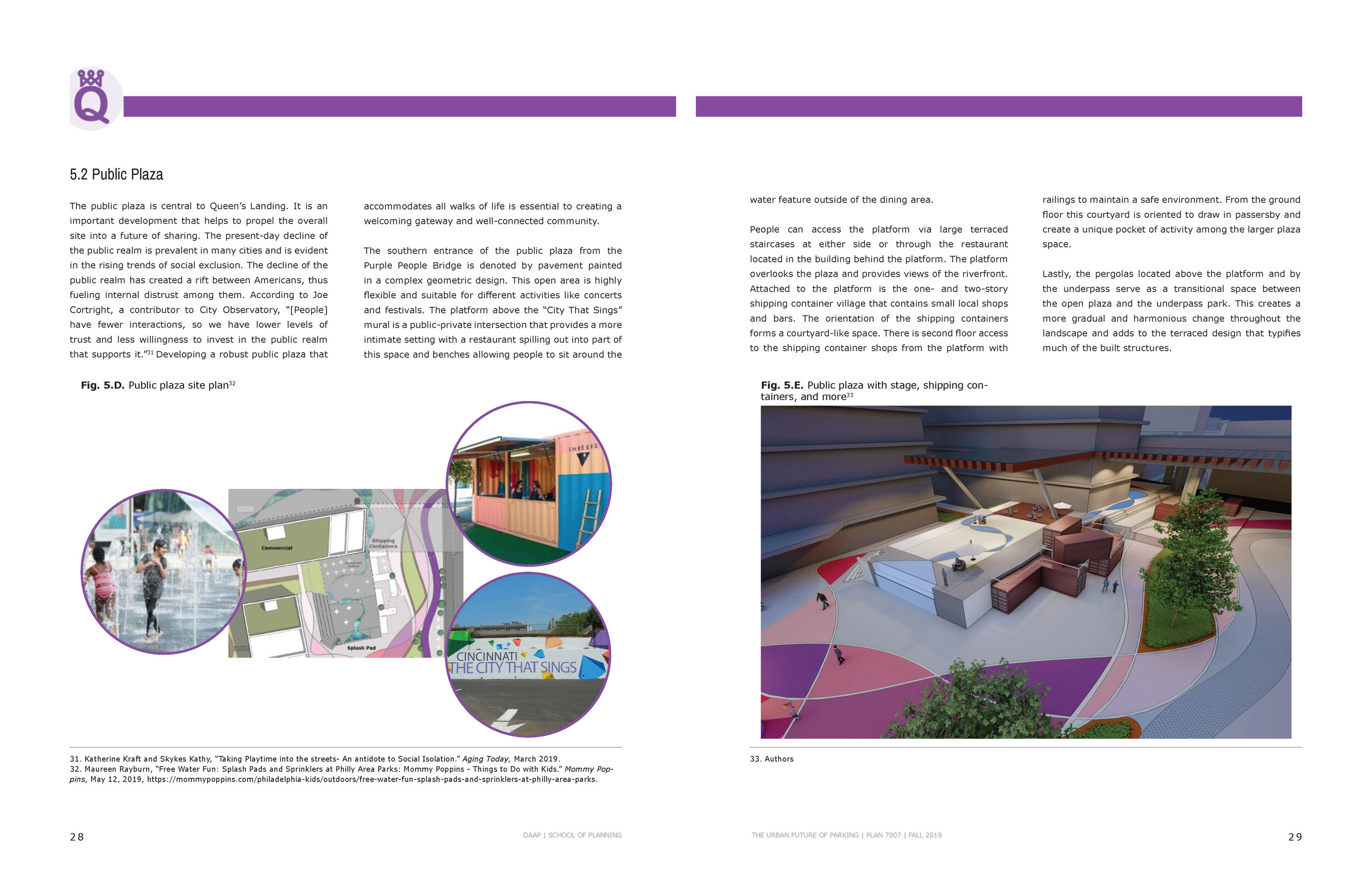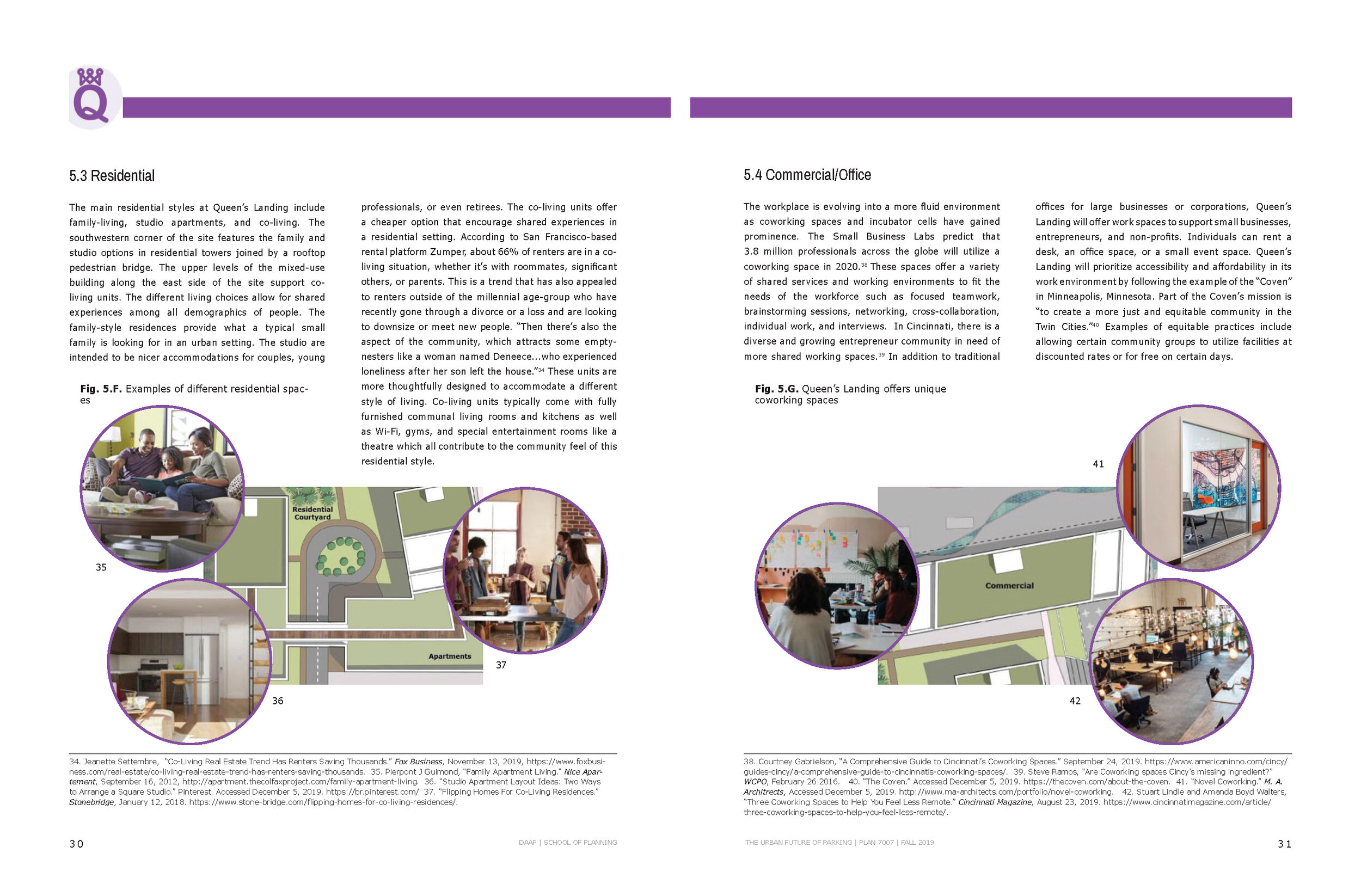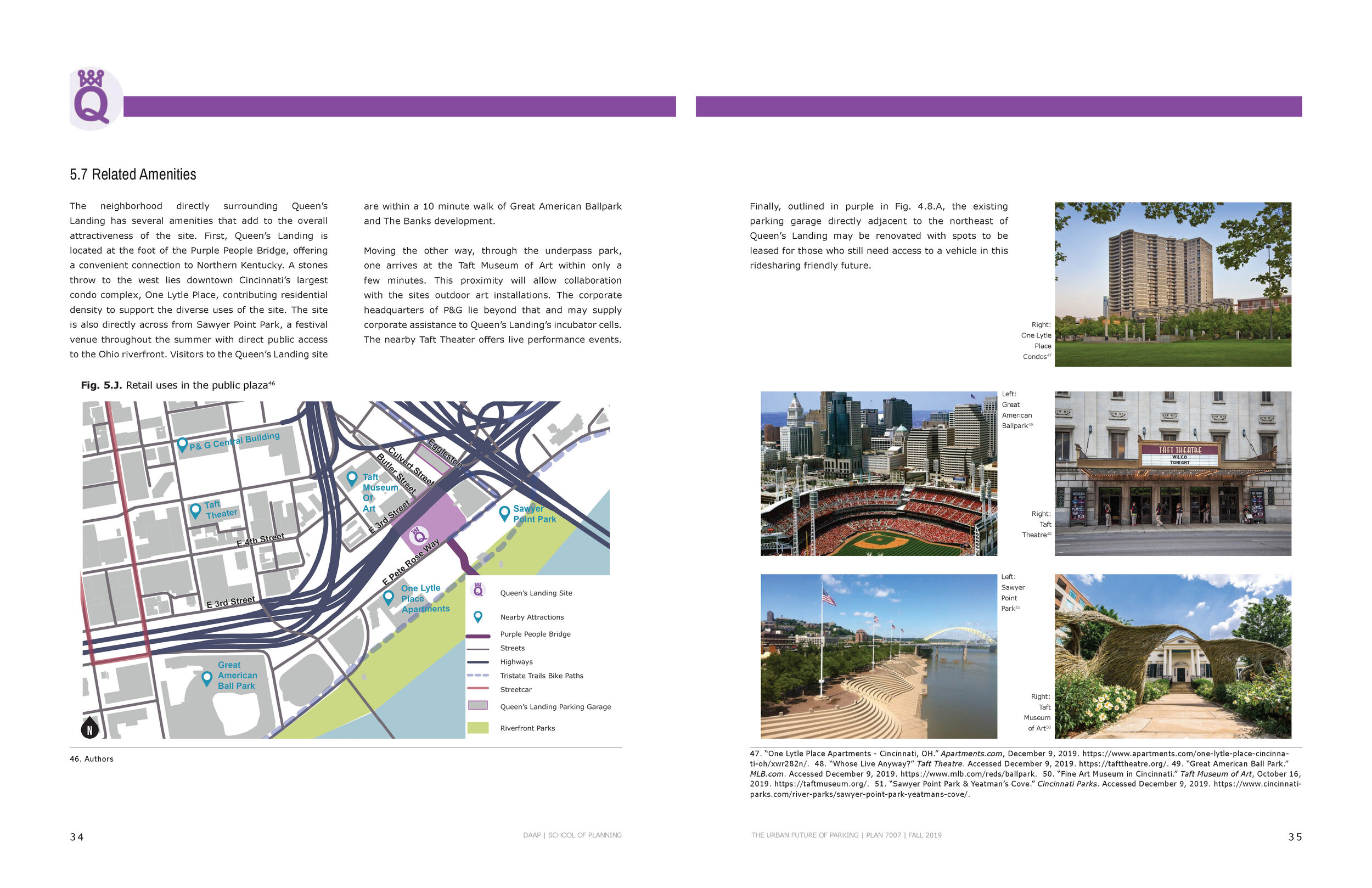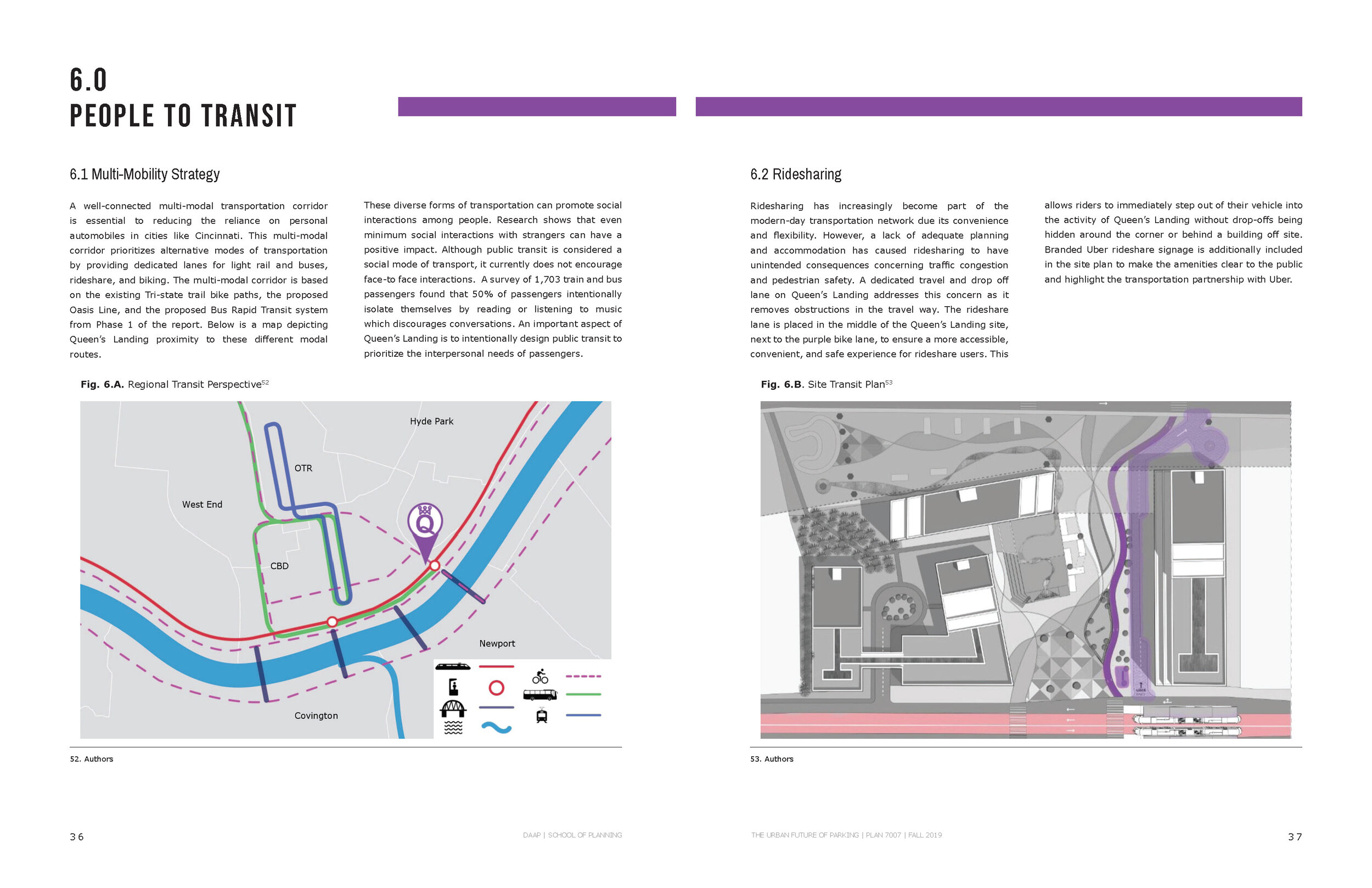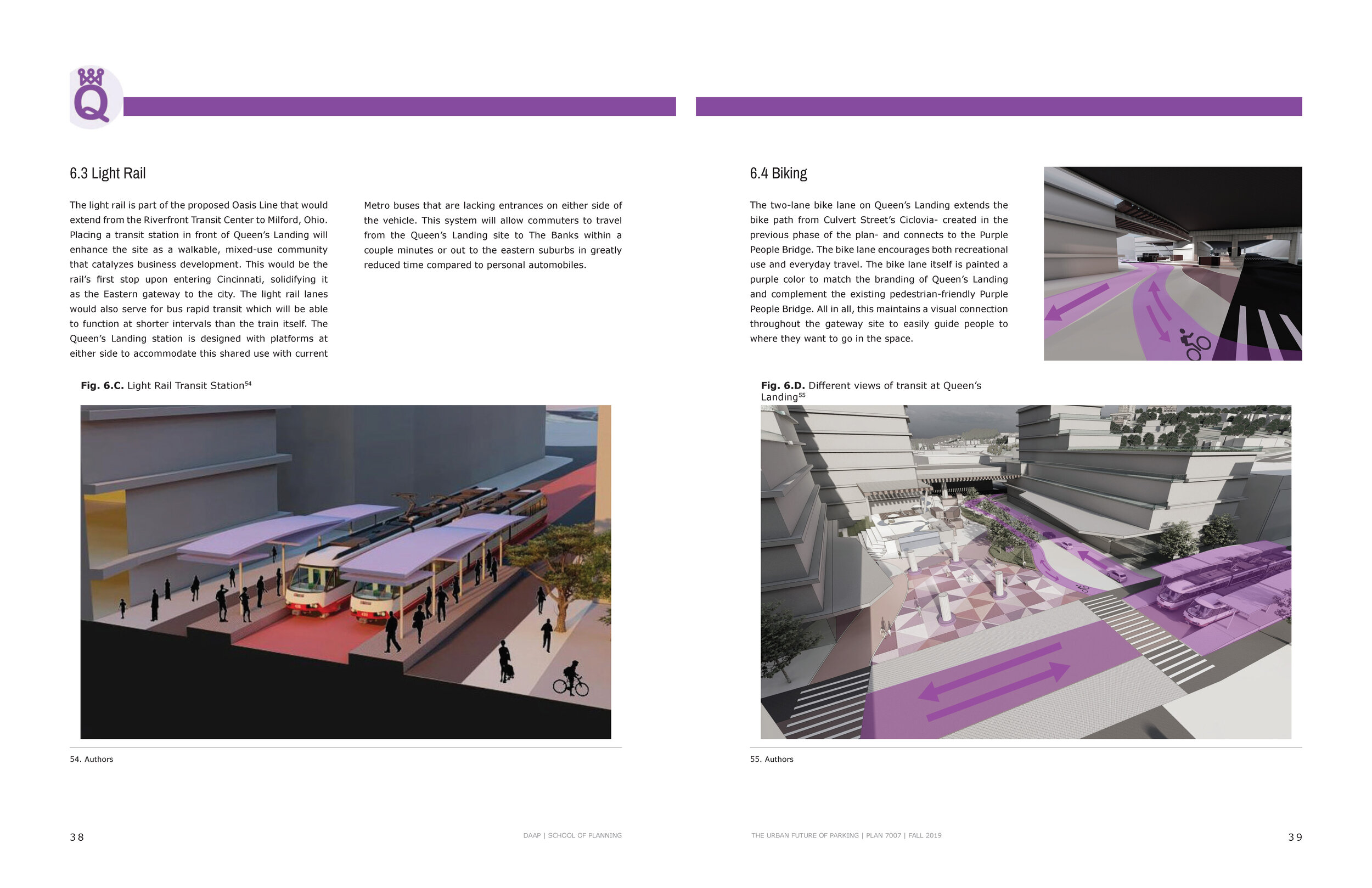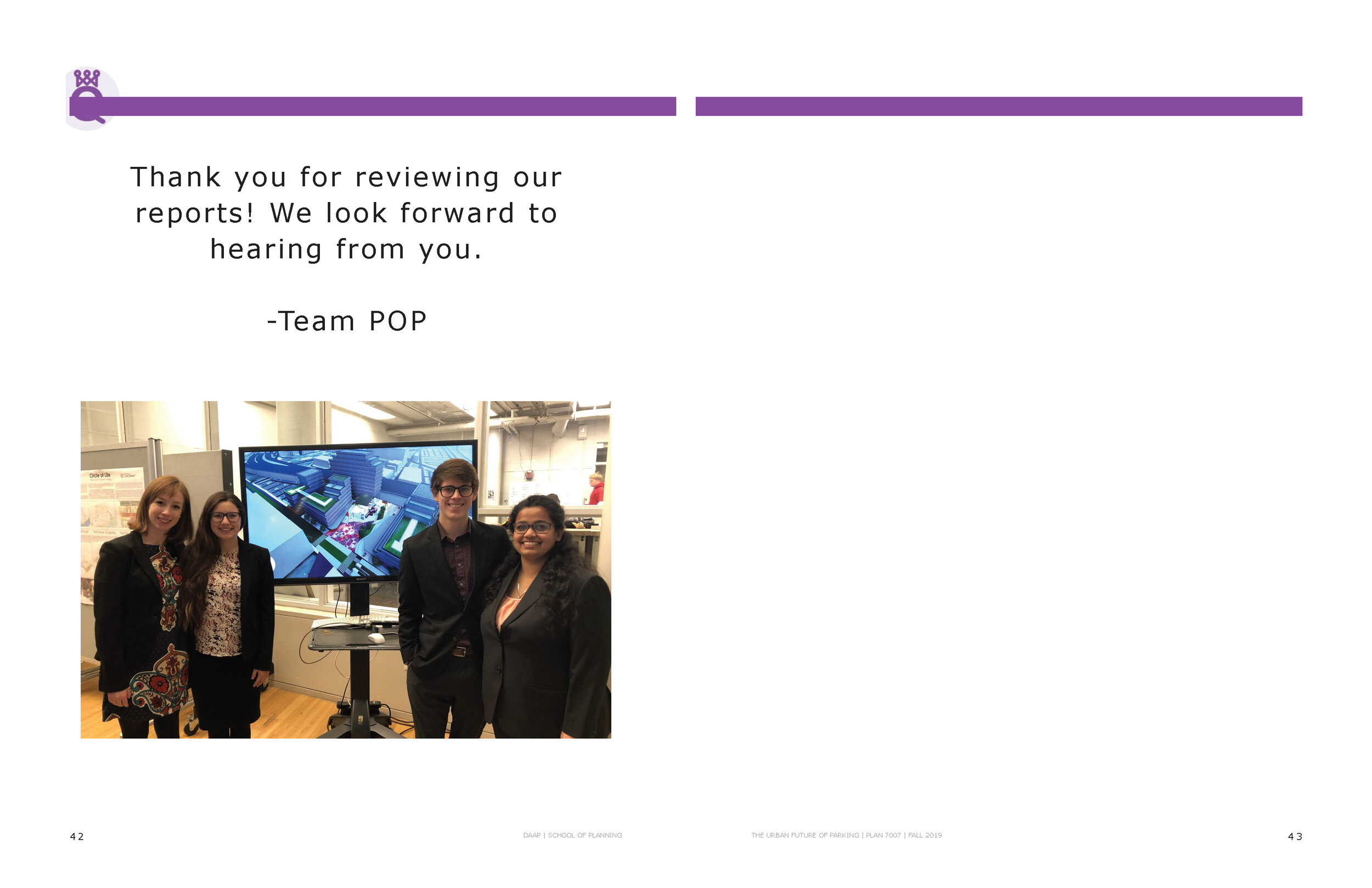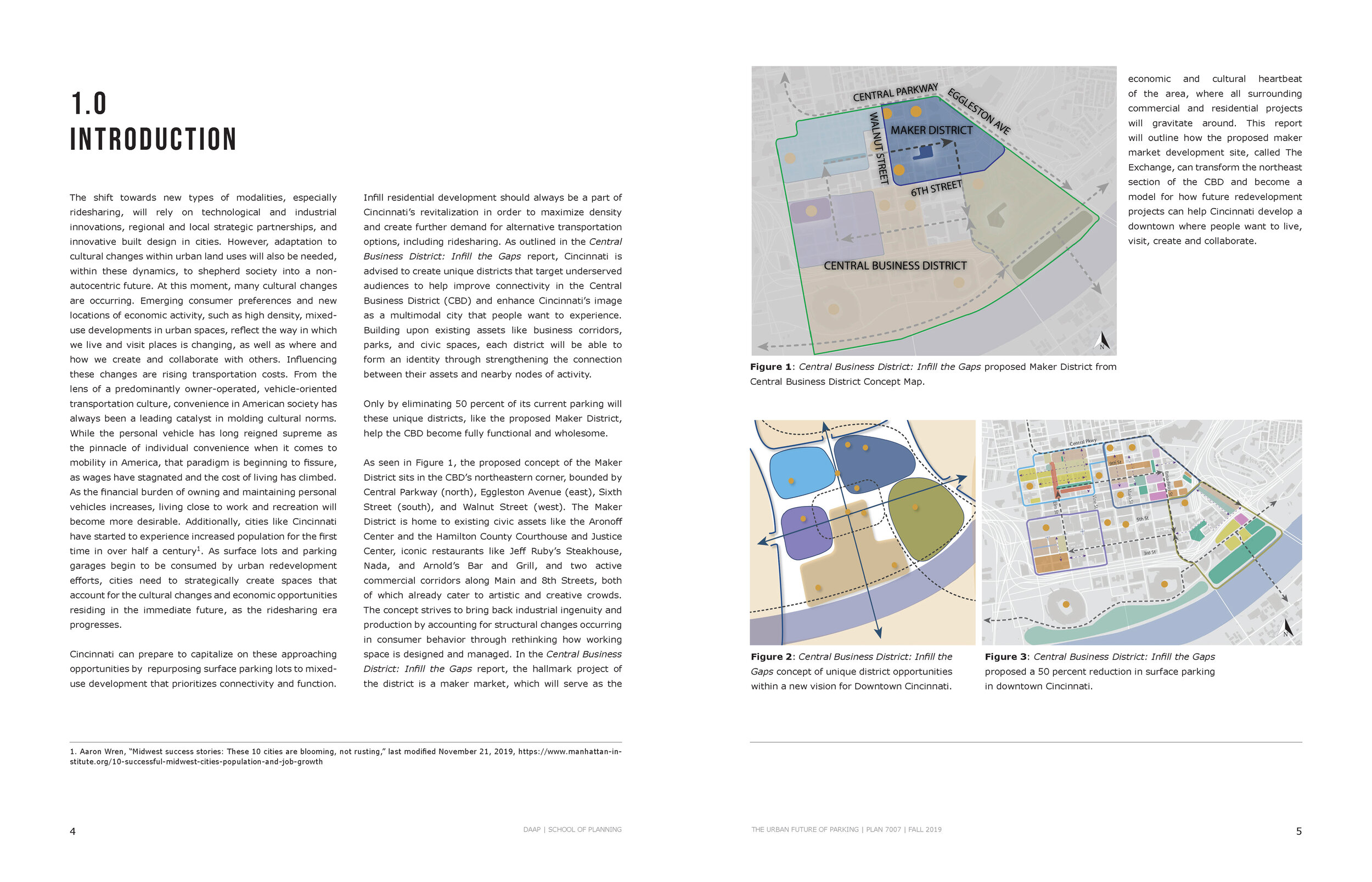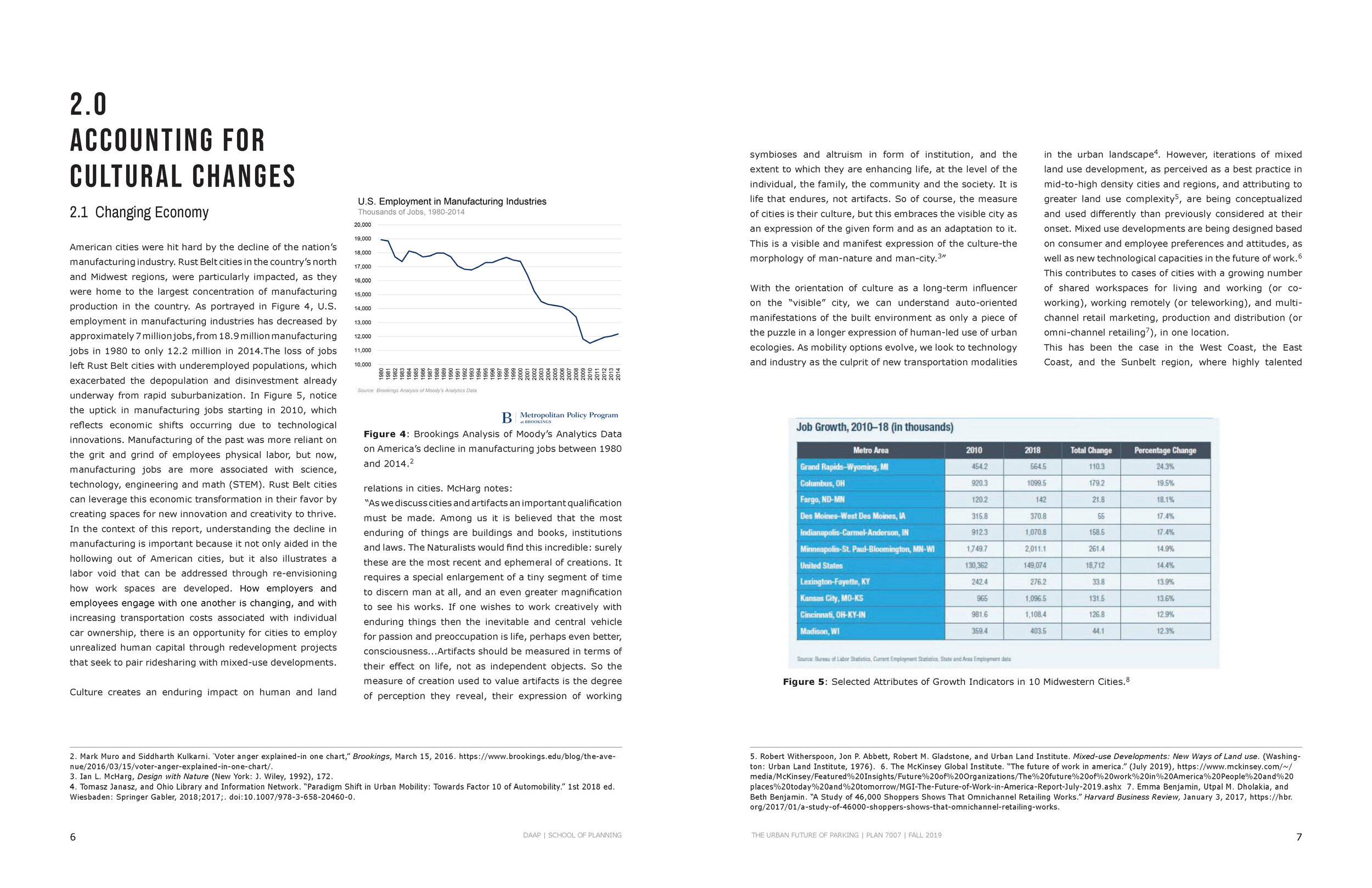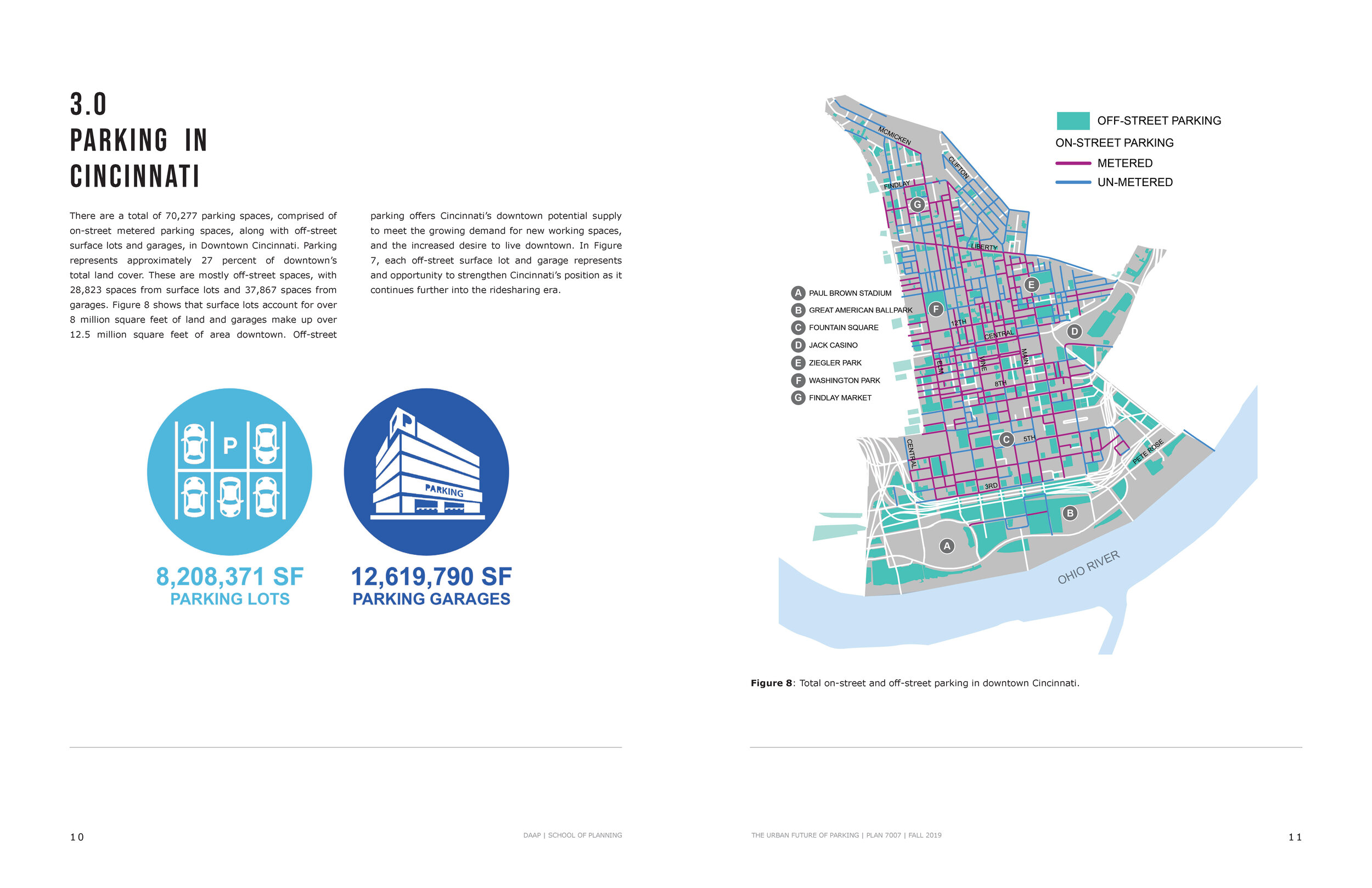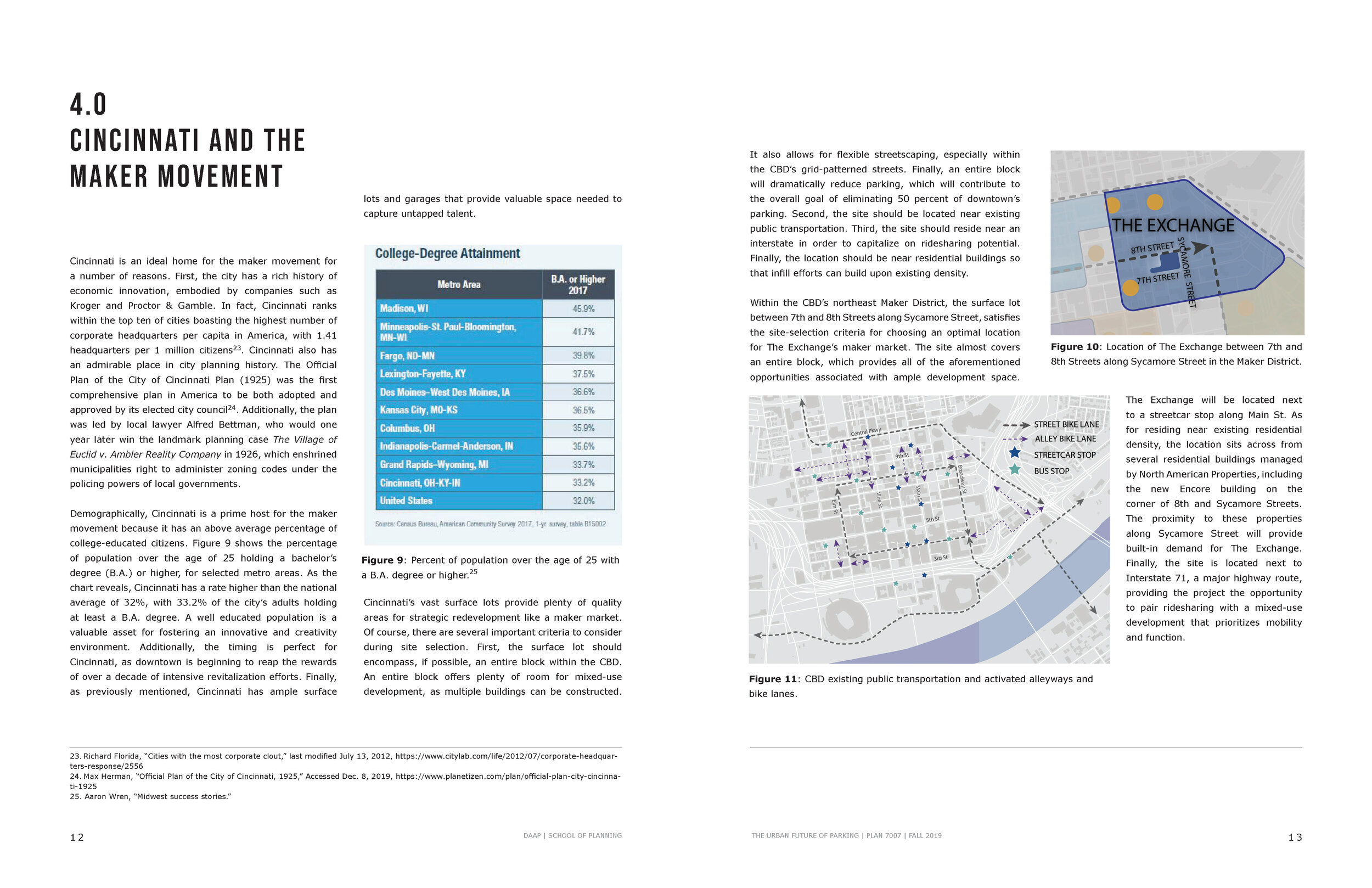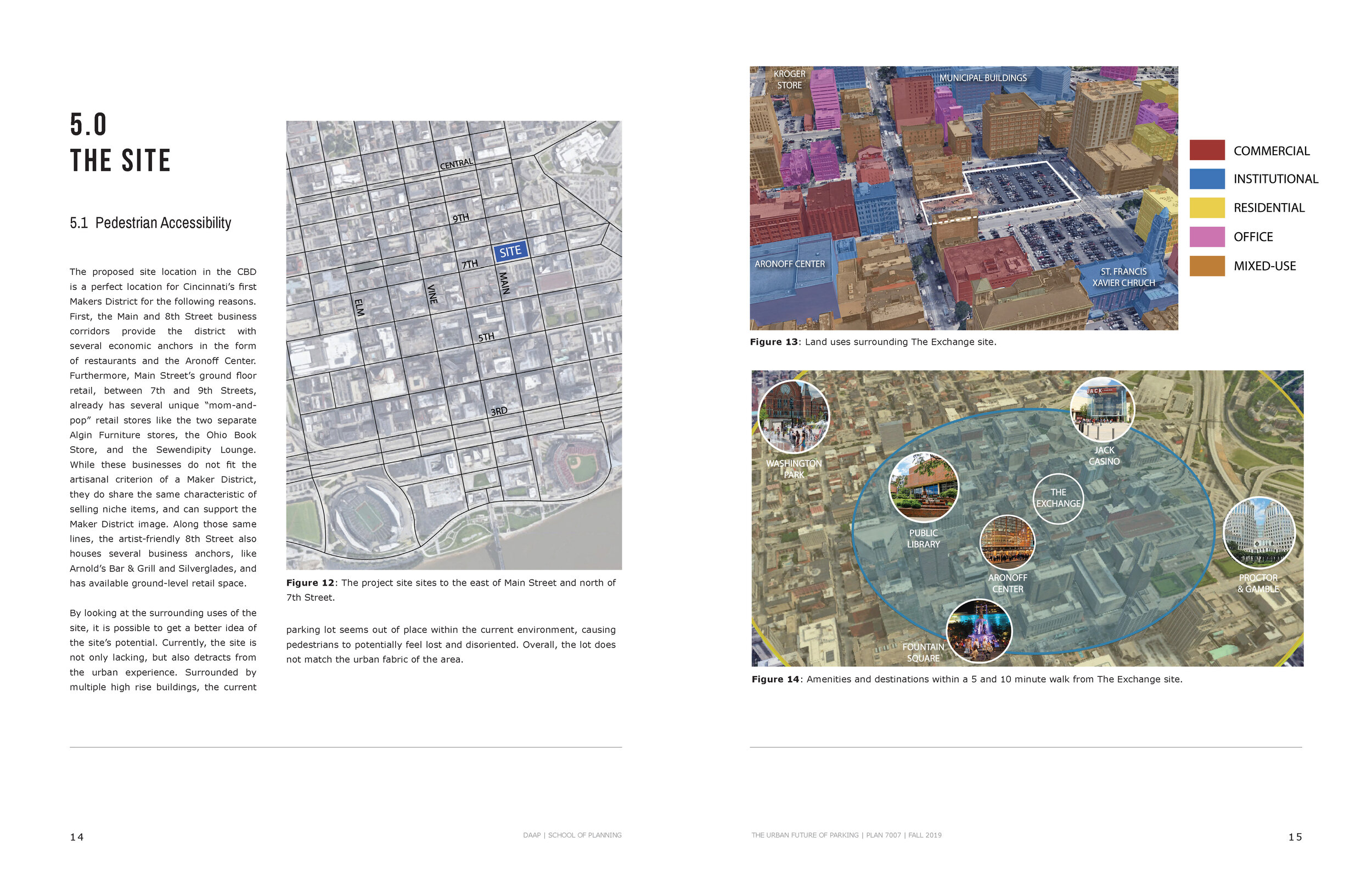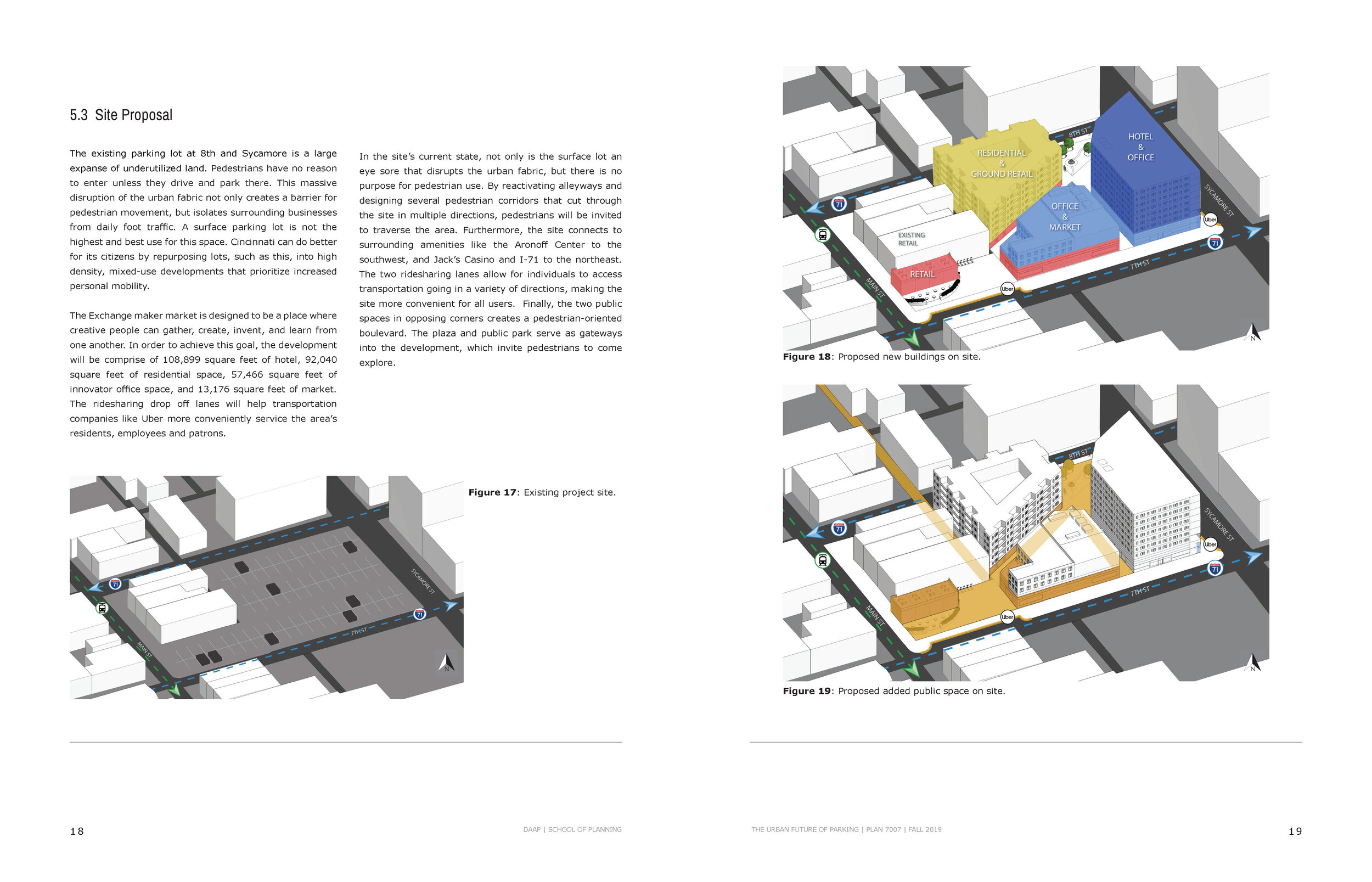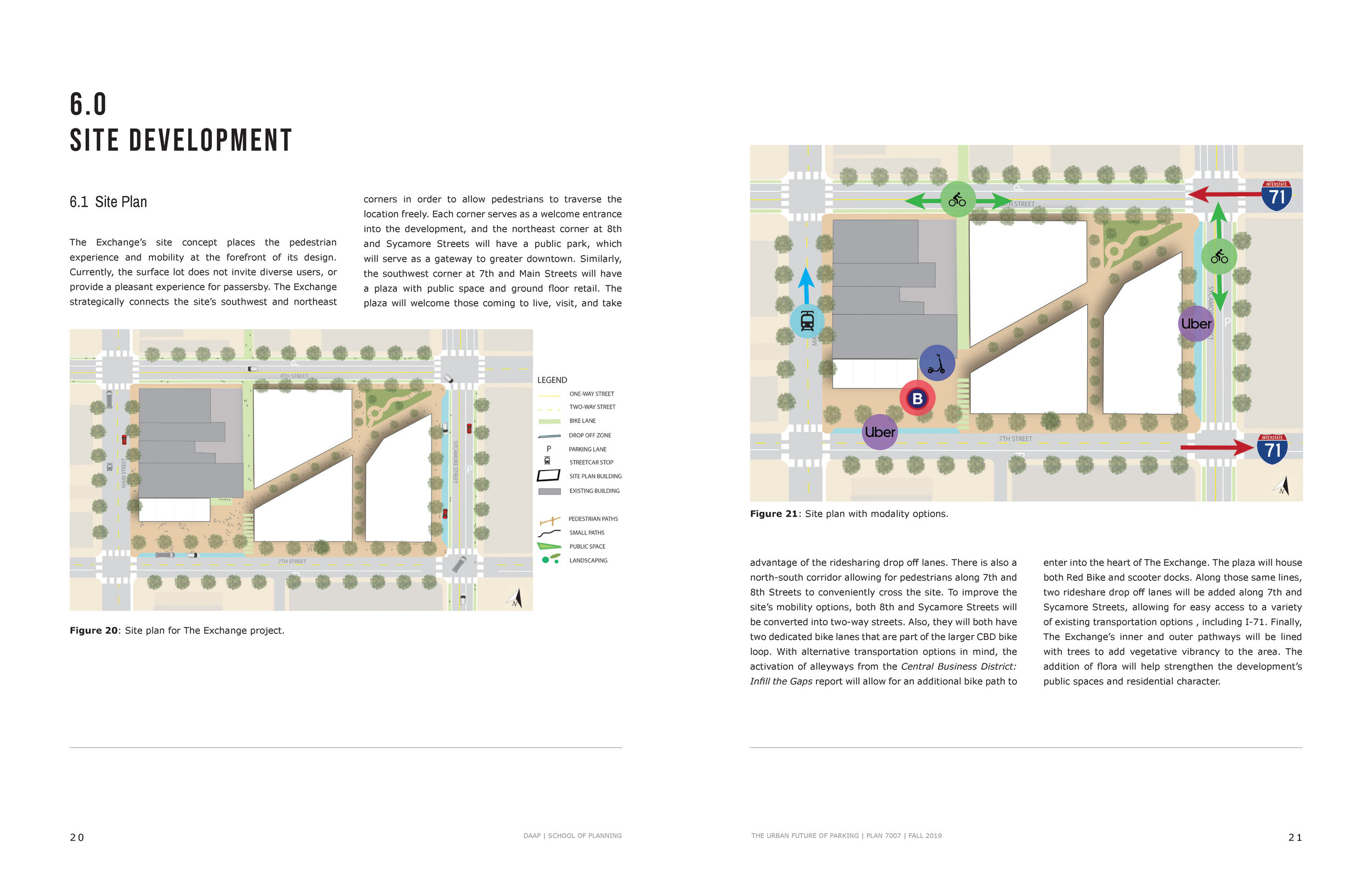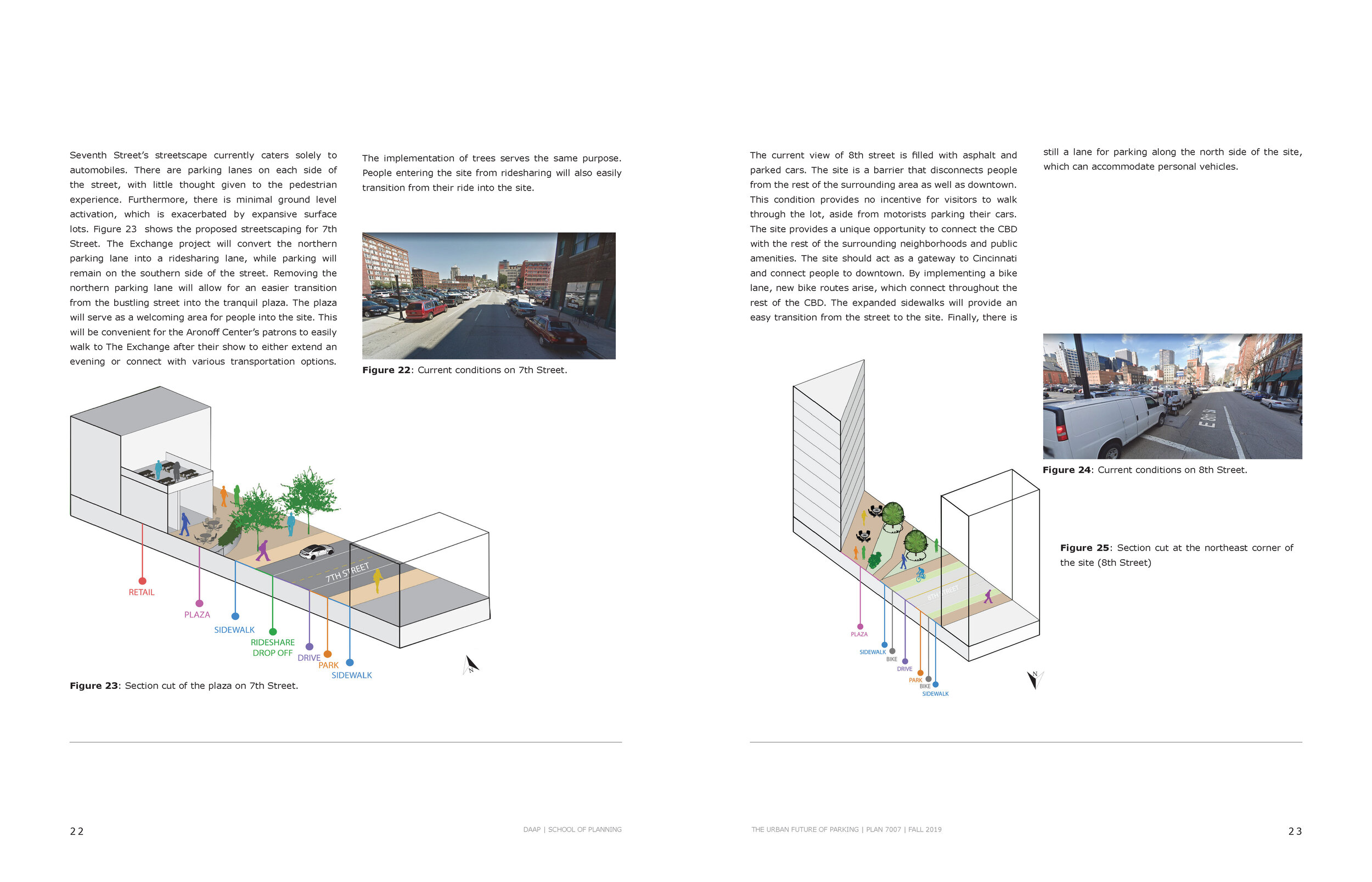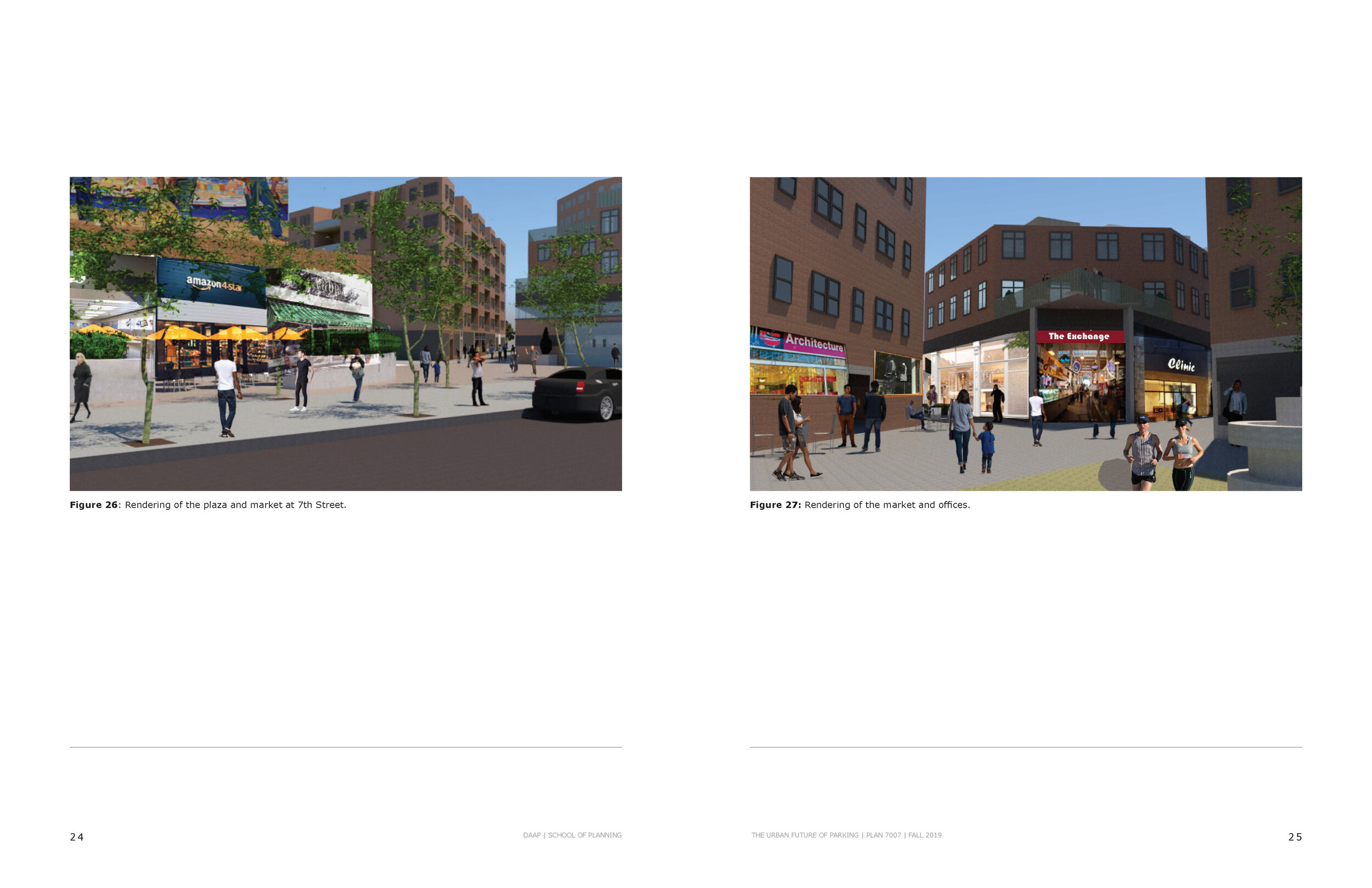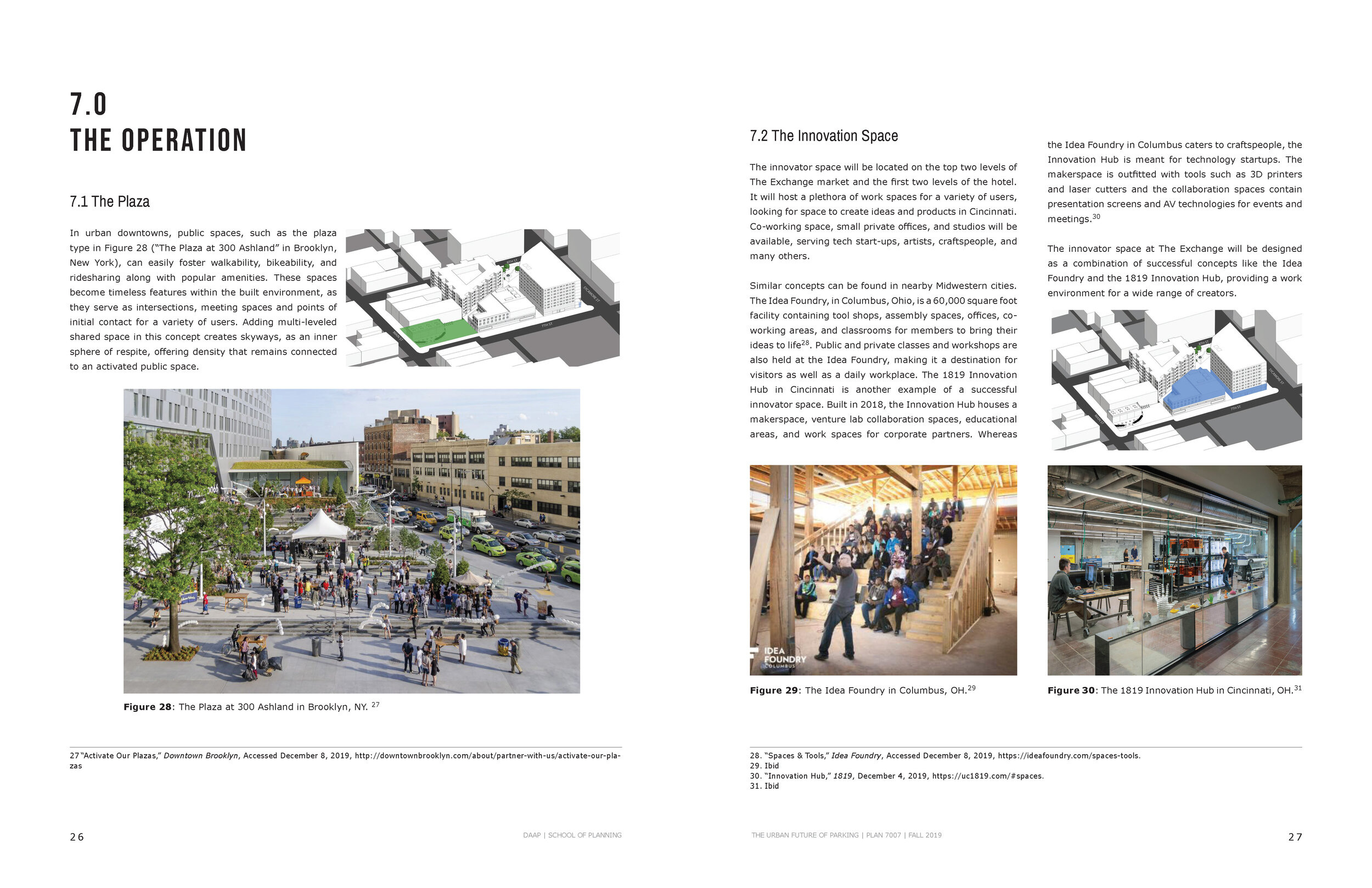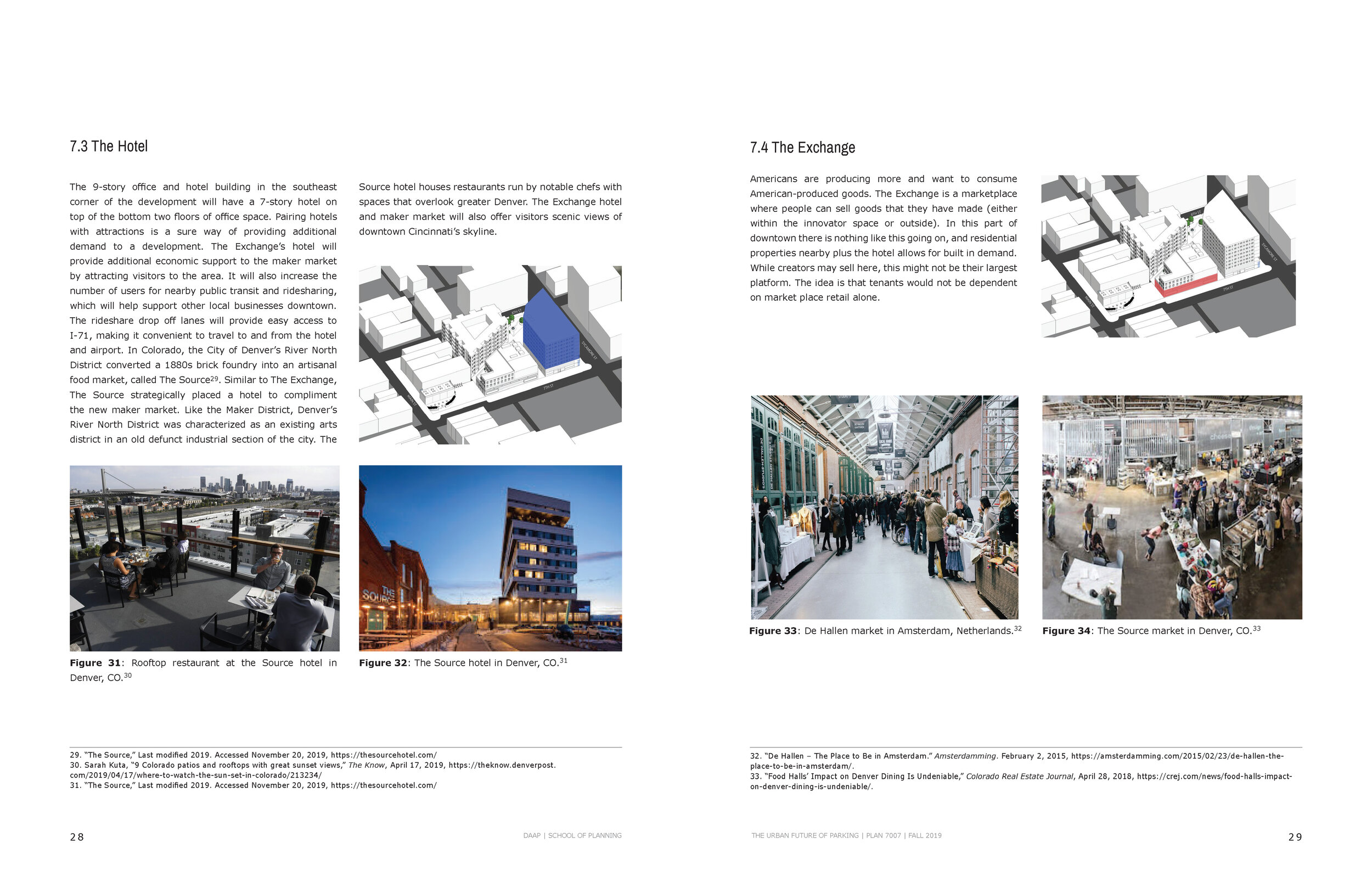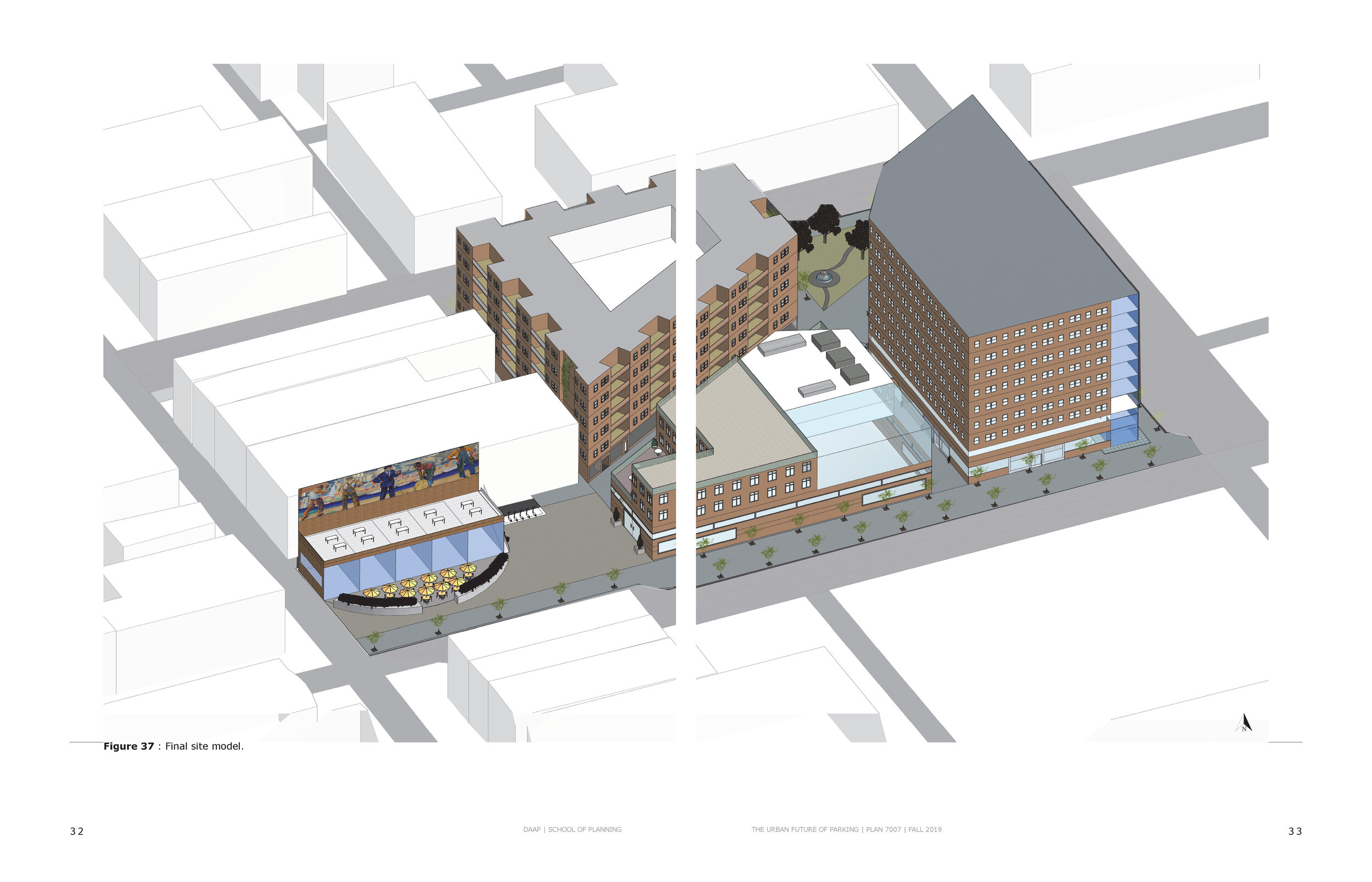PLAN7007 FUTURE OF PARKING
/ UNIVERSITY OF CINCINNATI - DAAP - SCHOOL OF PLANNING
Course Learning Goals
This course was designed for second-year students in the MCP program, as well as architecture and engineering students. Its goal is to give the students the opportunity to use a variety of methods, approaches, and skills they have learned in previous years of school and professional practice, and apply them to real problems or projects within a studio or workshop setting. The course provides a place for gaining insight and knowledge on the planning process, citizen participation, how the political economy in the area influences planning recommendations and their implementation.
Upon the successful completion of the course, the students should be able to demonstrate specific knowledge on the following:
• Understanding the planning process and the dynamics and issues in engaging the public in plan making;
• Apply methods to complex situations in order to analyze and evaluate them. Synthesize findings and evaluations to prepare planning interventions and strategies for implementation;
• Work in a team setting to accomplish individual tasks on time and with quality, in order to complete the workshop project;
• Interact with the public in a public presentation setting, make effective presentations, and how to gain feedback;
• Prepare professional-grade planning documents, including text, tables, maps, drawings, images, and a planning document that includes the work produced during the workshop.
Co-Taught w/
Ryan Geismar + Conrad Kickert
Final Jury Presentations - Class Photo
COURSE INTRODUCTION
Over the next decade, we will increasingly use shared mobility instead of our own vehicles. Already, one-third of Americans use ride-hailing apps for their mobility needs, and the market is still rapidly expanding. Uber alone completes 14 million trips each day, and controls about two-thirds of the American rideshare market. And we are only at the dawn of the autonomous vehicle era, expected to accelerate ride-sharing and transform mobility patterns faster than ever before. Even in their testing phase, Uber’s 250 self-driving cars have driven millions of miles over tens of thousands of passenger trips. While the future holds many unknowns, many analysts expect the continued evolution in ride-sharing and autonomous mobility to significantly affect the way we move around cities - including the vehicle we will use, the distances we are willing to travel, and the places we will go.
These technological innovations will drastically alter our urban form and function as a result. Already, engineers and designers are rethinking the design of urban streets to function in the ride-sharing and autonomous vehicle era. Curbside pickup design and management is only the beginning of a radical rethinking of streets without drivers - potentially altering the way we interact between pedestrians, cars, and public transportation. Transportation planners and engineers anticipate radically changing mobility patterns. Ridesharing is already increasing the Vehicle Miles Traveled in many cities, while simultaneously dampening demand for public transit - veering toward the “hell” scenario that transportation scholar Robin Chase had philosophized in 2014.
Then again, shared mobility has numerous potential benefits for cities and citizens, especially when it comes to efficient use of space. If car ownership indeed makes way for ridership, Americans will bid farewell to expensive car purchases, payments, and repairs. American cities will gladly bid farewell to the swaths of car parking lots - estimated to contain up to 2 billion spaces or 6 spaces for every American.


